C CATHEDRAL MUSIC




































Simply the best in sampled digital sound, with no gimmicks. This is a Makin Westmorland organ.

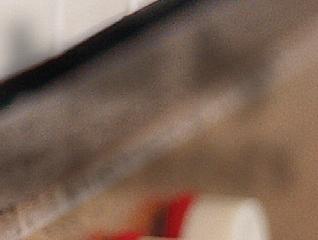
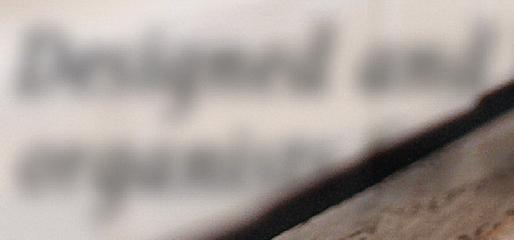
the difference. Our Westmorland Custom instruments use a separate sound-sample for every note of every rank, and the realism is simply breathtaking! You are actually listening to the sound of organ pipes themselves, and not to something artificially-generated by computer, or based on only a few individual samples. What’s more, Makin uses genuine English pipe samples, from the finest organs in the country, to create that true English sound for which we are renowned. Experience our top-quality consoles, bespoke speaker systems, and unrivalled customer service. You will soon understand why customers choose Makin, rather than settle for second-best. to us. Together we can draw up your own unique specification today. our website for customer testimonials, details of installations, events local to you, and much, much more.
Makin Westmorland. Serious organs for the discerning musician. Someone like you.













You don’t buy a Makin Organ … you invest in one.


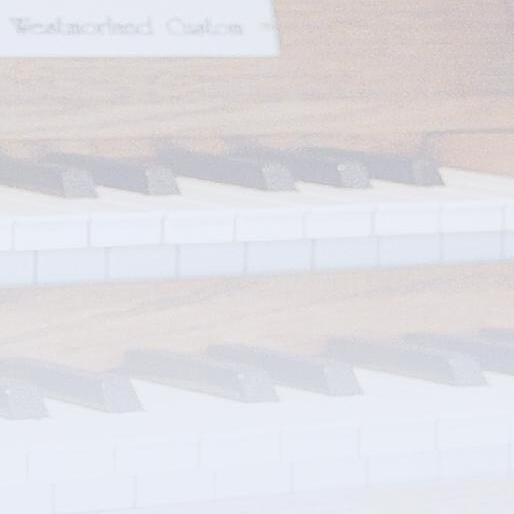
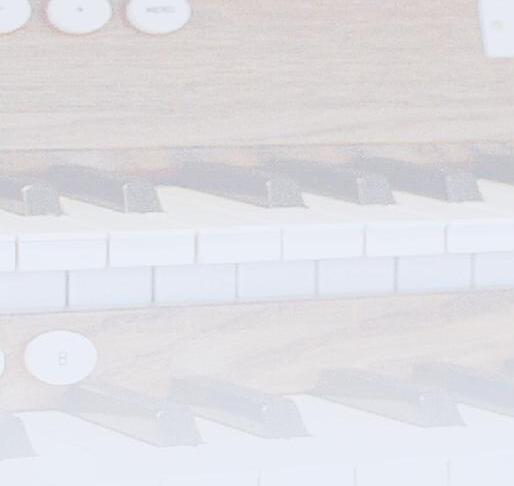

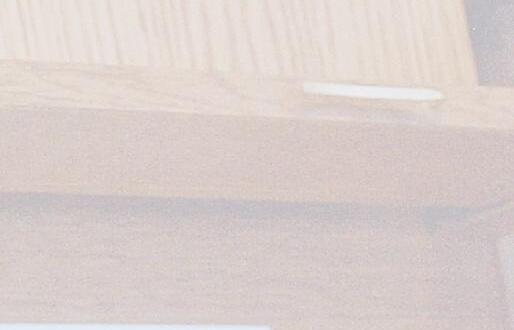


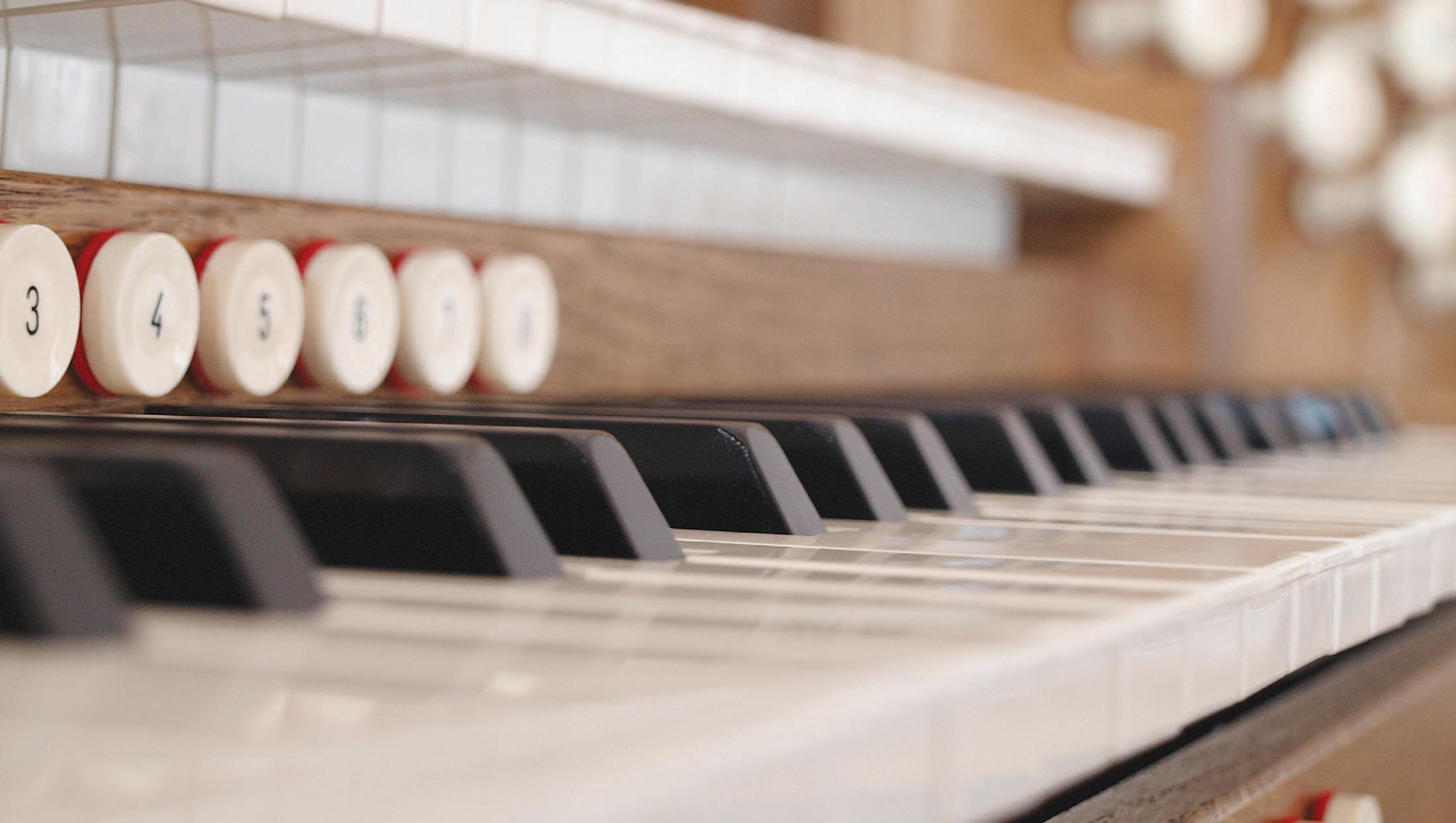
For more details and a brochure please telephone 01706 888100



CATHEDRAL MUSIC is published twice a year, in May and November
ISSN 1363-6960 NOVEMBER 2011
Editor Mrs Sooty Asquith, 8 Colinette Road, London, SW15 6QQ sooty.asquith@btinternet.com
Deputy Editor Roger Tucker
Editorial Advisers
David Flood & Matthew Owens
Production Manager Graham Hermon FCM email info@fcm.org.uk Website www.fcm.org.uk
The views expressed in articles are those of the contributor and do not necessarily represent any official policy of Friends of Cathedral Music. Likewise, advertisements are printed in good faith. Their inclusion does not imply endorsement by FCM.
All communications regarding advertising should be addressed to:
Roger Tucker, 16 Rodenhurst Road, London, SW4 8AR 0208 674 4916 cathedral_music@yahoo.co.uk
All communications regarding membership should be addressed to: FCM Membership, 27 Old Gloucester Street, London, WC1N 3AX Tel: 0845 644 3721 International: (+44) 1727-856087 info@fcm.org.uk
Every effort has been made to determine copyright on illustrations used. We apologise to any individuals we may have inadvertently missed. The editor would be glad to correct any omissions.
Designed and produced by MYPEC
The Old Pottery, Fulneck, Pudsey, Leeds, LS28 8NT 0113 255 6866 info@mypec.co.uk www.mypec.co.uk
Cover
In the last issue of CATHEDRAL MUSIC Andrew Reid at Peterborough talked about the contentious issue of female lay clerks in the traditional cathedral choir, which article sufficiently moved Peter Giles to put pen to paper in support of the all-male tradition. His response may cause you to have second or even third thoughts about the right way forward for music foundations in our great cathedrals. Two forthcoming publications may also make you look ahead: the fifth book in the much loved and world-famous Carols for Choirs series, and the remarkable tribute to Queen Elizabeth II in her diamond jubilee year, Choirbook for The Queen, to be launched at a special evensong service on November 22 at Southwark Cathedral. FCM chairman Peter Toyne (see page 5) is a member of the committee responsible for the inception and development of this project, which will see copies of the Choirbook made available to every cathedral and most college choirs throughout the country. You
will find a full list of anthems included in this historical volume, partially funded by a £20,000 grant from FCM, on page 6. In this issue we are celebrating several long-serving and wonderful musicians; what is it that encourages people to stay in the same place for a long time? What are the challenges, and the rewards? You might ask the same of Andrew Palmer, editor of this magazine for the last 20 years. An extraordinary achievement, and a true labour of love; for more about Andrew, read Roger Tucker’s piece –one of the most difficult he has ever had to write, he says. And as well as our usual reviews, profiles and items of news of general interest, there is an in-depth report on the state of cathedral music in Australia, some thoughts on being a Precentor from the current and previous incumbents at St Paul’s Cathedral, and notes on running a Golden Jubilee celebration for one of our newest cathedrals, Coventry.
Sooty AsquithThe overworked cliché ‘what you see is what you get’ could not be less true of Andrew Palmer. He does not wear the credentials of his personal qualities on his sleeve; he is a very private, rather shy person – an unlikely choice for the editorship of FCM’s Annual Report at a time of change in 1991. The previous editor had just died, as well as our founder, the Revd Ronald Sibthorp. His successor as chairman, the Organist of St Paul’s Cathedral, Christopher Dearnley, had emigrated to Australia. The decision of the succeeding chairman, Alan Thurlow, to invite Andrew at the age of 26 to become editor can now be seen as an inspired choice: he handed him a blank slate, with no strings attached, other than budgetary limits. This was a huge challenge to someone whose only experience of the field had been as a cathedral chorister.
The contents of those early editions in the 1990s shows a clear-headed plan for developing the Annual Report into a magazine, with high quality paper and printing and the capacity to sustain advertising. The first challenge was to persuade the contributors that he wanted them to write significant articles for no payment. It was the success with which he did this that is one of his major achievements, given that the magazine was not going to achieve a circulation much outside the membership of FCM, in 1991 no more than 3000. Quite quickly, Andrew’s chosen contributors were not only delivering the goods but avidly reading one another’s thoughts on a very specialised range of topics – and thus swelling the pool of expertise to which
they were all contributing. The first UK magazine in the specialised field of cathedral music was rapidly gaining a reputation for well-informed writing, with new names appearing alongside familiar ones. The catalogue of articles over the twenty years tells the story very clearly.
In 1997 Andrew persuaded Council to agree to publish two editions per year and then a year later to switch to A4 size and thereby come into line with most of our competitors. This was widely welcomed and lifted the magazine onto a more competitive level. Over the years, it has never been necessary to defend or justify it, which is a testimony to Andrew’s judgement about content.
I was invited on board back in 1993, as a result of marking up all the typos and solecisms in the first of the new format editions (in a size in between A5 and A4). Andrew nailed me as proofreader on the spot and since then we have developed a kind of literary dialectic, our unique way to better expression of our ideas. This has operated in the writing of Comment, our
individually authored reviews and the Newsbites. On the rare occasions when a contributor’s article is over length, the method quickly achieves agreement about cuts.
Of course there have been ruffled feathers due to the critical tone of some of our reviews. Andrew refused to accept the view of one well-known chapel choir director that because FCM exists to support all the choirs and musicians in our field, the magazine should only hand out bouquets, not criticisms, in any reviews of their performances. To do that, he believes, would weaken the value of all our critical writing and be a disservice to our readers, who have a right to expect truthful comment on a professionally responsible level.
The well-produced and illustrated magazine you receive today is a tribute to the tenacity and self-belief of its founding editor. Although it is now sent to all cathedral foundations in the UK and therefore, we hope, read by the ‘managements’, it deserves a wider circulation than the FCM membership of around 4000. The marketing of such a universally praised publication to all aficionados of cathedral music is long overdue and that should be one of FCM’s goals for the coming decade. There is a readership out there beyond the membership, and those of us who sell back copies at the cathedral festivals are very gratified by the enthusiasm with which they are snapped up and the wide approval they receive. The magazine is indeed a huge asset in supporting our cause.
Roger Tucker, Deputy Editor
For all who love and support cathedral music, there could scarcely be a more fitting tribute to Her Majesty The Queen in the Diamond Jubilee year of her accession than the publication of a collection of anthems composed in the decade since her Golden Jubilee in 2002.
The performance of all those anthems during her jubilee year by the choirs of cathedrals, colleges and other major music foundations throughout the land, and the knowledge that the collection should become an essential resource base for generations of choirs to come would, however, make it all the more special.
Yet that is precisely what the Choirbook for The Queen will be –a collection of 44 contemporary anthems, including eleven new commissions, that is set to become part of the continuing repertoire not only of the eighty choirs formally participating in the year-long celebration, but also of many other choral foundations throughout the world.
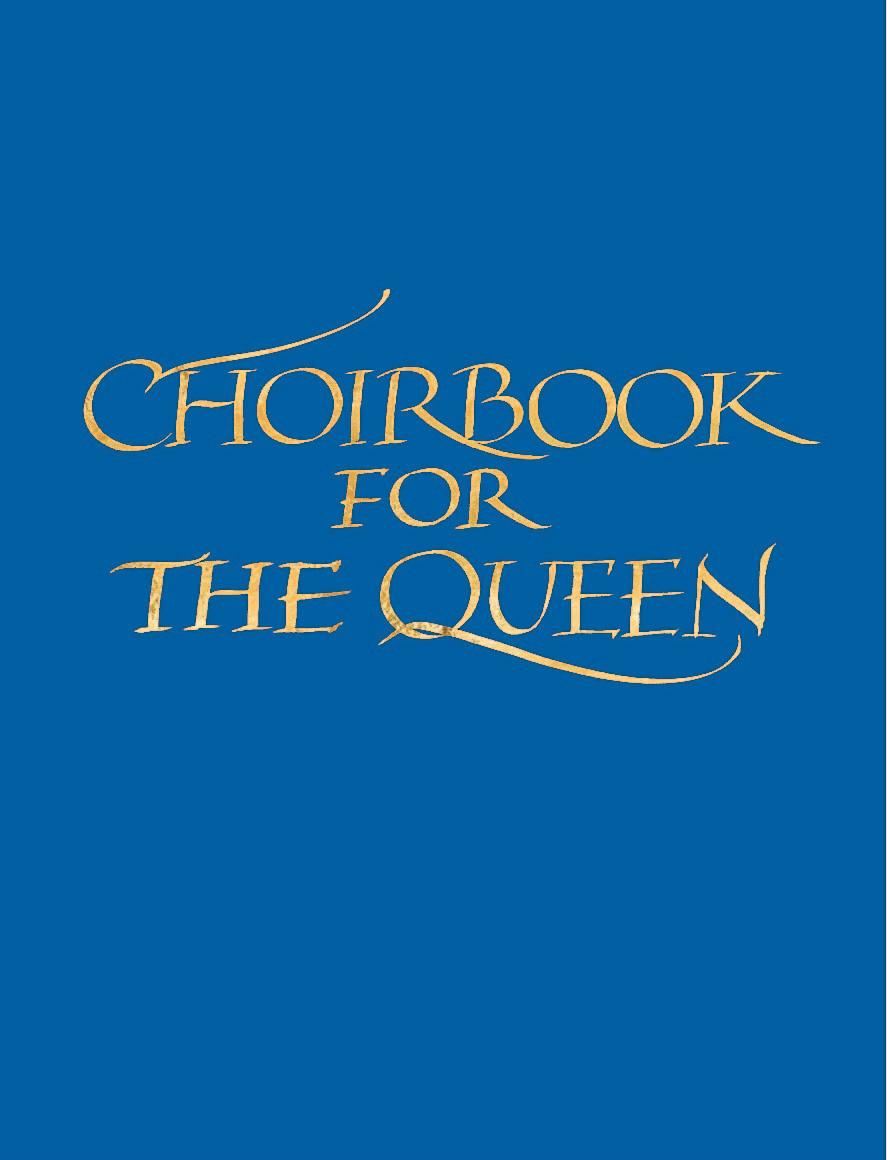
It can therefore be seen as a latter-day equivalent of The Eton Choirbook that was produced 500 years ago in the reign of King Henry VII and which is still in use today.
The original idea of producing such a choirbook came from Robert Ponsonby (BBC Controller of Music from 1972 to 1985) who explains: “I inherited from my father, Noel Ponsonby, a love of what I have always thought of as ‘Cathedral Music’. On retirement I took to thinking about the glories of our ‘English’ choral traditions – Anglican, primarily – and I pictured the possibility of a nationwide celebration of such music. So, in 2004, I wrote to Peter Maxwell Davies, who liked the idea, and it was taken forward by a number of wonderfully dedicated people who shaped my simple notion into what is now our Choirbook for The Queen.”
That ‘shaping’ began with the setting-up of a steering group with Sir Peter Maxwell Davies as its Artistic Adviser and Ian Ritchie (Director of the City of London Festival) as its chairman. Together with Robert Ponsonby, its members were

Stephen Cleobury (Director of Music at King’s College Cambridge), Christopher Robinson (FCM President and formerly Director of Music at St John’s College Cambridge), Timothy Hone (Head of Liturgy & Music at Salisbury Cathedral), Andrew Nethsingha (Director of Music at St John’s College Cambridge), Andrew Kurowski (Producer, BBC Radio 3), Richard White (Choir Schools’ Association), Lucy Winkett (then Precentor at St Paul’s Cathedral, London) and me (as Chairman of FCM). Carol Butler, the Director of the Winchester Festival, was appointed as Chief Executive.
Deciding on the content of the book was delegated to a smaller editorial group (Stephen Cleobury, Christopher Robinson, Tim Hone, Andrew Kurowski and Lucy Winkett, with Ian Ritchie as its chairman). That was never going to be an easy task but, as Ian Ritchie explains, “We needed a crosssection of anthems that would represent a broad church of composers, including those who had never previously written for this genre, as well as those who had already contributed significantly to the development of British church music.
“We also wanted to have anthems set to a wide range of texts which could be performed either at particular times or on any occasion throughout the church year, which would be challenging but also satisfyingly within the capability of good amateur choirs as well as professionals.”
As work on selecting and commissioning the anthems progressed, the directors of music of cathedral choirs and major college and music foundations throughout the UK were invited to participate in the project by agreeing to perform at least one anthem from the Choirbook during the course of the year and thereafter to keep it in their repertoire. Their response was overwhelming, with eighty choirs from Anglican and Roman Catholic foundations enthusiastically agreeing to take part.
In the end, thirty-three existing anthems were chosen for inclusion in the book, together with ten commissioned from
Richard Allain Cana’s guest
Julian Anderson My beloved spake
Richard Baker To keep a true Lent
Sally Beamish In the stillness
David Bedford May God shield you on every step *
Richard Rodney Bennett These Three
Judith Bingham Corpus Christi carol *
Diana Burrell O joyful light *
John Casken In the bleak midwinter
Richard Causton Cradle song
Bob Chilcott The heart in waiting
Peter Maxwell Davies Advent Calendar *
Jonathan Dove Vast ocean of light
Michael Finnissy Sincerity *
Alexander Goehr Cities and thrones and powers *
Francis Grier Prayer for the Church’s banquet *
Jonathan Harvey The royal banners go forward
Cheryl-Frances Hoad Psalm 1
Robin Holloway Psalm 121
Francis Jackson Te lucis ante terminum
Gabriel Jackson To morning
John Joubert Seek the Lord
James MacMillan Canticle of Zachariah
Colin Matthews The angel’s carol
David Matthews Psalm 23
John McCabe The last and greatest herald
Cecilia McDowall Ave Regina caeolorum
Philip Moore As the Father hath loved me
Tarik O’Regan Beatus auctor saeculi
Nigel Osborne Prayer for Africa *
Roxanna Panufnik Joy at the sound *
Anthony Payne Betwixt Heaven and Charing Cross
Julian Philips Church music *
Francis Pott O Lord, grant The Queen a long life
John Rutter I my best-beloved’s am
David Sawer Wonder *
Robert Saxton O living love
Andrew Simpson Sing unto the Lord
Howard Skempton Ave Virgo sanctissima
Giles Swayne Ave verum corpus
John Tavener Take him, earth, for cherishing
Mark-Anthony Turnage Miserere nobis
Judith Weir True blue dream of sky
John Woolrich Earth grown old
* Choirbook Trust commission
leading composers and one specially composed by Sir Peter Maxwell Davies as Master of The Queen’s Music. The new anthems will be given their broadcast premieres throughout next year during BBC Radio 3’s relays of Choral Evensong.
Clearly, the cost of commissioning new works and of producing and publishing such a large volume (actually it’s going to be published as a two-volume set) was always going to be significant, but Penny Jonas (the project’s Fundraising Consultant) was hugely successful in securing grants from a number of foundations and charities.
“The response to our appeals for funds to realize this ambitious idea was highly rewarding,” she said. “Seed money to commission new works and start the project was generously provided by a number of donors including the Allchurches Trust, the Astor Foundation, the Esmée Fairbairn Foundation, the G C Gibson Trust, the Ouseley Trust and the Friends of Cathedral Music who made a grant of £20,000.” Carol Butler, commenting on this grant said, “FCM agreed a very generous donation relatively early on in the planning of the Choirbook At that point we had a clear idea of what we wanted to achieve but we needed a funder to take a leap of faith with a major donation. FCM came forward at just the right point, giving us the time to develop the project knowing that we had the money to underpin the work. There’s also no doubt that the donation was a great encouragement to other potential sponsors that we approached.”
“Other benefactors in kind were solicitors Charles Russell, bankers C Hoare & Co. and publishers Canterbury Press, and the major and very significant grant which ensured the publication came with immense generosity from The Foyle Foundation.
“Once we had been successful in securing the funds for the commissioning, the collection of the works and the publication of the book, a further endeavour to seek support for the participating choirs to be provided with full sets of the books was launched.” Penny Jonas takes up the thread: “Individuals were approached and invited to ‘partner’ a choir or cathedral with which they had some personal affinity or relationship by becoming a Diamond Subscriber. Very many came with a memory or a delightful story to tell about each association.”
As a result, all the participating choirs will be presented with a set of the books, each of which will be inscribed with the name of their Diamond Subscriber.
Commenting on the outcome, Carol Butler said: “There have certainly been some difficult moments en route but it has been an enormous privilege and joy to have been involved in it from the very beginning.” And there is no doubt at all in my mind, as Chairman of The Choirbook Trust that was established to oversee the financial, production and publication arrangements for the project, that it is Carol who, because of her tenacity and dedication to the project, has been the real ‘Diamond’ who made it all happen.
FCM’s significant role in contributing to the funding of the project is being recognised by its being named as the commissioning sponsor of the new anthems by Judith Bingham and Francis Grier, and also by being the Diamond Subscriber for twenty-one choirs.
Given that our aim is ‘supporting a living tradition’, what more fitting way could there have been than this for us to be
doing just that in these two ways and, at the same time, to be paying tribute to Her Majesty in her Jubilee Year?


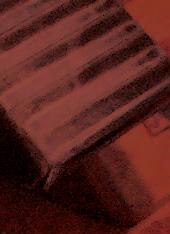
The Choirbook will be published by Canterbury Press and launched at a special service of Choral Evensong on St Cecilia’s Day (22 November) in Southwark Cathedral. Peter Wright, Director of Music at Southwark, says: “The publication of Choirbook for The Queen marks a highly significant moment for church music in this country. It is a great privilege that the launch is taking place at Southwark and an honour indeed for the cathedral choir to have the opportunity to sing the premiere of Peter Maxwell Davies’s masterly anthem Advent Calendar – serendipitously appropriate for this time of year.”
FCM President Christopher Robinson, reflecting on the way
Francis Grier was a chorister at St George’s Chapel, Windsor Castle, organ scholar at King’s College Cambridge and organist at Christ Church Cathedral Oxford, where he commissioned numerous works from John Tavener, William Mathias, Giles Swayne and others. He now combines his work as a psychoanalyst with composing and performing. He has been commissioned to write numerous works for the BBC and for various cathedral and collegiate foundations in this country and abroad, including, in 1996, a setting of Psalm 150 as a birthday present for The Queen, and, in 2006, a large-scale setting of the Passion for the BBC Singers, King’s College, Cambridge and Vocal Essence in Minneapolis.
in which the project has come to fruition, has no doubts about its significance. “It will be an important historical indicator of the flourishing state of church music in the year 2012,” he says. “The contents will not only be a welcome challenge but also an encouragement to composers whom one hopes will continue to write for our choirs.”
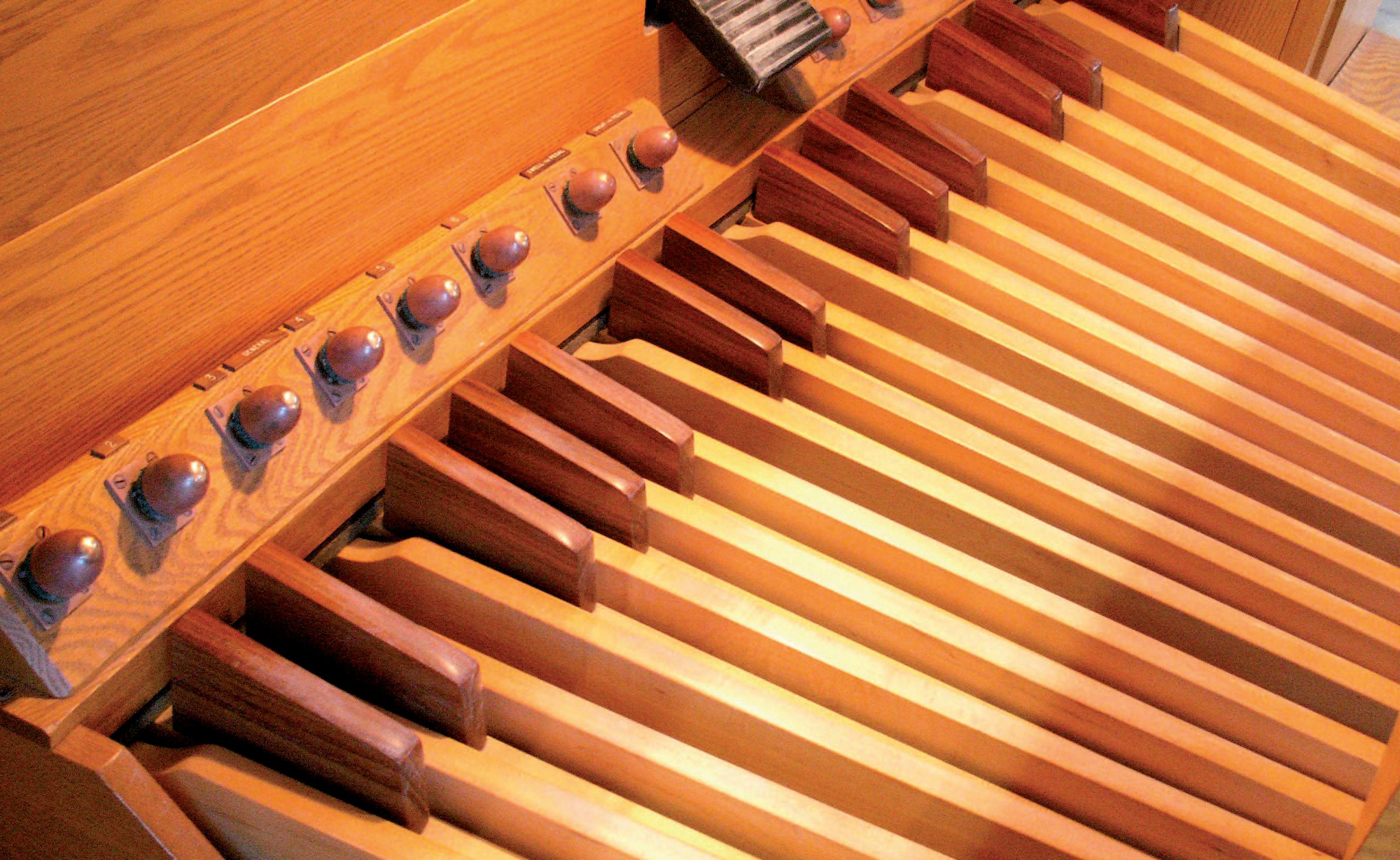
Robert Ponsonby’s ‘simple notion’ has thus become not just a reality but a major landmark in the continuing development of church music. With characteristic humility, he simply says: “I am astonished, elated – and very grateful.”
Peter ToyneFurther information about The Choirbook, including interviews with some of the composers, can be obtained from the official website at: www.choirbookforthequeen.org.uk/book/


Judith
Judith Bingham studied composing and singing at the Royal Academy of Music. For many years she was a member of the BBC Singers; between 2004 and 2009 she was their ‘Composer-inAssociation’, during which time, in addition to several works for the BBC Singers, she wrote pieces for professional, amateur and collegiate choirs including King’s College Cambridge and the BBC Symphony Chorus at the Proms. In addition to her choral works, Bingham has written for brass band, for solo instruments, symphonic wind bands, chamber groups and large orchestra and a substantial number of pieces for organ.




 James Thomas
James Thomas
All photographs by John Williams
The idea from the outset was to create a musical instrument which sings with a unified voice. I have long been convinced that a choir which has a good blend of voices will make its music travel far more easily and efficiently in a building than an ensemble with lumps and bumps. It is similarly true for the organ.
Our previous instrument was installed in a new chamber high up on the north-west side of the quire in 1970. My predecessor but three, the late Harrison Oxley, had created an ingenious scheme, mixing old and new pipework. The instrument was built by Nicholsons on a very tight budget, meaning that there were certainly insufficient funds to design and build the two large cases which the organ so desperately needed. The instrument produced a wide variety of tone colours but in its crucial role of getting the sound into the nave for congregational singing it was less successful. There were pipes with too many different origins to be able to blend effectively, and the organ was also becoming increasingly unreliable mechanically and electrically.

In contrast, our new Harrison & Harrison has been brilliantly voiced so that, with each increase in volume, the stops added blend beautifully with their neighbours, and the ranks we have retained from previous instruments have all been revoiced to a certain extent to ensure that they fit well into the overall musical scheme. Indeed, it is possible to use any combination of stops throughout the whole tonal range secure in the knowledge that the blend will create a new musical timbre. This means that the fifty-nine speaking stops supply an almost inexhaustible variety of combinations.
The instrument therefore possesses its own musical character of great integrity and this, allied to an ingenious stop-list, means that not only can music as diverse as Sweelinck, Couperin, Franck, Bach, Howells and Messiaen all be performed credibly
As any organist knows, a cathedral organ has to be able to perform a wide variety of tasks. Obviously it would be inappropriate in a British cathedral to build an instrument perfectly suited to, say, German Baroque, since the choir’s repertoire is bound to include composers like Howells and Stanford. There are thus some instruments, in an attempt to be all things to all men, which lose their musical integrity and identity and are generally not much of a pleasure to listen to, nor to play. Not so here at Bury St Edmunds!
and compellingly, but also the many and varied demands of the Anglican choral tradition are coped with effortlessly.
The organ’s position in the building means that the player has to think very carefully about where his congregation and choir are sitting. The Great and Solo box speak very strongly to the west, but sitting at the console one is not aware of the true impact of these divisions in the nave. Sited just above the player’s head is the Choir division, which speaks beautifully in the quire and, for the choral offices of Evensong and Mattins there, it performs the role of the Great organ. The Swell division is enclosed in a box with two independently controlled sets of shutters: one speaking west, the other south. Thus for quire services the west shutters remain closed and only the south shutters are employed. For services in the nave, the Great organ comes into its own, along with the west-facing swell shutters. Even here the organ has several roles to perform: accompanying the choir in the nave; accompanying large congregations; and providing suitable liturgical ceremonial music. For the latter, the two high pressure solo reeds, situated well above the player’s head in the quire, sound splendidly in the nave (but are quite shattering in the quire and have to be used sparingly!).
The voicing of the Great and Swell choruses, both flue and reed, is warm, vigorous and compelling; there is a wealth of
colour on the Choir, Solo and Swell divisions and no lack of support from the firm yet promptly-speaking Pedal department. The Open Wood has a real presence in the tutti, as do both the magnificent new Ophicleide and, underpinning the whole ensemble, the full-length 32’ Double Trombone.
The Solo and Swell Octave, Sub-octave and Unison Off couplers provide even more variety of colour. On the Solo, for example, there are three 8+4’ flute combinations: the obvious one, the Harmonic Flute + octave, and the 4’ Flute + Sub octave – all equally lovely. One can have great fun experimenting with other timbres on Solo and Swell in a similar way.
Needless to say the craftsmanship is of the highest order, and the internal layout quite brilliantly planned, allowing the organ tuners easy access to every pipe.


Since Advent Sunday 2010 David Humphreys – the Assistant Director of Music, now at Peterborough – and I have been discovering ways in which this extraordinarily versatile instrument can be played, and we have also been fascinated to hear how our recitalists have tackled it. David uses the organ very effectively for accompanying our choral repertoire and has produced memorable performances of English music (such as Howells and Stanford) which are not in my repertoire. By a curious coincidence (or is it?) the organ is
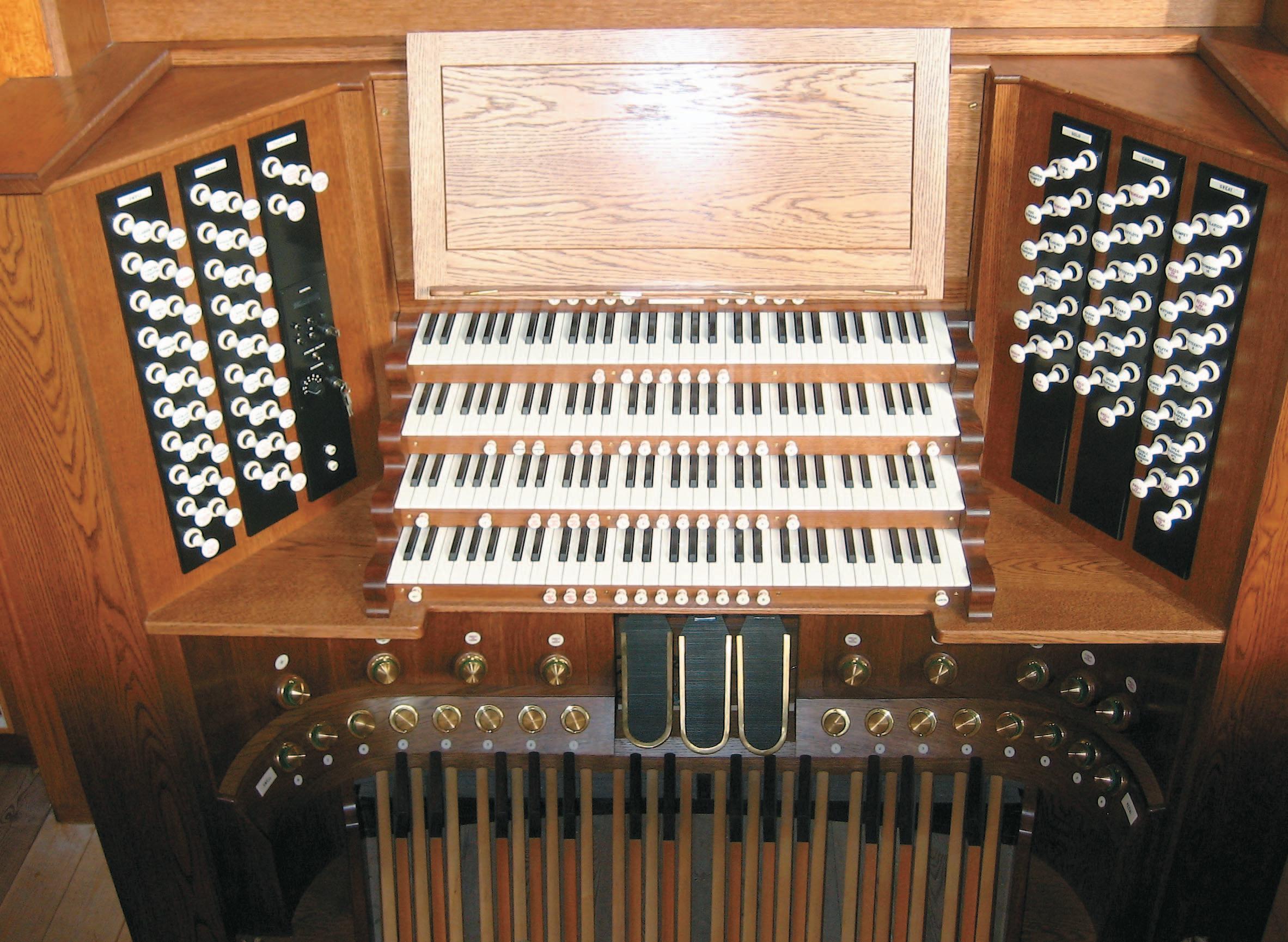
also ideally suited to the music of Olivier Messiaen, which I love and play frequently.
When I arrived here nearly fifteen years ago, I inherited a file marked ‘Organ Project’ which was then several years old, but lack of funds had prevented much progress. I encouraged colleagues to start thinking again about the project and formed the Cathedral Organ Working Party. I think we would have achieved our goals sooner than we did had it not been for the opportunity that arose to build the glorious tower: of course the organ project had to take a back seat for that, as it did when further opportunities arose to build the new Chapel of the Transfiguration, the Crypt Treasury and a new row of cloisters!
Raising the money for such a project was a huge undertaking, requiring much patience, tenacity and hours of often fruitless labour. The lion’s share was carried out by members of the Cathedral Organ Working Party, a body that existed for over a decade and was chaired at first by the former Dean, the Very Revd James Atwell, and then (for a crucial phase leading to the signing of the contract) by the late Brigadier Denis Blomfield-Smith. Many people contributed countless hours of work for the COWP and many, many generous people made donations, ranging from £5 to over £500,000. I must also mention the sterling work (pun intended) of the (then) Cathedral’s Finance Manager, Kate Morris and her colleagues for their excellent handling of the financial side of a very complex operation.
The resulting instrument is a triumph of collaboration between many different parties – Harrison & Harrison, who are, I know, very proud of their creation in this their 150th anniversary year; Pennys Mill (case makers); Campbell Smith (the specialist decorators of the spectacular cases); John Bucknall (the architect who realised the decoration and instructed the painters); and the scaffolders, electricians and, of course, many colleagues at the cathedral itself. Members of the cathedral community too had to put up with a great deal of disruption, especially since the organ’s installation followed immediately upon the completion of the vaulted ceiling of the tower. I cannot thank all those involved sufficiently.
The Inaugural Recital was given by Nicolas Kynaston on March 5, 2011 to a very large and enthusiastic audience. The organ and vaulted ceiling were dedicated the previous day by the Bishop of St Edmundsbury and Ipswich in the presence of HRH the Prince of Wales.
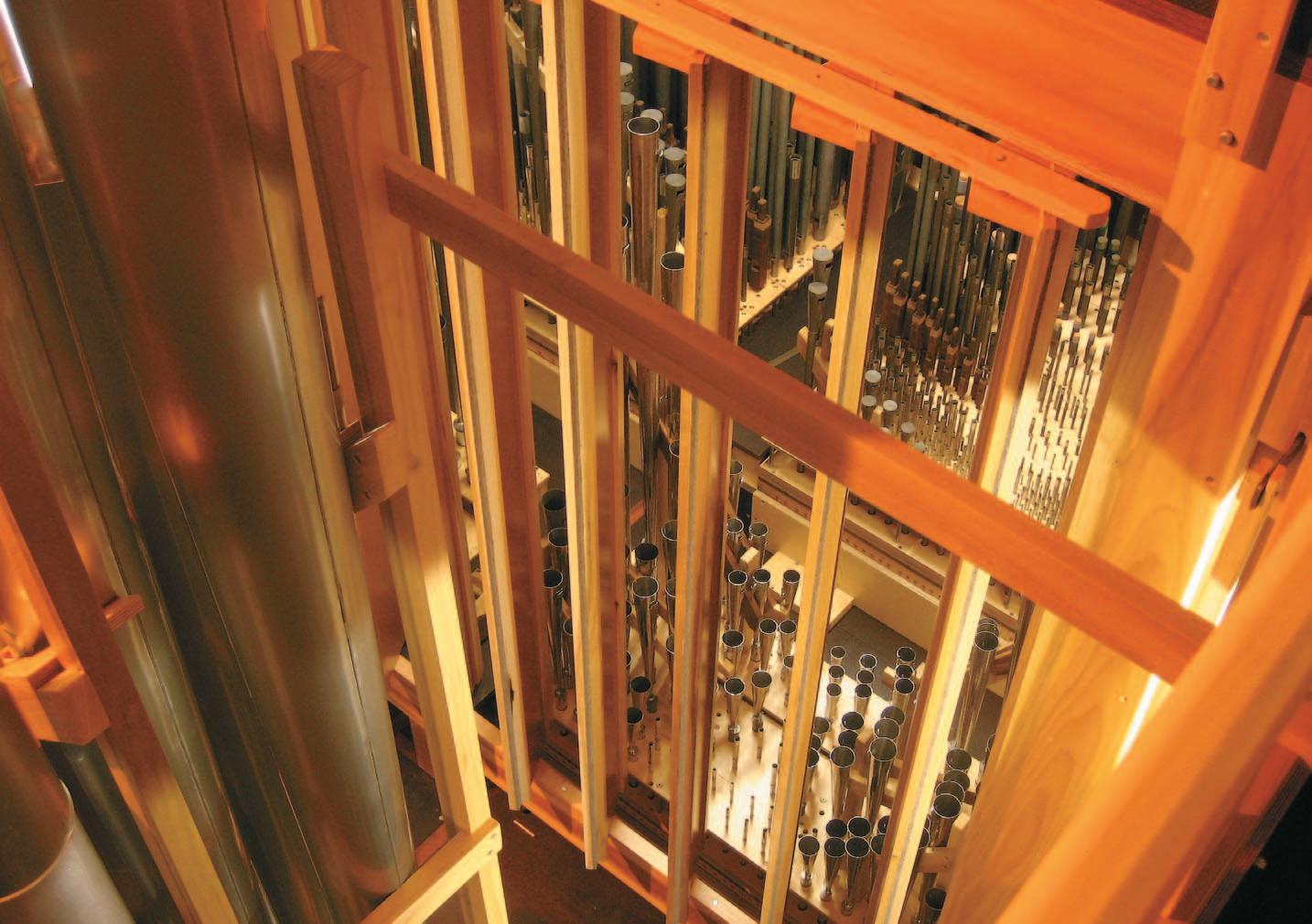
James Thomas has been Director of Music at St Edmundsbury Cathedral since 1997. He was organ scholar at Gonville and Caius College, Cambridge, and Assistant Director of Music at both Blackburn and Chichester Cathedrals.
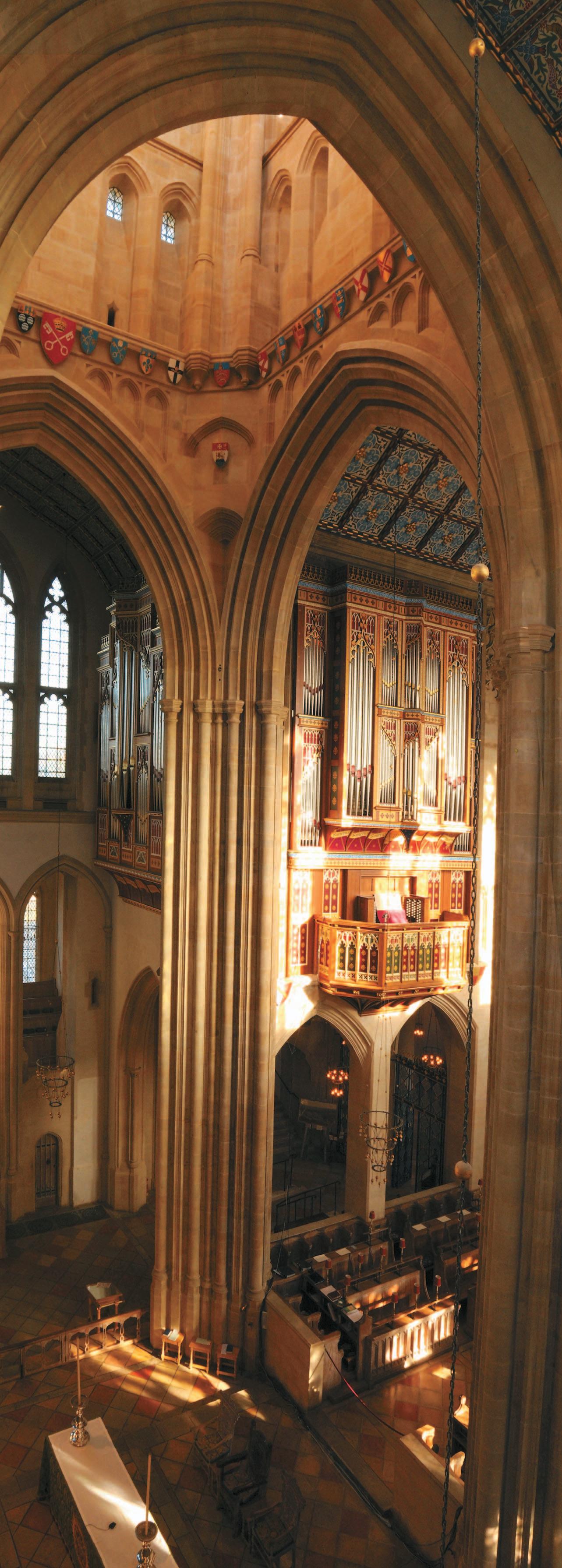
DF: Congratulations on twenty-five years as Organist of Durham Cathedral. You will have seen many wonderful occasions and have lots of great recollections; can you describe some of them and how you look back on them now?
JL: Out of so many, I suppose the ones which stand out most are the 1987 celebration service on the 1300th anniversary of the death of St Cuthbert, for which we commissioned a new work from John Tavener; the memorial service for Sir Bobby Robson in 2009; and, most movingly of all, the admission of the first twenty girl choristers on All Saints’ Day 2009, for which the cathedral was full.
DF: Durham is famous not just for its choral foundation but also for the organ. What are your experiences of playing it over the years? Have you overseen any changes?
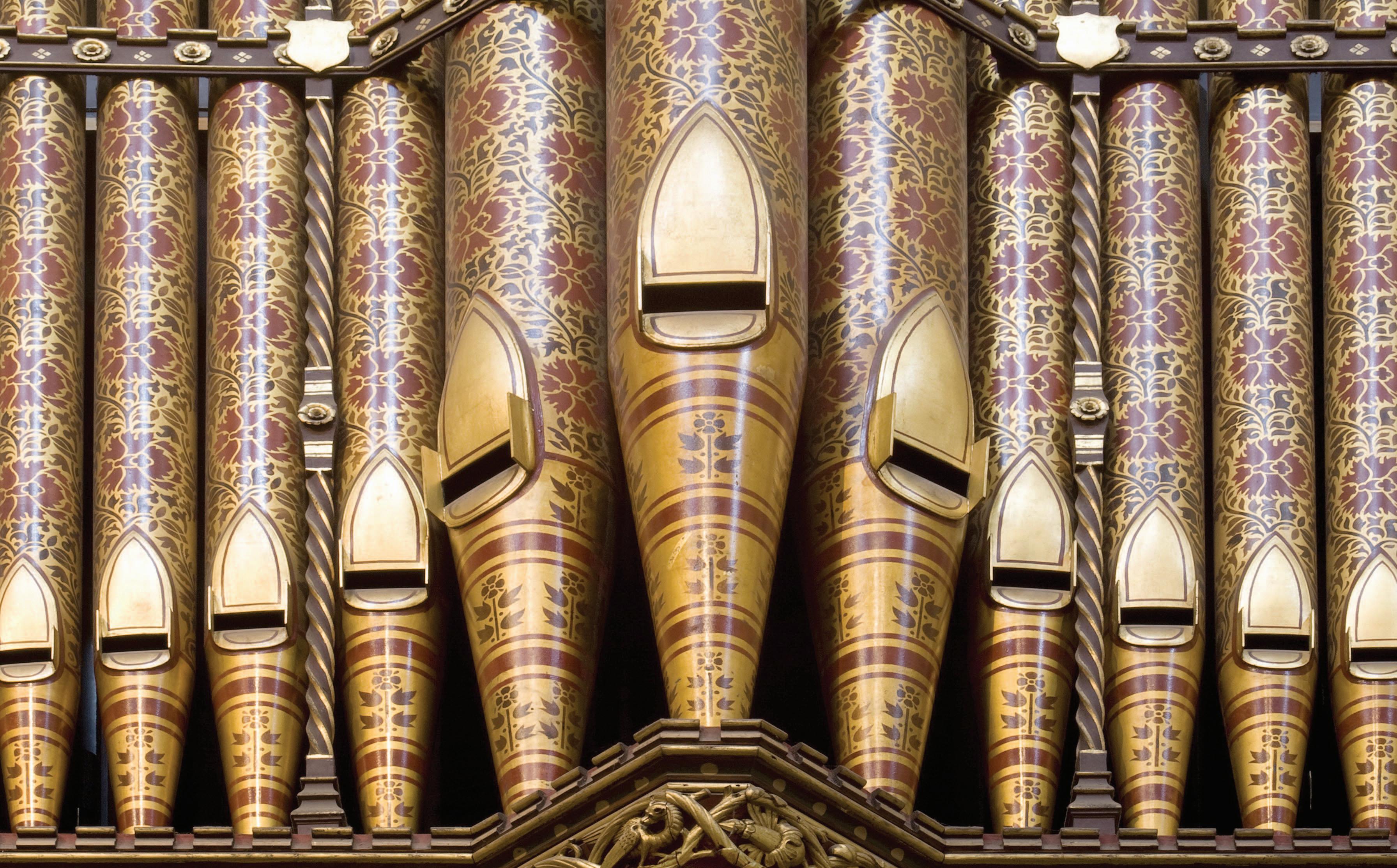
JL: I shall never forget the first hour I spent on it after I had heard of my appointment here. It is a sublime instrument which despite being a liturgical English Romantic organ in excelsis nevertheless manages to recreate several other completely different sound worlds. Many listeners have commented on the way in which it seems so perfectly at one with the building. I would not dream of making alterations which would change its character; Harrison & Harrison did make some sensitive but useful improvements to the Pedal
Chorus in the 1990s, and at the same time added a steady, gentle Tremulant to the Choir organ.

DF: Have you managed to achieve ambitions during this time? Do you have further ambitions for the cathedral’s music?
JL: I think the ambition of any cathedral organist during these challenging times is to keep the precious tradition alive, developing and in good heart; we are each of us small links in a long and valuable chain. I am grateful for having been able to help do that, having started here with a music foundation which was clearly flourishing under Richard Lloyd, the most sensitive and supportive predecessor one could wish for. The music here is greatly valued; the Chapter is open and generous in its appreciation, and I like to think that the ministry of music plays a valuable role in the life of the city, the diocese and the region. I am in no doubt that the advent of the girls here is an enrichment and strengthening of that tradition (the two teams of choristers are clearly supportive and proud of each other); my ambition is to see at least the first generation of girl choristers through their time in the choir. I hope also that we shall be able to expand the amount of orchestral accompaniment in the liturgy – the cathedral’s development plan includes instrumental scholarships in the long term, and that is a step I would be keen to see us take when it becomes possible.
DF: Which have been the most telling changes? Which have been the areas of your life that you have found demanding?
JL: The most telling change is, of course, the expansion in the number of choristers now that we have two teams. Before that, the inauguration of Durham Cathedral Consort of Singers in 1997 was a milestone; I had been very aware of the lack of opportunity for women undergraduates to sing in the cathedral as part of a cathedral choir (I should add that the Consort is not exclusively composed of students, however). Because all choristers now leave in July, rather than at the end of the term before their 14th birthday, we lose them on average eight months earlier – and when they come to us they tend to have considerably less experience of singing than was formerly the case. So the learning curve each September is that much steeper.
DF: The north-east is a wonderful place to live; is it a great place to make music?
JL: Oh yes – quite apart from the University (see below), the Sage Centre Gateshead is a major promoter of performance, outreach and education, as well as being a magnificent home for the wonderful Northern Sinfonia. And then there is a great deal of music-making going on, both town and gown, in the region.
DF: Have you managed to maintain your own solo performance career at the same time? This can be an anxiety for some, where the office draws so much time. Can you reflect on some of the most memorable places you have played?
JL: Yes, I’ve been very fortunate in being given the freedom to travel and give recitals – inevitably many of the foreign trips are outside choir terms. Finding time for personal practice can be a battle, but it’s a battle I’ve never had any intention of losing; playing is vitally important to me, and I have been keen to emphasise the role that the organ can play in the liturgy –for example we have extended voluntaries before Sunday Evensong and a middle voluntary after the sermon in the Sung Eucharist. I have been lucky to play so many wonderful instruments; it’s hard to choose, but the cathedrals of Riga, Nidaros and Notre-Dame de Paris stand out especially. But this week I played at Kelvingrove Art Gallery, Glasgow – an amazing organ in a simply sensational building.
DF: What do you regard as the greatest challenges for us in cathedral music in the 21st century?

JL: Recruitment – particularly, I think, of boys. This is down to
several factors – a lack of singing in schools for boys especially (which the outreach programmes of our cathedral and very many others seek to ameliorate); difficulty or unwillingness on the part of families with regard to making the commitment to the travel involved for day choristers or alternatively to making the sacrifices involved in boarding (especially at a distance); the decline in the number of churchgoers countrywide, and the encroachment of so many leisure activities onto Sundays. These are challenges, and provided we are prepared to rise to them rather than regard them as obstacles, we shall win. At the end of the day (dare I say this), if God wants to be worshipped by Anglican SATB choirs He will make it possible.
DF: The cathedral is surrounded by a world-famous university. How have you evolved the relationship between it and the cathedral? Is this an area where you can foresee further development?
JL: I found myself teaching Fugue and String Quartet in my first week in Durham; the university music department is nearer the cathedral than my house in the Close is! That proximity (on a world heritage site) is very valuable – the experience of reading Music at the university and being a choral scholar at the cathedral is very special. I took over conductorship of the University Choral Society in 1987 and since then have moved to inviting the University Orchestral Society to accompany our concerts. I see this as a valuable part of the cathedral’s outreach; each year more than a hundred students have the experience of singing or playing in the great works of the oratorio repertoire in unforgettable surroundings. I am sure that with a world-class music department and with the cathedral’s musical life – and its enviable collection of music manuscripts – we shall continue to explore openings and opportunities in collaboration with each other. Outside music, the cathedral has become more and more aware of the creative opportunities open to it by virtue of being effectively surrounded by university colleges. It is something we value and take seriously.
DF: I am nearing this landmark myself and I am sometimes asked “What next?”: how do you feel about that question?
JL: After twenty years in Durham, our outstanding suborganist Keith Wright has moved on, and Francesca Massey has taken up the post. I look forward to seeing her grow into the role and into the community, and to seeing the girl choristers firmly established. There’s still quite a lot of organ music lurking in the organ-stool at home waiting to be tackled – I’ve just learnt Vierne’s Sixth Symphony this summer. After that, who knows? I try not to think about the day when I shall have to say goodbye to the cathedral organ here.
DF: We know your love for railways: do tell us about some of the journeys you’ve enjoyed from Durham over the years.
JL: Well, who told you that?! I had some wonderful days out on steam excursions with Tony Davies (whose photographs of Harrison & Harrison organs your readers will have seen) before his too-early death. Sylvia and I celebrated my 40th birthday with a wonderful midwinter Luxury Land Cruise from King’s Cross to Mallaig and Oban. At a simple level there have been lovely days out in the Tyne Valley or along the incomparable line up to Berwick and Edinburgh. The pièce de résistance though was in celebration of our twenty-five years here; the Chapter generously gave me time off, and we visited Switzerland with the Railway Touring Company – steam engines, vintage rolling stock, everything organised for us. Superb!
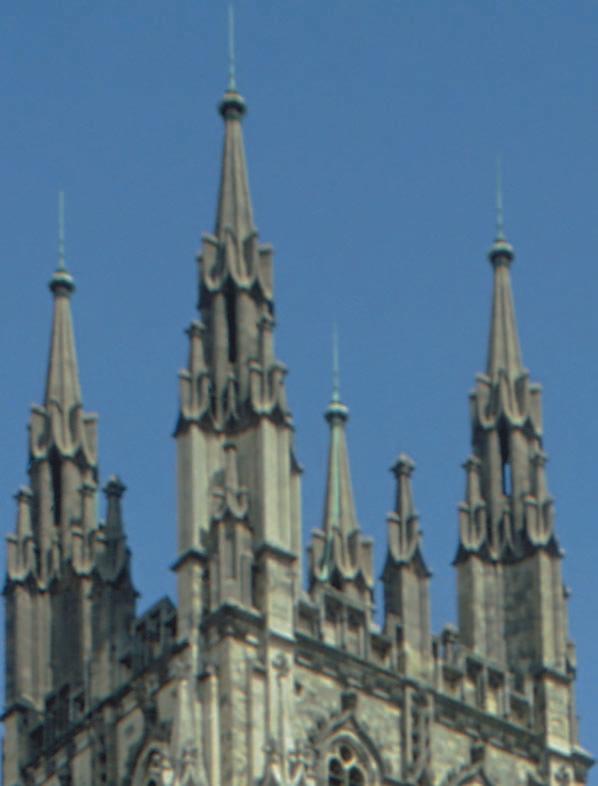

Every week, thousands of people up and down the country devote many hours to preparing and leading music for worship, as choir directors, singers, organists, instrumentalists or music group leaders. Now, a remarkable collaboration between two institutions –Canterbury Christ Church University (CCCU) and The Royal School of Church Music –has been developed to try and support this work.

The Foundation Degree in Church Music is inspired by the belief that many church musicians would like to deepen their knowledge and understanding of what they do. The course offers an opportunity to do so using the combined expertise of a university with a developing specialism in Church Music and the RSCM’s track record of work at all levels of church music in the UK (and abroad), supported by a formidable network of advisors and volunteers across the country. At this point I need to pay tribute to the woman who has been my opposite number in the development of the course: the RSCM’s Head of Education, Sue Snell, who has recruited the most remarkable team of mentors to work with students right across the country, from Aberdeen to St Davids. (She has now handed over to Huw Morgan, who will provide the crucial link between the RSCM and the university.) The commitment of the RSCM has been ever more impressive as the idea became reality over the last nine months, and nowhere was this more clearly demonstrated than at the recent start-of-year staff meeting of the Music and Performing Arts Department: as a group, they’re a sceptical bunch (it goes with the territory in academic life; you tend to view everything as if it were a dodgy PhD proposal) but when I offered my colleagues a brief introduction to the RSCM staff we now have in the field, the respectful silence which descended upon this contentious gathering was eloquent testimony to the expertise in church musicianship that the RSCM has been able to command.
Like all foundation degrees, the Church Music degree course is grounded in practical, work-based study – ie much of the work is carried out in the student’s own church or place of worship. So an important aspect of the work is the use of that home base for the objective evaluation and development of the student’s thinking about, and practice of, their musical ministry. It’s a two-year undertaking if you hurl yourself at it

for what we call ‘full-time’ study, though you can go part-time and take four, but it’s worth noting that students have almost complete control over when and how they work, since they are at home for the vast majority of their time.
A major strength of the course is the way in which the university and the RSCM are working together. Throughout the year, the RSCM’s extensive network of practising church musicians will support and mentor students in their musical home base, while CCCU will provide tuition at three four-day Residential Study Schools, in the autumn, winter and spring of each academic year, imparting the specialist knowledge and understanding which underpins music for worship.
For the rest of the year, university tutors are only a phone call or an email away, and much of the study should be done using online resources. Students have access to CCCU’s Virtual Learning Environment, ‘Blackboard’, and all the learning materials originated by the module tutors are there. The e-library includes the Grove Online Dictionary of Music, and the Naxos online music library, and access to the RSCM’s Colles Library in Salisbury can also be arranged.
For Christ Church, this new degree course is an obvious development which fits with the specialism it is developing in Church Music. Christ Church is a Church of England foundation; the cathedral is just across the road from the Canterbury campus; the organist of the cathedral, Dr David Flood, is a Fellow of the university and a visiting lecturer in the department; I am a lay clerk in the cathedral choir; and many undergraduates are already active in the chapel choir and in local church music groups –often going on to lead those groups when they’ve graduated. We thought it was time to turn that energy and enthusiasm into something more substantial, and we were delighted that the RSCM is joining forces with us. It made the long, tortuous process of ‘validating’ the degree –normally as much fun as a tooth extraction without anaesthetic – much easier, and the visiting luminaries who came to the university to scrutinise the finished product (the last and most invasive part of the process before the course is unleashed upon a cohort of students) complimented us on the quality of that collaboration. That sort of feedback in university life is about as common as a burning bush, and just as significant. Suffice it to say that we were heartened. The course is suitable
for students of all ages, whether or not they are inexperienced or proficient musicians.
At the time of writing, the first Residential Study School in Canterbury has just taken place. Because students spend plenty of time in the cathedral, our thinking was for them to get the best out of it –not only is it an inspiring building which offers artistic and spiritual nourishment, but it also serves as an opportunity to practise the kind of semi-detached reflection we’re asking of the students back at their home churches as part of their studies. So students attended an open rehearsal with the boys of the cathedral choir (food for thought for later practical sessions on choir training), an Evensong, Eucharist on the Sunday morning –and we all sang Compline, very monastically, just to ourselves, in the Eastern Crypt (yes, we have two crypts!) on the Saturday evening. I’ll also admit to a little apprehension here: we knew the mix of students included everything on the ecumenical spectrum from Free Church, Scottish Presbyterian, and Zimbabwean Methodist to Roman Catholic –with all points of Anglicanism (whatever that means) dotted about in between –so it wasn’t entirely impossible that some might object to this apparent emphasis on C-of-ECathedral. But fortunately no one has –at least, not so far; a typical comment was: “A real treat!... An unexpected bonus to the course, an opportunity I am so pleased to have had. The Compline service was a special occasion and the highlight of the week for me.”
There are other collaborations at Christ Church which, we hope, will serve as an inspiration for the students: the university has a long-established relationship with two of our country’s leading composers, Peter Maxwell Davies and Paul Patterson, who are visiting professors at the university, and CCCU is also the foremost provider of training for the lay ministry in the south east, and will capitalise on this depth of expertise in the future study schools.
This is a course which, in time-honoured university tradition, is less concerned with the answers than with the quality of the questions. We’re hoping that as our students take a couple of years to walk around the issues which we’ve parcelled up conveniently (universities think in boxes, I’m finding, however often we exhort our students to think outside them) into bundles called ‘Ministry and Worship’, ‘Music and Liturgy’, and even (in the first year) the nuts-andbolts ‘Church Music Management’, they will learn to ask better questions.
Sometimes, they have to set themselves their own questions, and the quality of these is crucial to the success or otherwise of their study. In each of the two years of (full-time) study, students do a project. It’s worth a sixth of their marks in Year 1, and a third in Year 2, so it’s quite significant. The project gives them a chance –we hope –either to scrutinise one aspect of their own practice or develop in some new direction. They’ve already started thinking about their projects for this year, and it looks as if they’re eager for the intellectual fray. We might
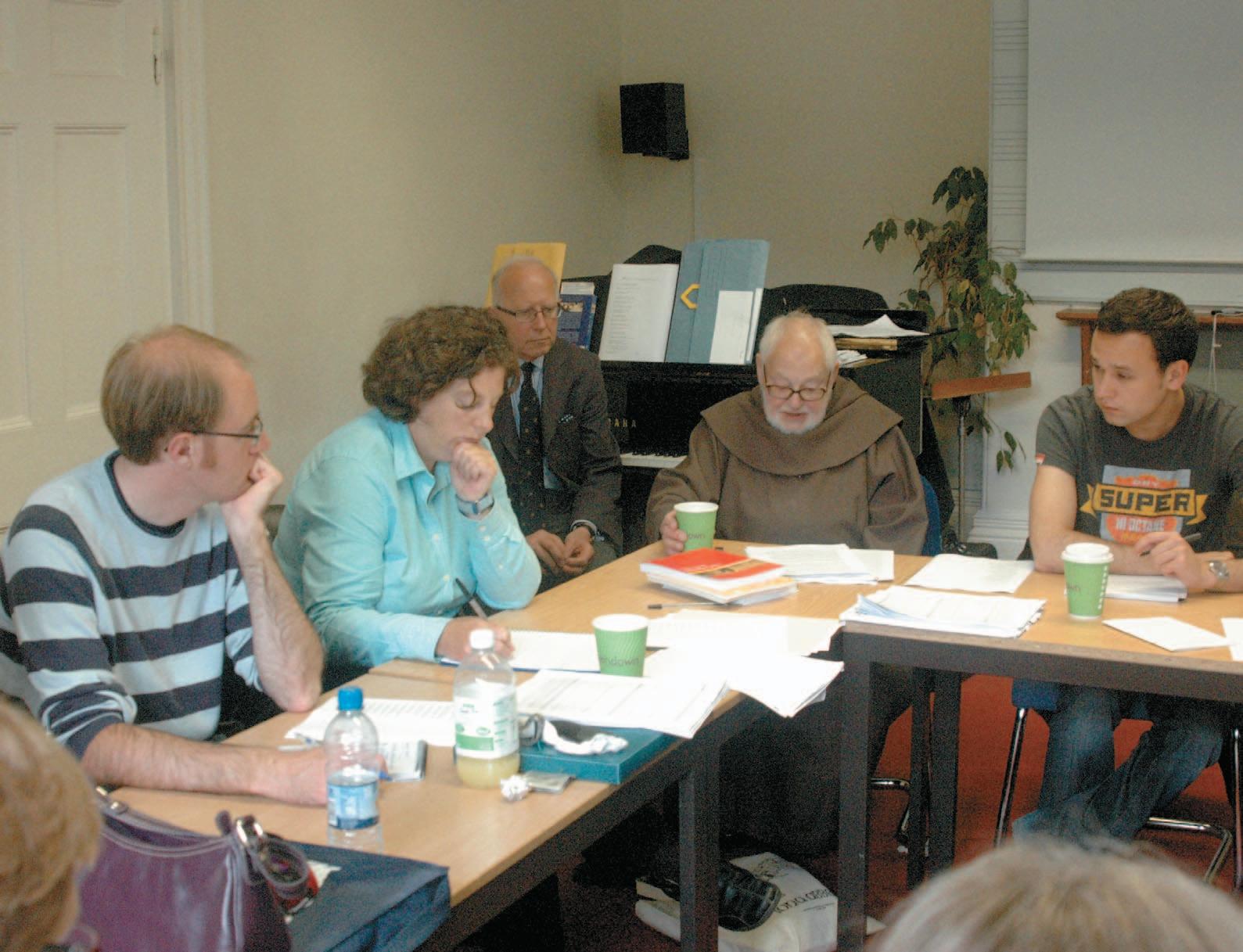
have known this would happen, but it’s taken me slightly by surprise; perhaps I hadn’t really realised how self-reliant an awful lot of church musicians have to be.
I’ve left till now the brief comments about what, for many, will be the heart of the matter. The module called ‘Practical Church Musicianship’ expects our students to choose two areas of practical work in which they will submit assessments where the student can specialise as a singer, voice trainer, choir trainer, music leader, organ/keyboard player/instrumentalist or composer/ arranger. There is also help in the practical management of church music, including legal issues and copyright. It’s a neat example, I think, of one of the ways in which the course is both supportive and developmental: we all know what we’re good at, but it might be nice to have a critical friend (i) to tell us how we might improve, and (ii) to help us see if we can get better at something else as well. I have every confidence that members of the RSCM Mentor Team will be very well qualified to be those critical friends.
This degree is a new venture, and there couldn’t be a worse time, in the world of Higher Education, to be launching one of them. I’ll leave the last word to one of our students, but I’ll offer a personal point of view first: if I look back to the 18-yearold I was, in that tiny Yorkshire village in which I spent my teenage years, and consider how likely I would be to go to university in today’s economic climate, given my family background and my mother’s pathological worry about debt, bless her, I think today’s version of me would have ended up being the accountant she wanted me to become though I still think I would have hated it. So at the risk of being hopelessly
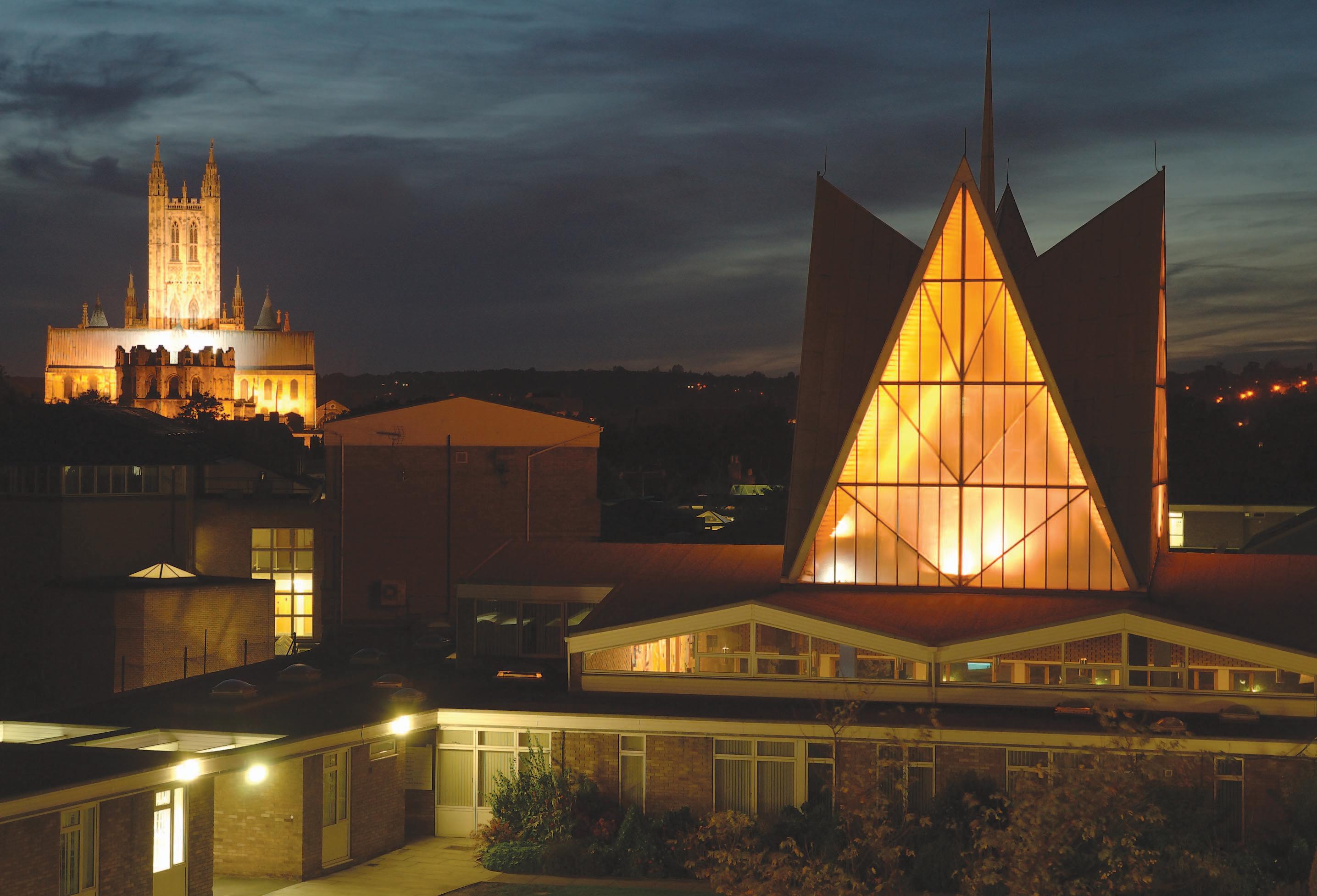
anecdotal, I’ll just point out that if this course enables other young people who love their work in parish churches up and down the country to study at degree level, it will have been worth the effort.

We next meet our students in January, here in Canterbury. We’re not at all sure how many will make it across the country through the freezing fogs and snows of a British winter, and we may have to re-think that particular part of the schedule –but if this participant is in any way speaking for the group, I have no worries: “Feel utterly mind-blown by the whole experience. It’s been a wonderful sojourn and a marvellous opportunity, thanks so much! Really looking forward to the next session and hope to do the course justice. I am feeling much more confident and am keen to put new ideas into practice... Can’t wait till January!”
More information is available on both the CCCU and RSCM websites: www.canterbury.ac.uk/studyhere/church-music and www.rscm.com/fdcm


Precentor has changed over the centuries. Despite being styled the primary cantor, the Precentor at St Paul’s Cathedral has not traditionally done any singing. That is left to three Minor Canons who lead the daily worship at Mattins and Evensong, and who sing the Eucharist on a Sunday.
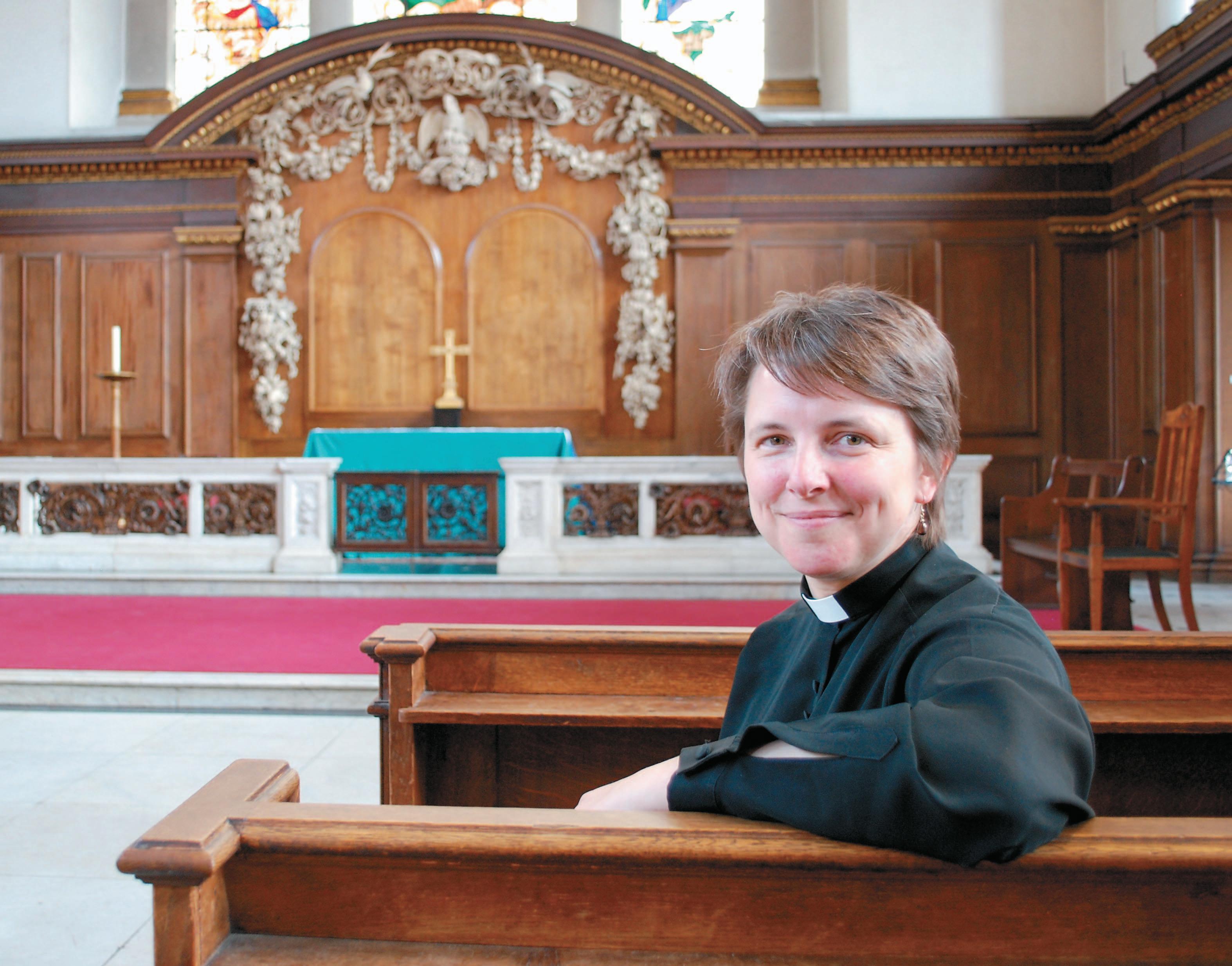
Moving within St Paul’s in 2003 from being a Minor Canon to a Canon meant that bizarrely, by following tradition, I would have stopped singing and this didn’t make sense to anyone. One of the main reasons that I enjoyed being part of the music foundation at St Paul’s was my background in music: I trained as a soprano at the Royal College of Music and sang with groups such as Polyphony and the Cambridge Singers before I was ordained. So it was wonderful to continue to sing the Eucharist despite being a member of the Chapter!
The music foundation, in modern terms the music and liturgy departments, was a thrilling and challenging place to work with so many outstanding clergy, professional musicians and such able administrators to bring together. Our monthly planning meetings, which we called LAMP (liturgy and music
planning) were a mixture of ‘what worked well last time’ and “how can we bring this theme to life this time”, and it was exhilarating to have to keep in mind the impact of public liturgy on a million and a half visitors each year. The shape of daily evensong, the rhythm of Sunday and the observance of festivals combined in a discipline that moulded our responses to big national events such as 9/11, 7/7, the end of the operations in Iraq or Northern Ireland, and the South Asian tsunami. The location and history of St Paul’s meant that we dealt often with government departments and national organisations, and we were able to make a difference to how national events were commemorated. But daily services on the proverbial ‘wet Tuesday in February’ were equally important and we often said to one another that it was because the choir sang Evensong every day to such a high standard that we were
able to think of responding to national events with large-scale services at such short notice.
St Paul’s itself is a cathedral that was in the end a compromise between the building Christopher Wren wanted to build and the one that was politically acceptable to a cautious Chapter in the late seventeenth-century Church of England. It has therefore an inherent architectural tension in it; one’s eye is drawn to the High Altar, yes, but also to the dominant feature: the inspirational dome. The dome was not designed for any liturgy to be held under it at all, but despite its size it is an intimate space that lends itself to, for example, an evening Eucharist in the round with the natural light from Wren’s windows streaming in as the sun sets. It was a challenge attempting to think through these tensions: which altar to use for the liturgical focus at any given service, the position of the choir or the organist, and the importance of the organ supporting congregational singing in such a vast space. The famous acoustic beat everyone who thought they could defeat it, but the imagination of successive Directors of Music and Minor Canons who placed choristers, cellists, trumpeters, shofar players, etc up in the galleries and high in the dome meant that evocative sound was a regular feature of our liturgical diet. For the service to commemorate the death of 300,000 people in the South Asian tsunami, we released 300,000 petals from flowers grown around the Indian Ocean from the dome galleries and their silent falling reduced everyone, including the Thai fiddle player, to tears. Using the height, depth and width of such an extraordinary building was a wonderful opportunity to invoke the sense of God transcendent and if I’m honest, we were more able to do this than invoke the sense of God imminent. The church needs both aspects of God to be proclaimed in our liturgy; God incarnate and also God unconfined. It strikes me that as yet again cathedrals are reporting a growth in their attendance, our population is yearning for a sense of God beyond ourselves in a world where everything is more or less immediate and disposable.
Now I am serving in another Wren building, the only church in London that was built by Wren outside the City, and I revel again in his vision of the church: light, wide, open and elegant. The acoustic at St James’s Piccadilly is absolutely superb, particularly for chamber music and unaccompanied voice, and our six concerts a week, three at lunchtime and three in the evening, ensure that much wonderful music is made and heard here almost every day. Being in the West End makes the contrast between the outside and inside of the building starker than ever. Traffic, roadworks, sirens and crowds mean that our environment is relentlessly noisy but the
peace that somehow is preserved within the building is very special. The standard of music-making in the regular concerts is superb and the range from Miles Davies to Shostakovich guarantees large and varied audiences –in 2012 we will be taking part in a festival of Bach and the London Jazz Festival for example.
On Sundays, a volunteer choir drawn from the congregation sings a range of music from Taizé chants and responsorial psalms to Mozart and the occasional Tallis during the Eucharist, and I have been struck by the unaccompanied singing of the congregation in parts for the Sanctus, Benedictus and during the hymns. I have never heard better unaccompanied congregational singing in a church before coming to St James’s. This is a big contrast to the cathedral style of participation I was used to; listening and praying through the choir’s offering on our behalf.
Another musical issue, despite a magnificent case in the gallery with carving by Grinling Gibbons, is that there is no working pipe organ at St James’s. As a modern rector’s life will inevitably include fund-raising, this will be on the agenda for the future. I feel honoured to have served in two such elegant buildings which by their grace dignify those of us who pray and sing in them. I live, with 10 million others of every culture and race, in a gloriously historic city full of contemporary commotion. The phrase, ‘It’s like Piccadilly Circus round here’ is acutely brought to life where I am now; and the vision that Wren bequeathed here at St James’s, as well as at St Paul’s, is one that resonates with the movement of the Spirit in the Book of Genesis; one that brings order out of chaos and one that calls harmony out of all who make music within its walls.

...I have been struck by the unaccompanied singing of the congregation in parts for the Sanctus, Benedictus and during the hymns. I have never heard better unaccompanied congregational singing in a church before coming to St James’s
Michael
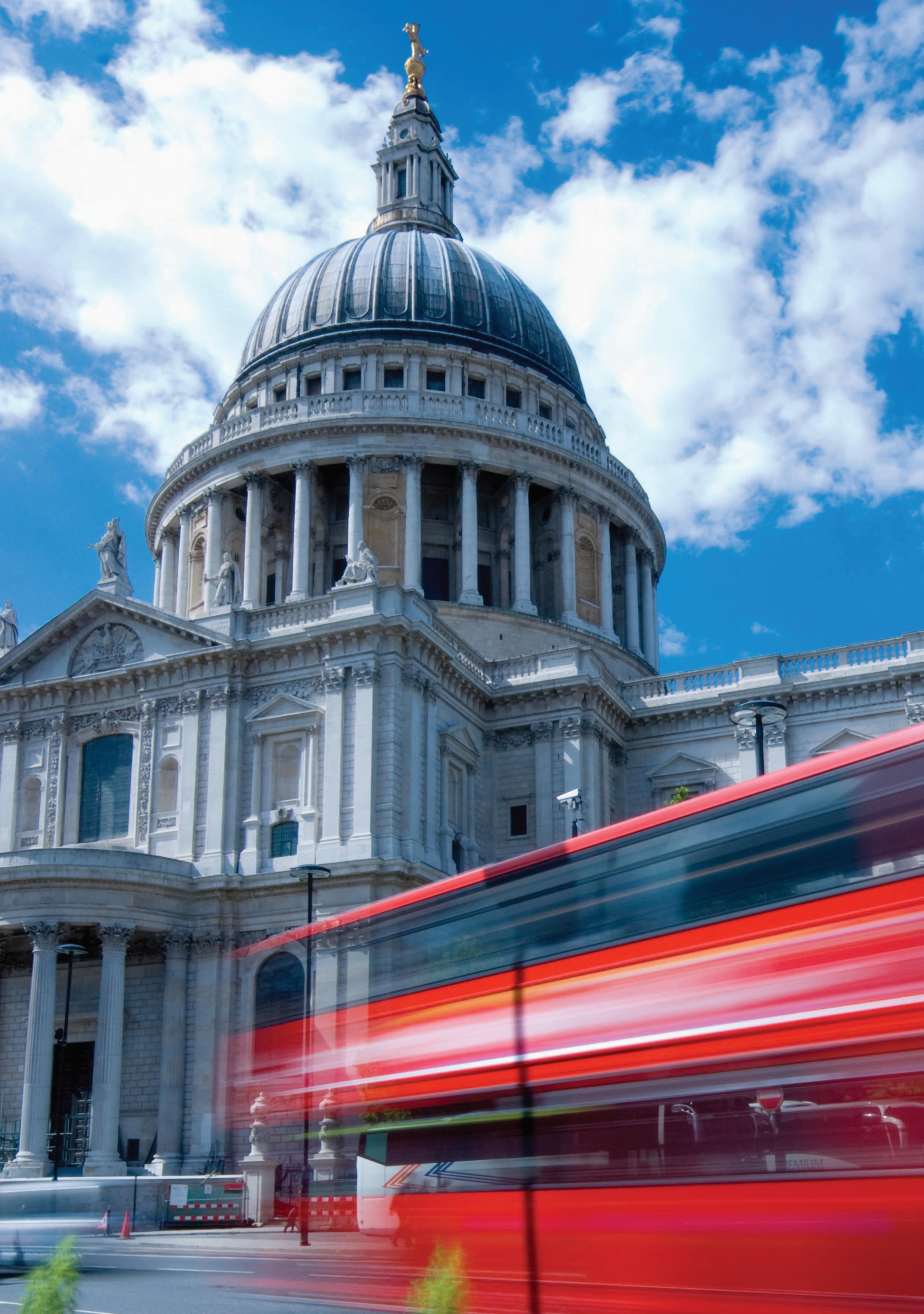
When St Edmundsbury Cathedral built its great gothic lantern tower, completed in 2005, it made a very bold statement of confidence about the Christian faith and about what it means to be a cathedral.
Christopher Wren was doing something similar when he built St Paul’s Cathedral, completed 300 years ago this year. And no doubt the unknown Norman French architect of the abbey at Durham was also thinking along these lines when he began work on his church of God in 1093.
As someone said to me recently, I’ve been knocking around cathedrals for quite a while. St Paul’s is my third precentorship (the first was Durham, the second was Bury St Edmunds). It would be tempting to say that I’ve pretty much got the measure of cathedrals by now but that would be to miss one of the most exciting points about these places: that, while the rhythm of daily worship is identical in every cathedral worth its name, the capacity of these sacred places to surprise knows no bounds.
I am not a professional musician although I’ve sung solo, as it were, alongside professional musicians for fourteen years. I reckon I’ve sung ‘O Lord, open thou our lips’ about 2,500 times if my memory and my maths serve me right. Having said that, at St Paul’s – rather like the distinguished person who has his toothpaste squeezed onto his toothbrush for him – the words are now sung for me by our admirable Minor Canons. Perhaps they’ll all have a cold on the same day one day and I’ll be able to see if I can remember how it goes.
I arrived at St Paul’s in March of this year to find a series of new structural arrangements in place concerning the way in which the cathedral’s musical forces are disposed: a reorganisation in the working practices of the Vicars Choral and a different way of making use of deputies (of which there are about 150). The new system works well and, whether 40 singers (including boys) are performing Evensong in the Quire or four singers are performing a four-part mass at lunchtime under the Dome, the quality of the sound is remarkable, despite the vast space and enormous acoustic.
The acoustic presents challenges for the delivery of the liturgy: does the minister wait for the acoustic to die every time he or she is about to speak after the music or does this break the pace of the liturgy at its more dramatic moments? How does the organist prevent the acoustic from dictating the speed of hymn accompaniment? And how does one do ‘intimate’ in so vast a deep?
The daily pattern of worship feels no different here from Durham or St Edmundsbury – except that Morning Prayer is at 7.30 am as opposed to 8.45 am in the other two places (I use two alarm clocks now...). That, a daily Eucharist, Evensong sung most days of the week, and three major choral services on Sunday are really the hallmark of worship in an English cathedral regardless of its location, size, age, or resources. And that’s how it should be.
One very particular difference between St Paul’s and St Edmundsbury is, of course, the presence here of a choir school. At St Edmundsbury Cathedral, the choristers are drawn from a variety of different state and independent schools in the locality. This is tricky in terms of co-ordination, especially when choristers are needed for special services during school time, and the delivery and collection of children from and to diverse locations, but it does mean that a significant cross-section of the local community through its schools enjoys a significant association with their cathedral. Nevertheless, a school community which is also well and truly part of the cathedral community is a great blessing and
provides a significant ‘resident’ community as a balancing antidote to the somewhat transient nature of the worshipping community of St Paul’s.
Which is, of course, another significant contrast: all cathedrals enjoy the presence of visitors at most of their acts of worship but St Paul’s almost only enjoys the presence of visitors. There is a core of regular worshippers here and the liturgical community of clergy and lay staff is a very significant part of the regular worshipping community, but is nevertheless a small percentage of the whole. This adds an edge to the preparation of our worship and the crafting of our sermons and the leading of our worship: nothing can be taken for granted and our ‘guests’ who may only have one opportunity to be inspired by what they encounter at St Paul’s must not be let down.
But I suppose that if anything provides a contrast between my experiences at St Paul’s and elsewhere, it is the location and the size. It’s London and everything is ‘writ large’. I remember attending a lecture under the Dome in my first week here and the organiser was disappointed because there were only 700 people at it. I understand that we were slightly disappointed that only 1,500 people attended the Holy Week offering of Bach’s St John Passion. But, as I write, we’re busy considering whether we’ll be able to broadcast our carol services out into Paternoster Square as we did last year, to cater for the many thousands of people who won’t be able to get inside the building at Christmas.
And, of course, the profile of the place means that you have to think even more carefully than usual about the wisdom of what you might say or do about God and the world because the platform upon which we’re privileged to speak and act sits under a very sharply focused spotlight and comes in for very clear scrutiny. That’s nothing to be afraid of – what a wasted opportunity if it scared us – but we must never forget the implications for us and for our fellow Christians elsewhere –and perhaps more pertinently the implications for God: not unto us, O Lord, not unto us, but unto thy name give the praise.
And as for any more contrasts? Before my first three months here were up, I had been presented to HRH the Duchess of Gloucester, HRH the Princess Royal, HRH the Duke of Edinburgh, and HM the Queen. Nothing particularly new in that: I’d met all four of them before – at St Edmundsbury Cathedral!
Michael Hampel
Precentor, Durham Cathedral, 1997-2002
Senior Tutor, St Chad’s College, Durham, 2002-2004
Precentor, St Edmundsbury Cathedral, 2004-2011 (Sub-Dean from 2008)




Of the twenty-three Anglican dioceses in Australia, fewer than half have the resources to maintain any kind of cathedral music tradition. The cathedrals of Sydney, Melbourne, Brisbane, Adelaide and Perth have choirs of high standards with professionally trained church musicians in charge, even if not all are employed full-time. The cathedrals of many regional dioceses also employ professional organists or choir directors but work with amateur choral resources. Most regional cathedrals double up as country parish churches but many take their music seriously. Other cathedrals in more remote dioceses have minimal music resources and rely on volunteer, perhaps even reluctant, organists.
For example, Holy Cross Cathedral, Geraldton is the cathedral church for the diocese of North West Australia, the largest land-mass Anglican diocese in the world, covering two million square kilometres, a quarter of the continent. But the population of the diocese is only about 150,000 people with just eighteen Anglican parishes, mostly small farming, fishing and mining communities. The cathedral is no less significant than any other in the world, but its music ministry is essentially geared to a transient population.
Architecturally, the high profile Australian cathedrals are products of the Gothic Revival style; William Butterfield being responsible for Melbourne and Adelaide, Edmund Blacket for Sydney, Perth and Goulburn, and John Pearson (of Truro fame) for Brisbane. As usual in high profile cathedrals there is
always tension, mostly financially induced, but also often in the area of priorities. Some, like Melbourne, try to emulate what happens in English cathedrals while others have little interest in being replicas of their English counterparts and prefer to forge their own Australian identities or, as in the case of Sydney, its ideological identity.
The oldest cathedral in Australia is St Andrew’s in Sydney, NSW, which is the only cathedral that has its own adjacent choir day school, founded in 1885, just eighteen years after the consecration of the cathedral. Today the school has over a thousand pupils, aged 5-18. Girl pupils were introduced over a decade ago and sing a weekly service. Weekday Evensong is no longer sung almost daily but on Thursdays only, with two Mattins services a week and a choral service on Sunday morning.
St Andrew’s Cathedral Choir is the only Australian choir to have sung on BBC Choral Evensong, which coincided with the Sydney Olympics in 2000. The current director of music, Ross Cobb, is the cathedral’s eleventh organist, recruited from Christ Church, Clifton, Bristol six years ago. Ross has continued the international tours begun in 1985, which have seen the choir sing in as many as sixteen English cathedrals, Westminster Abbey and St George’s Windsor, plus cathedrals in Europe and New Zealand. Popular publicity that the cathedral choir became defunct after the arrival of a new dean in 2003 is totally false! What is true, however, is that the cathedral interior has been re-ordered to resemble a meeting
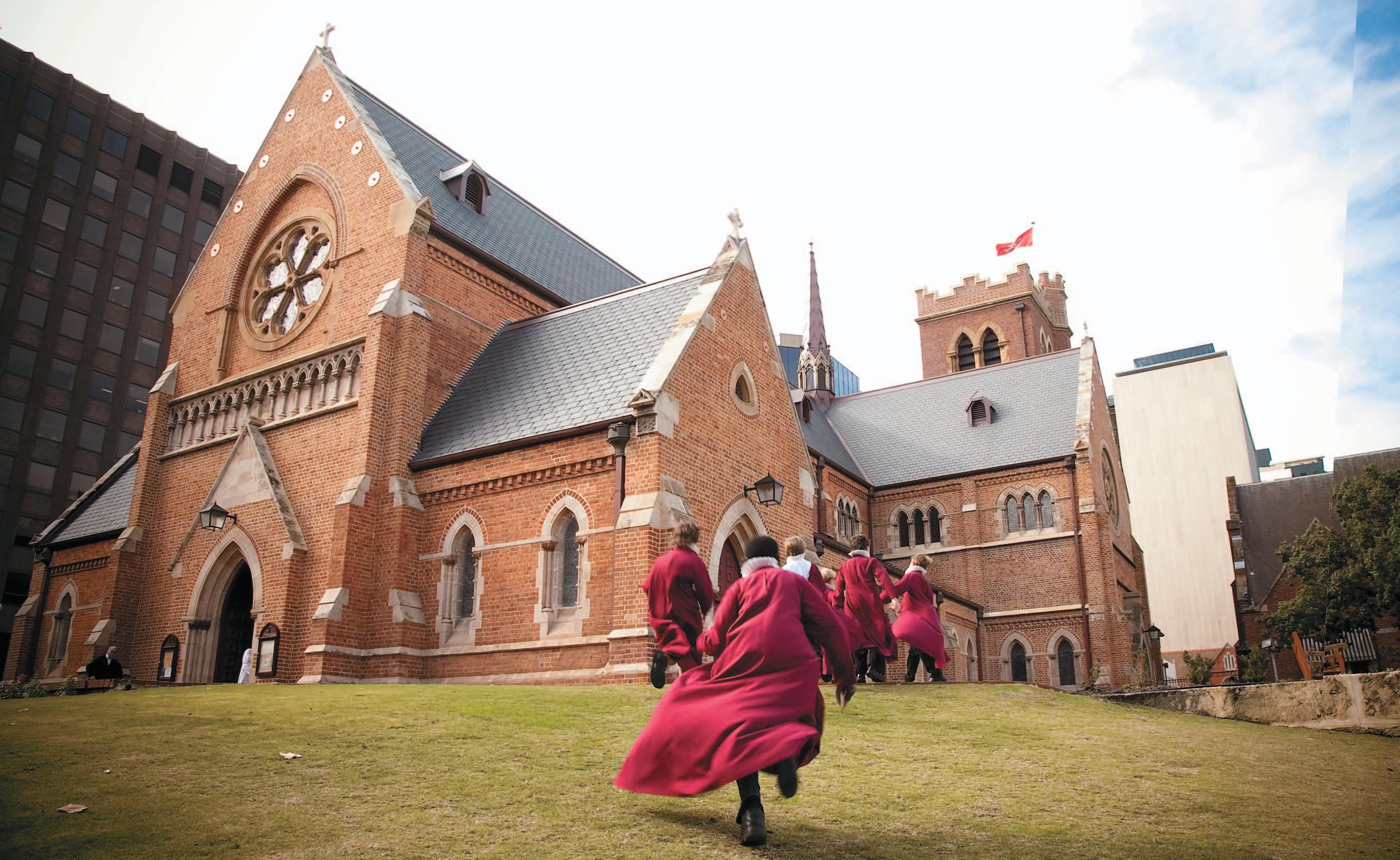
There is a story of a bishop in an Australian outback diocese who always carried his chair (cathedra) in the boot of his car. Whichever church he was visiting in his vast diocese, that church became his cathedral for the day because that was where his chair was set up. Whether this is literally true or just folklore, it tells a story of extremes in the Australian cathedral world.Choristers in front of St George’s, Perth Photo © Russell Barton
hall rather than a place of worship. Fortunately, the majestic exterior is immune from ecclesiastical vandalism.
Probably the hardest working cathedral choir in the country is that of St Paul’s in Melbourne, Victoria. Since its formation in 1888, the choir has had only five directors of music and still maintains a daily Evensong, the only cathedral in Australia to do so. This is all the more remarkable since the choristers are educated at Trinity Grammar School, Kew, a considerable distance from the cathedral, and come in for practice after school by bus, train or tram. The current director of music, Dr June Nixon, was appointed in 1973 and has so far been responsible for the music at more than 11,500 choral services.
St John’s Cathedral in Brisbane, Queensland has recently adopted the model of two part-time positions, director of choral music, Graeme Morton and organist, Michael Fulcher. The choir of men and boys is sustained by offering 50% scholarships at the Church of England grammar school which is some suburbs away from the cathedral. The boys rehearse at the school three mornings a week at 7.30am plus a Friday afternoon rehearsal and the usual pre-service rehearsals. Their training is enhanced by having two female tutors, one being a vocal teacher and speech therapist, the other a primary school music educator. The weekly routine of Sunday morning Choral Eucharist and Evensong is maintained, and there are also two other choirs: a mixed-voice choir, the Cathedral Singers, and a chamber choir that provides more specialized repertoire and non-liturgical performances.
The music at St George’s Cathedral, Perth, Western Australia has always benefited from the policy of its dean and chapter to search the world for the best possible music director, even if such appointments are not expected to be long term. Since the arrival in 2008 of Joseph Nolan, formerly of Her Majesty’s Chapels Royal, St James’s Palace, the standard of music at St George’s has grown exponentially. The cathedral choir has twenty boy choristers with a substantial waiting list and sixteen paid professional lay clerks, a rarity for Australian cathedrals. St George’s probably has the largest budget for music of any cathedral in Australia. There is no tradition of daily Evensong but the choir has a very full
schedule. It now broadcasts regularly and records for the ABC. There is also the Cathedral Consort, a group of twenty professional singers which shares the load of Sunday Evensongs with the men and boys’ choir. Such has been the impact of St George’s music on the city of Perth that the cathedral holds a major annual concert series with the cathedral choirs and guest artists, featuring at least two orchestral oratorios a year with players from the West Australian Symphony Orchestra. This is supported financially by the cathedral chapter, private sponsors and the cathedral’s Foundation for the Arts. In 2008 the choir travelled to France and sang in Amiens Cathedral and St Sulpice, Paris.
For all TV watchers of test cricket, St Peter’s Cathedral, Adelaide, South Australia, will be a familiar sight. Indeed at the end of every other over at the Adelaide Oval the commentator tells us that the ball is being bowled from the cathedral end.
The cathedral choir has been in existence for over 130 years, although is no longer exclusively a men and boys’ choir. In fact it is the only choir of children and adults of its type in Adelaide. The children have performed with the Adelaide Symphony Orchestra and the State Opera, while the lay clerks are amongst Adelaide’s best choral singers. The choir now sings at three services a week, two on Sunday and a Wednesday Evensong. Music education is taken very seriously and the trebles are fully involved with the RSCM Voice for Life scheme. The emphasis on sight-reading enables the choir to learn repertoire quickly and allows time for work on choral and vocal technique. For many years St Peter’s Cathedral has had a separate choir director, Leonie Hempton and organist, Shirley Gale. Recently the choir made its second international tour, to the south of England and to Rome, singing in St Peter’s Basilica.
The capital city of Tasmania, Hobart, has the beautiful St David’s Cathedral. It once had an all-male tradition but the boys’ choir was disbanded in 1998 and now is a mixed adult SATB choir of up to twenty singers, with a current age range of seventeen to seventy-eight years. This includes the longestserving chorister who has contributed sixty-eight years of unbroken service, man and boy. There is a Choral Eucharist each Sunday morning, with Evensong on the fourth Sunday
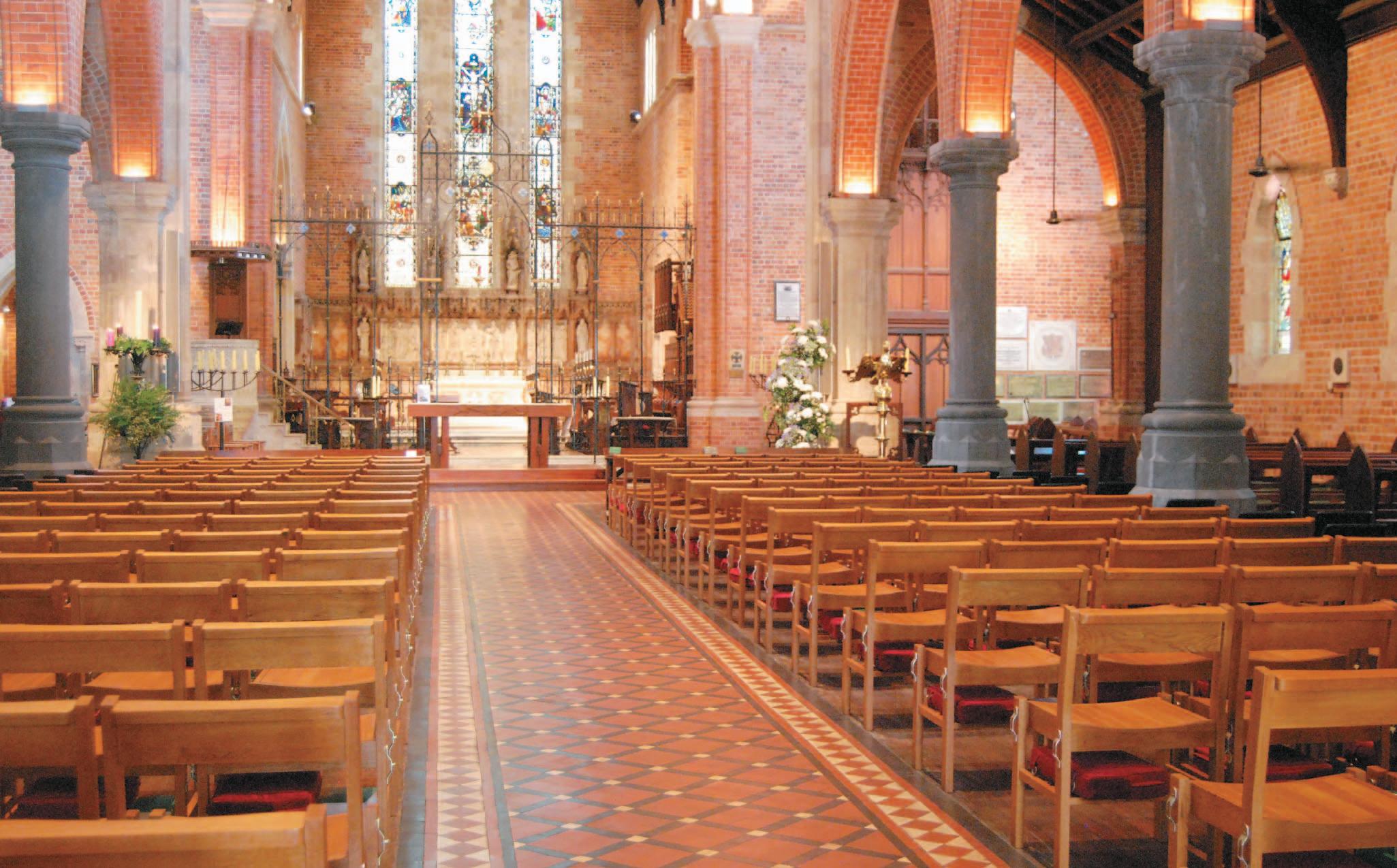
and Choral Mattins on the fifth. The organist, Andrew Bainbridge, is part-time, so the cathedral frequently relies on other local organists to play for funerals and occasional services.
Moving on to the regional cathedrals, All Saints Cathedral, Bathurst, in the central tablelands of NSW, is blessed with one of the finest acoustics in the world for choral music and is a favourite venue for visiting overseas choirs. Bathurst was also the centre for the most recent RSCM National Summer School, directed by Matthew Owens from Wells Cathedral. Choral Eucharist on Sundays is at the early hour of 8.00am, and there is a monthly Sunday Evensong at 4.30pm. For this Evensong, the regular core membership of about sixteen adults swells to around twenty-four, with talented and dedicated singers travelling from far afield to rehearse midafternoon and then to sing a full choral service. Working with limited financial resources, the Precentor/Liturgist Michael Deasey is also principal organist and director of music, which has the advantage of avoiding any policy disagreements. A recent innovation has been the introduction of a choral scholarship to a tertiary or secondary student, the first recipient being a very welcome young tenor, an endangered species in most country towns.
Also in New South Wales is Christ Church Cathedral, Newcastle, an imposing building overlooking the city, where the choir maintains a schedule of Choral Eucharist and Evensong every Sunday, as well as other special diocesan and civic occasions. It is a volunteer choir of around forty members (aged between thirteen and eighty-five), but averages about twenty-five choristers for services. In this mixed choir, a limited number of scholarships are offered to those studying at secondary or tertiary level. The organist and music director is Peter Guy, who maintains a large and varied repertoire. Like most Australian cathedral music positions, he is classified as part-time, but of course that is a reality only in terms of remuneration, not in actual time. Also, like many provincial cathedrals, the assistant organist is totally voluntary but there is minimal funding in Newcastle for an organ scholar.

In the far north of tropical Queensland is St James’s Cathedral, Townsville, the seat of the Bishop of North

Queensland. It is an impressive edifice but struggling financially, with most clerical and lay positions being filled by dedicated honoraries. This includes the director of music Sam Blanch, whose day job is Head of Music at Townsville Grammar School. The cathedral choir which sings at the 9am Sunday Eucharist has about eight regular members. It is only for the festival Sundays that the choir is robed and sits in the choir stalls. For ordinary Sundays the choir sits in the midst of the congregation from where it leads the congregational setting of the Eucharist and gathers together for the psalm and motet. However, like so many cathedrals in Australia, even the struggling ones, there is recognition that Evensong is one of the great liturgical creations of all time, and the choir sings it regularly, usually on the first Sunday of each month. For large diocesan events, choirs from Aboriginal and Torres Strait Island congregations come to sing, and the cathedral is also the venue for concerts and school choral festivals.
The stunningly beautiful St Saviour’s Cathedral, Goulburn is the seat of the Bishop of Canberra and Goulburn, with the cathedral city being an hour’s drive from the nation’s capital. The cathedral choir is small, currently about ten members, but in the process of expanding, and sings at the Sunday Eucharist (where its solo contribution is the communion motet), Holy Week services, and provides the music for major diocesan events. Greg Oehm (Director of Music) and Robert Smith (Organist) are both professional musicians in their own right but have to work with limited resources. A highlight of 2011 was to combine with the choir of Christ’s College Cambridge to sing Choral Evensong in celebration of four hundred years of the King James Bible; the 1604 version of the Prayer Book was used, together with period music and readings.
Similar stories with local variations can be told of the thirteen cathedrals not discussed in this article, most seeing their principal role as a parish church and only going into ‘cathedral mode’ for diocesan occasions. But cathedrals great and small, city or country, regional or remote, share the one great common cause, which is to worship God – not because He needs it, but He knows that we need it, to transform us, inspire us and to humble us.
Age: 37
Education details:
Ysgol Dyffryn Ogwen, Bethesda, North Wales; Eton College (Sixth Form Music Scholar); Magdalen College, Oxford and Yale University.
Career details to date (and dates):
Organ Scholar, Magdalen College, Oxford (1992-5); Assistant Organist, St Asaph Cathedral (1995-8); Organ Scholar, Hampstead Parish Church (1998-9); Fellow in Church Music, Christ Church, New Haven, CT, USA (19992001); Assistant Organist, St Philip’s Cathedral, Atlanta, GA, USA (2001-2); Director, Atlanta Schola Cantorum (2001-3); Sub Organist and Director of Guildford Cathedral Girls’ Choir (2003-9); Assistant Director of Music, Exeter Cathedral (2010).
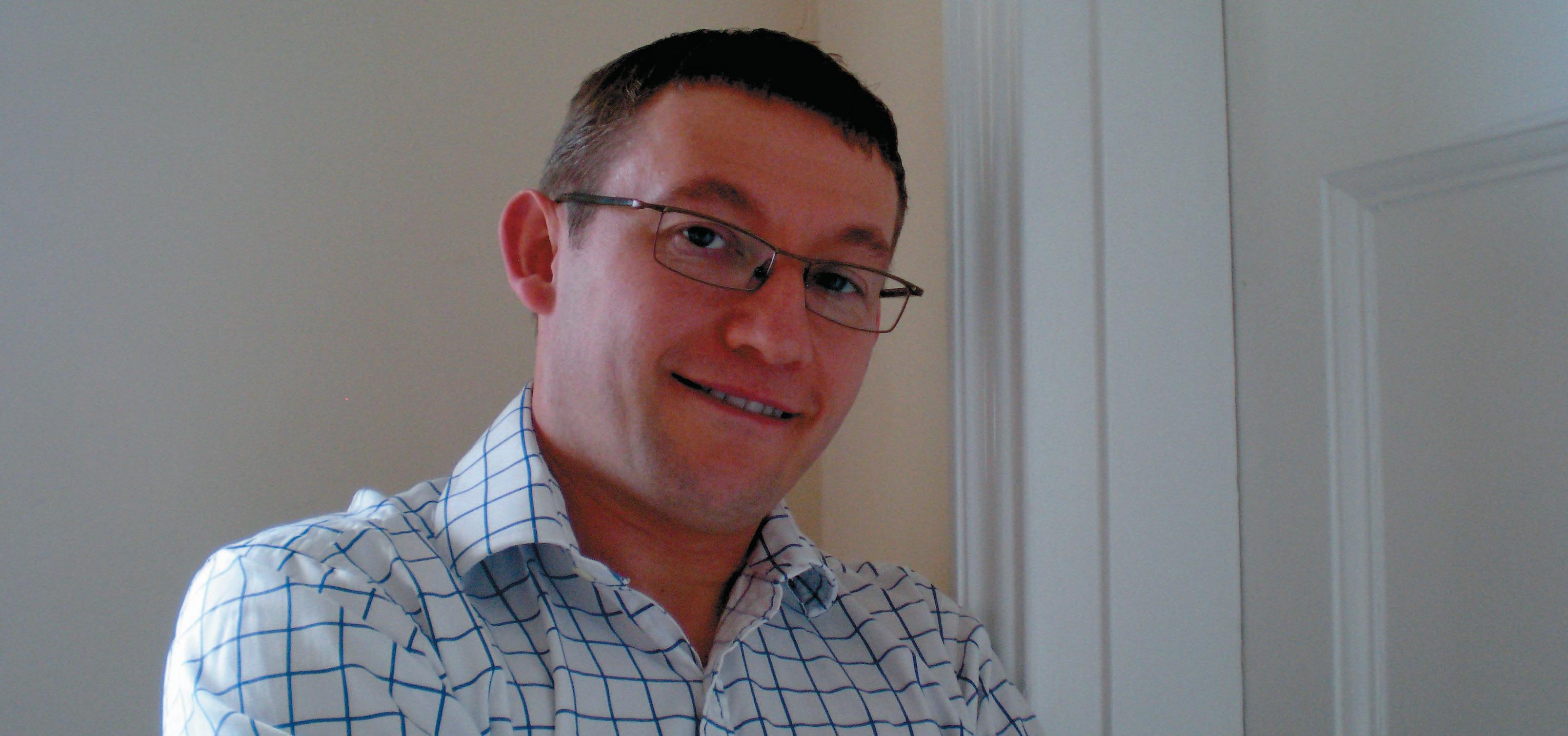
Were you a chorister, and if so, where? Did you enjoy the experience? Sadly, no, I wasn’t a chorister. In retrospect I wish I had been as I’m sure it makes one a better choir trainer when working with children, simply from being able to empathise with the chorister’s lot.
What did you enjoy most about being an organ scholar at Magdalen?
It was a privilege to live in a college of such architectural beauty: the scale of intimacy and splendour of the college chapel remains (for me) one of its glories. Working with Bill Ives made a lasting impression: having a singer of that calibre standing in front of a choir always made me wish I didn’t have a voice like a corncrake!
What or who made you take up the organ?
Two of my sisters are organists: a combination of their example and encouragement together with spending most Sundays in church did it for me. My earliest memory is of hearing Swell to Mixture at our local church, with the box half open. Should I go and get my anorak now?
When you were at school, did you think you might end up where you are now? Why or why not?
No, not at all, I think one soon learns the truth of John Lennon’s line that life is what happens to you while you’re busy making other plans! Equally, I think that seeking out high-powered jobs becomes less attractive as one gets older when one realises that they are often far less glamorous than they appear (and highly stressful!).
What was different about studying in America? Why did you go there?
I went to America because I met Thomas Murray (through Geoffrey Morgan) and applied for the Master’s course in organ performance at Yale, where Tom is the professor of organ. I then stayed in the USA for four years: like most Brits who go there I was mesmerised by the vitality of the organ scene, the fact that people actually go to church, and by the salaries. Studying in America is wonderful because pedagogy is considered de rigueur from the undergraduate level. The experience cleaned up my very sketchy technique! In general, American organ studies look far more towards Europe than they do towards the UK, so they provide a good contrast with our home-grown Anglican approaches.
What organ pieces have you been inspired to take up recently and why?
I heard someone play Guilmant’s Fifth Sonata recently so I’m hawking that around a bit at the moment, especially as this is a Guilmant centenary year. I’m one of those people who learns the first two pages of pieces then loses interest, but a piece that I’ve enjoyed learning is Miroir by Ad Wammes.
Have you been listening to recordings of them and if so is it just one interpretation or many and which players?
I’ve not listened to the Guilmant, but Andrew Canning’s recording of the Wammes is firmly in the iPod.
Which organists do you admire the most?
It would be a huge list! I guess it depends on the repertoire, but André Isoir, Nathan Laube and Tom Murray jump to mind. I am captivated by Cameron Carpenter, although, like Jean Guillou, his interpretations can be a little too outré for my Luddite tastes. And I’m envious of his wardrobe.
What was the last CD you bought?
The album ‘Swim’ by Caribou
What was the last recording you were working on?
The girls and men of Exeter Cathedral Choir have just recorded a CD of anthems for the liturgical year
What is your favourite organ to play?
Bristol Cathedral
What is your favourite building?
(sacred) Notre-Dame de Fontgombault, France; (secular)
Bilbao Guggenheim
What is your favourite anthem?
Media vita – John Sheppard
What is your favourite set of canticles?
Dyson in F
What is your favourite psalm and accompanying chants?
Psalm 53, Robert Ashfield
What is your favourite organ piece?
Sicilienne – Duruflé
Who is your favourite composer?
Jehan Alain
When is your next organ recital? Which pieces are you including? The diary is empty! Any takers?
Have you played for an event or recital that stands out as a great moment?
One Good Friday at Guildford Cathedral, during the singing of ‘When I survey the wondrous cross’, something happened in that the entire congregation seemed to be completely involved with the words and we accompanied each other rather than there being any sense of leading. Once we got to the line ‘demands my soul, my life, my all’ I think we all felt we had gone above and beyond a normal hymn sing, even though I know we should be aspiring to that all the time!
Has any particular recording inspired you?
The Simon Rattle/Andrei Gavrilov recording of the Ravel Concerto for the Left Hand inspires me to practise the piano harder.
How do you cope with nerves?
I try to convince myself that nerves are a hindrance; getting that balance between inertia and adrenalin can be tricky.
What are your hobbies?
Aviation – I’m learning to be a glider pilot and would like to work towards getting a private pilot’s licence one day.
Do you play any other instruments? The flute (horribly).
What was the last book you read?
I’m ashamed to say I can’t remember... eek! Does Wikipedia count?
What are your favourite radio and television programmes? Radio 4 Woman’s Hour – I love Jenni Murray’s voice. I don’t have a TV, but if I did I would spend all day watching American sitcoms.
What makes you laugh? Life.
If asked, would you recommend life as an organist? Only if you are independently wealthy.
What are the drawbacks?
I suspect that it must be getting generally harder when we see the role of the church organ changing so much. We have too many highly able people and too few good jobs that pay well.
If you could have dinner with two people, one from the 21st century and the other from the past, who would you include?
Richard Feynman and Isambard Kingdom Brunel
What do you think should be the role of the FCM in the 21st century?
We live in strange, seemingly contradictory times. Church music seems now to have the broadest remit. We have pockets of staggering musical and liturgical excellence, and flourishing figures, yet that which would once have been widely understood to be an Anglican experience can now no longer be assumed. People go to church once a month on average, not weekly, or daily; recruiting girls appears to be easier/healthier than recruiting boys, and yet we have a revived interest in young people singing in general. Maintaining the tradition seems no longer to be sufficient – its sustaining worth has to be re-taught, or reinvented maybe. The more the FCM can do to encourage that the better!

Previously undreamt-of challenges to this fragile musical miracle have arisen since the 1980s, but in his generally optimistic final editorial in the May edition of CATHEDRAL MUSIC Andrew Palmer wrote: ‘We should remember that no traditional choir has actually disappeared. Although they may have changed in character, none has vanished.’ This could offer some reassurance if only it were true. The last count1 of both Anglican and RC allmale cathedral choirs revealed only six surviving in the whole of Ireland, five left in Wales and none at all in Scotland.
In England, there are already at least ten cathedrals, including Manchester, Coventry and Leicester, in which the genuine traditional choir has ceased to be. Some, like Sheffield, Leeds RC, Brentwood RC, and Bradford, seem to be establishing a large, mixed-voice composite choral force comprising men, women, girls and boys, from which to draw various sections for services. Fortunately, except at Leeds, the men and boys still appear to sing alone now and then – at least for the moment. Another kind of fundamental change is that a woman is singing as an alto deputy in St Paul’s. This happens elsewhere too. Others are full-time, as in Peterborough, and now Lincoln. In all these places, by a stroke or strokes, the traditional choir could be said to no longer exist. The choir hasn’t vanished. But it’s the mixed-voice nature of that choir that is the nub of the matter.
Meanwhile, in his recent interesting article (CM May 11), James Bowman writes: ‘London is positively awash with excellent male altos’. Clearly no availability problem exists in the metropolis, but if there is no problem, why does St Paul’s use a contralto to deputise for an alto?2
There is no reason to suppose that the number of women singing alto will not increase, which will surely mean that the number of women in previously all-male choirs will also increase – an
irreversible step. Arguments for selecting women include:
(a) Some cathedrals report difficulty in recruiting altos.
(b) Why should women not be admitted to specialist, all-male choirs? It is a question of equal rights.3
(c) The suggestion that contraltos can offer the all-male tradition enhanced range and superior handling of register changes than can some altos/countertenors.4
Many would see (b) as part of a much wider sociological process.
With reference to (a), vacancies for all three male voice parts should still be attracting suitable men singers looking for work, particularly in today’s financial straits. The salary is too low? Unsurprisingly, many foundations (most now with at least one extra choir to fund) seem unable to keep pace with the cost of living. Much of the free or subsidised accommodation traditionally offered to men singers appears no longer available, though thankfully a few enlightened foundations still offer this. Cathedrals that take their choirs seriously could perhaps find ways of offering attractive packages to suitable applicants, with some sort of extra incentive for altos. There could also be some sort of on-going alto training programme, perhaps in conjunction with a neighbouring cathedral, even if choirs have no alto vacancies at the time.
Regarding (a) and (b), and leaving aside any equal-rights argument, one can understand the quick-fix temptation to use contraltos because an entirely alto-less choir cannot perform the repertoire. But when there’s a shortage of tenors, what then? And how can contraltos possibly be the real solution for our unique all-male tradition? They can’t, of course, without instantly changing the tradition. In recent years, despite continuing mostly high choral standards, the word ‘rescue’ has re-
surfaced, arguing that the boys need assistance from girls – and not only to reduce the boys’ huge time commitment. We’ve seen what that kind of assistance did to parish choirs. The ‘help-needed’ suggestion is a familiar way of affecting some desired change.
At (c) is the surprising idea that, in effect, contraltos can offer the all-male tradition better vocal technique than can some countertenors. As with the idea that singing boys need help from girls, we now have the implication that the historical male high voice somehow needs rescuing. This is a stride beyond simply appointing women to an alto-less choir, and quite different to the wartime expediency at Chichester, when two devoted ladies filled in the alto part self-effacingly.
Recently, Peter Phillips seemed to suggest that his contralto wife, now a deputy at St Paul’s, and ‘those who will come after, now that the breach has been made’, should be in all-male cathedral choirs because they have a bigger range and lack the register-change problems of altos. But properly trained countertenors have extensive ranges too AND have those essential lower notes; and ALL human voices need to negotiate register changes. In fact, deeper female voices often demonstrate more difficulties in that regard than many through-range countertenors. Countertenors have sustained their custom-composed alto line perfectly well over the centuries, adjusting in style as required. Many have brought distinction to the tradition as soloists. Others have provided the alto part beautifully but discreetly. It’s worth remembering too that the undeveloped falsetto sound is usually attractive, even when minimally trained, and can blend uniquely. (This is more than can be said for some other voices.) Most of today’s male high voices are trained better than ever, but of course good lower notes are essential too.
James Bowman, talking about the problems of ageing voices, relates the
In the 1980s, the composer Alan Ridout described our traditional all-male cathedral choirs as a ‘fragile, musical miracle’. How right he was, and how increasingly right he’s being proved. At the time, ‘fragile’ seemed to refer to the glorious but temporary stay of the boy’s voice, the wonderful, otherworldly quality of the male high voice, and the choral sound. Now, it refers more to the delicate ecology of the all-male choir itself.
familiar, amusing tale of the old Chapel Royal alto. Tales about older singers are legion, which is why most cathedral choirs (like other professional choirs) now re-audition lay clerks when they reach a certain age. Good technique is the key. The countertenor John Whitworth could still sing as well as ever in his late seventies. But without a doubt, both male and female singers can end up with, as the novelist Frank Baker once wrote wittily, ‘a voice like a starving fly in a bottle’5. We’ve all experienced granite basses, honky baritones, bleating tenors, fruit bowl altos, concrete or hooty contraltos, acid mezzos and scrawny sopranos. And they’ve not all been old.
Bowman suggests that if a male alto cannot be found for a vacancy in an allmale cathedral choir, a female singer would be acceptable, because in many university chapel choirs young male and female singers sing alto together and, based on compromise, the result is musically successful. Appointing contraltos might seem a convenient answer to the shortage of countertenors, but can it be the right answer for a male tradition? Almost all mature countertenors and contraltos have an inherently different timbre: valuable because different. In university choirs, of course, the accent is on ‘young’. On the same note, the female low voice tends to sound an octave lower than the male high voice, the harmonics of which light up the choral sound and are a vital factor in men’s-voice repertoire. Compromising the alto and contralto tonally, as with mixing boys’ and girls’ voices, produces the sad loss of both characteristic timbres.
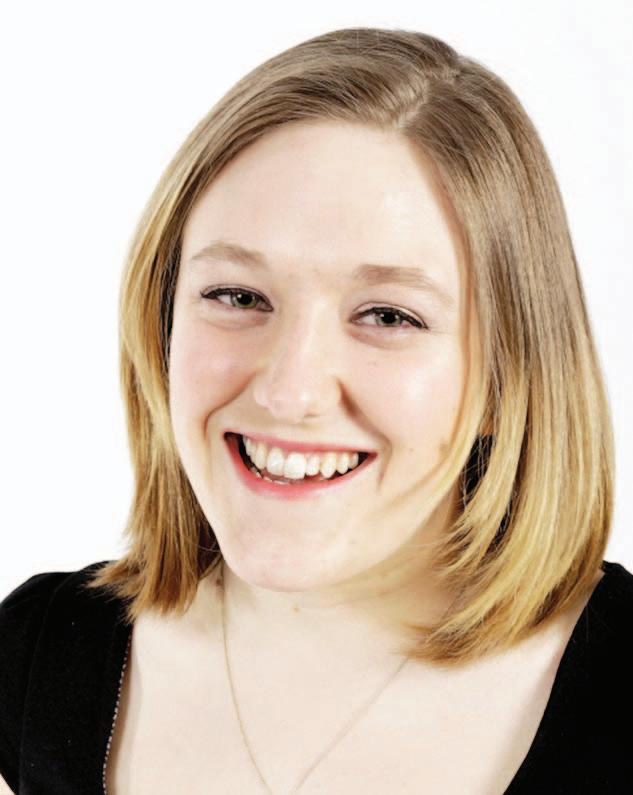

If, as is suggested, women singing
alto in previously all-male choirs are the answer to an alto shortage, unfortunately they will also become much of the problem. Contraltos in the back row will only worsen matters for the future. At Peterborough Cathedral, Andrew Reid seems, in effect, to encourage the process by affirming that: ‘...female altos provide role models for girls’. To boys, choral contraltos are a strong message that the alto part is women’s work: that men singing alto are a bit odd. Experience and common sense suggest that, as a result, fewer boys will become tomorrow’s countertenors. It is already the case that the myriad negative pressures felt by lads now result in a powerful disincentive for them to be in choirs at all; that singing is something for girls. Chorister boys are not unaware of these things. We may be hastening towards the extinction of the boy singer, the cathedral countertenor, and the tradition itself – resulting in the ever-accelerating loss of boys and men to God’s church and to good singing generally.
Reduced numbers of men singers will further injure mixed-voice choirs that are the laudatory norm outside ecclesia. These choirs offer the full range of the human voice, yet their men are already disappearing fast. But losing the allmale tradition would be a cultural tragedy. Its intrinsic, vocal restrictions are actually its glory, its wonderful difference. The artist who employs a restricted set of colours can achieve a special magic unobtainable in full colour. The all-male choir possesses this magic. Despite its uniqueness, unlike the mixed choir, once it is gone there
seems little likelihood of its revival.
A tradition is maintained and allowed to evolve by keeping the best of the old and introducing the appropriate best of the new; but in this case, because the survival of the art form itself depends totally on the survival of its true instrument, the historical original and any new variations must be kept strictly separate. Keeping the integrity of an art form is not normally a matter of gender, although in this case it is. However attractively toned and skilled her voice may be, or countertenor-like she may even be able to sound – and, rarely, such a contralto does surface – a female singer in an all-male choir cannot represent evolution or creative development. She creates an artistic hybrid that ipso facto nullifies a unique, intrinsically all-male art form. She is in the wrong milieu. Furthermore, another tragedy is involved, because women and girls trained to copy a male sound as nearly as is possible hardly represent development of the uniquely female genius, and its distinctive art forms that surely all of us wish to see. Diversity is an essential richness of the human condition.
Meanwhile, a traditional cathedral choir is either an example of our historic, unique, all-male choral genius, or it is not. There are no half measures. If we want it to survive, brave ways have to be found to accomplish this.
© Peter Giles 20111 Any slight inaccuracies in these details from my investigations do not invalidate either (a) the general picture, or (b) the clear direction of affairs. See also various CATHEDRAL MUSIC articles from the last (approximately) ten years.
2 Strictly speaking, the title ‘alto’ denotes a male singer exclusively. See this writer’s Countertenor article in the Millennium Edition of ‘Grove’, and his ‘The History and Technique of the Counter-Tenor’ (Ashgate, 1994).
3 Peter Phillips, ‘Rare Voices’, Spectator, November 2010; and Andrew Reid, ‘Sweet Singing in the Quire’, CATHEDRAL MUSIC, May 2011.
4 Peter Phillips, loc.cit.
5 Frank Baker, ‘Miss Hargreaves’ (Penguin, 1939).
A donation of £25,000 was made to Manchester Cathedral on Sunday, 2 October 2011. The Chairman of The Friends of Cathedral Music, Professor Peter Toyne CBE, presented the cheque to the Dean, the Very Reverend Rogers Govender. The donation is a welcome contribution to the current appeal for substantial funding to maintain the cathedral choir at Manchester. The Dean said: “We are fully committed to the choral tradition in the Church of England and this gift will enable FCM and the Chapter to become partners, ensuring that the rich historic tradition of cathedral music continues to be offered to Almighty God and to nourish our cultural and spiritual needs. My deepest thanks and gratitude to FCM for this very generous gift.”
Mr Christopher Stokes, Organist and Master of the Choristers, added: “We are deeply indebted to the Friends of Cathedral Music for their very generous grant. It will enable children from all walks of life to reap the inestimable benefits from the incomparable musical education that is enjoyed by cathedral choristers.”
Because of the extensive refurbishment carried out both inside and outside the church during the nineteenth century, many people can be forgiven for thinking that, from appearances at least, Manchester Cathedral is a relatively modem church. In fact, evidence of an early Saxon church in Manchester comes from the Angel Stone which was discovered embedded in the wall of the original south porch of the cathedral in the 19th century, which has been dated to around 700. In 1086 Manchester was recorded in William the Conqueror’s Domesday Book, which mentioned that the place had a parish church and it is believed that this church was located at the corner of St Mary’s Gate and Exchange Street. However, this site was deserted when in 1215 Robert Greslet, Lord of the Manor and 5th Baron of Manchester, decided to build the current church adjacent to his manor house (now Chetham’s Library). This became the parish church of Manchester, established as the Collegiate Church of St Mary, St George and St Denys. When the newly constituted diocese of Manchester was announced in 1847 the Collegiate Church became the cathedral.
A number of choirs perform at Manchester Cathedral. The cathedral choir consists of up to 20 trebles (boys and girls) and six lay clerks, who all work as professional singers in and around Manchester. The cathedral voluntary choir is a fundamental part of the cathedral community. It sings for services and concerts within the cathedral timetable and
participates in a number of extra services and events in the cathedral and throughout the diocese.
The Lammas website has been redesigned, with some new features and a more streamlined ordering system.
You can now download an MP3 file of any recording. This includes all of the titles that are now sold out as CDs, as well as some early recordings which have not been in stock for some time. There are also some CDs which were previously out of stock, including Sacred Songs of William Byrd: The Mixed Choir of Jesus College Cambridge, and Give unto the Lord: Lichfield Cathedral Choir, amongst others.
Lammas say: “Exploring the catalogue, finding what you want, and listening to samples before buying should all be straightforward with the improved layout and navigation.”
Nearly all the girl choristers at Llandaff Cathedral Choir in Wales have gained a prestigious award from the Royal School of Church Music (RSCM). Seventeen girl choristers took the Bronze Award examination in singing which is part of Voice for Life, the RSCM’s popular training programme for choristers.
Winning the Bronze Award means that the girls (who, when they’re not singing, fit in a full-time education at Llandaff Cathedral School) are entitled to wear green-ribboned medallions. During the exam, the girls had to sing a hymn, verses from a psalm, and an anthem. They also had to take some aural tests and sing a short piece of music at sight. In addition they had to discuss the importance of the choir in the worshipping life of the cathedral. All but two of the girl choristers attempted the award; one has already passed the Silver Award (the next level up), while another has gained the coveted Gold Award.
“Seventeen medals in one go really is a great haul,” says Simon Lovell Jones, the director of the choir. “It’s a fine tribute to the commitment of the girls; they are in excellent voice.” The Girls’ Choir at the cathedral, which includes Charlotte Church as a former member, was founded in 1995 by Lindsay Gray, then headmaster at Llandaff Cathedral School and now Director of the RSCM. “It’s marvellous to see that the girls have reached this level,” he said.

Roy Ford was born in Horsham, served in the Royal Navy in the Mediterranean and the Far East in World War Two, and gained a scholarship to Cambridge to read mathematics. In the event he studied history at Corpus Christi Cambridge, and with great success. He was an inspirational history teacher and housemaster at Tonbridge in the 1950s and the 1960s, and sixth-form master at Uppingham before becoming headmaster successively of Southwell Minster Grammar School and King’s Rochester in the 1970s, where he also continued to teach history.
But a bare record of his public career tells us little of the
complex, multi-faceted variety of his personality, or of how he came to touch so many lives in such a beneficent fashion. He was a man of exceptional intellectual penetration and erudition to be sure, but he was also a human being of rare intuitive and empathetic gifts, with a depth of personal compassion, shrewd judgement and gentle, but sly, satirical humour that won over so many, whether pupils or colleagues, who might initially have found him just a little alarming. What gave coherence and meaning to his life was a pattern of devout Anglican humility which liberated him to share and pass on – in a wholly unpreachy way – what he found eternally valuable in the literature, thought and art of the past.
Great teaching, like great acting, is a gossamer thing: hard to re-capture or to describe. However, certain features of Roy’s teaching stood out. Firstly, he commanded attention in the most unorthodox and charismatic way (which helps to explain why he received one of the few affectionate portrayals in Lindsay Anderson’s famous Tonbridge-inspired film, If !). Secondly, nothing was off limits in Roy’s idea of history – no technical or arbitrary disciplinary boundaries for him – history could and should involve the inclusive study of poetry, philosophy, art and architecture as much as the dry records of the state. His greatest legacy is perhaps to the many generations of his students who found inspiration in his insights, encouragement and humane example.
When he became headmaster of King’s Rochester in 1975 there were several urgent managerial and financial challenges that needed attention: they were addressed quickly and quietly, but where necessary with resolution. He also introduced major innovations – such as the admission of girls to the 6th form and serious fund-raising for new buildings –that now seem so much part of the natural order, it is hard to imagine any independent school without them.
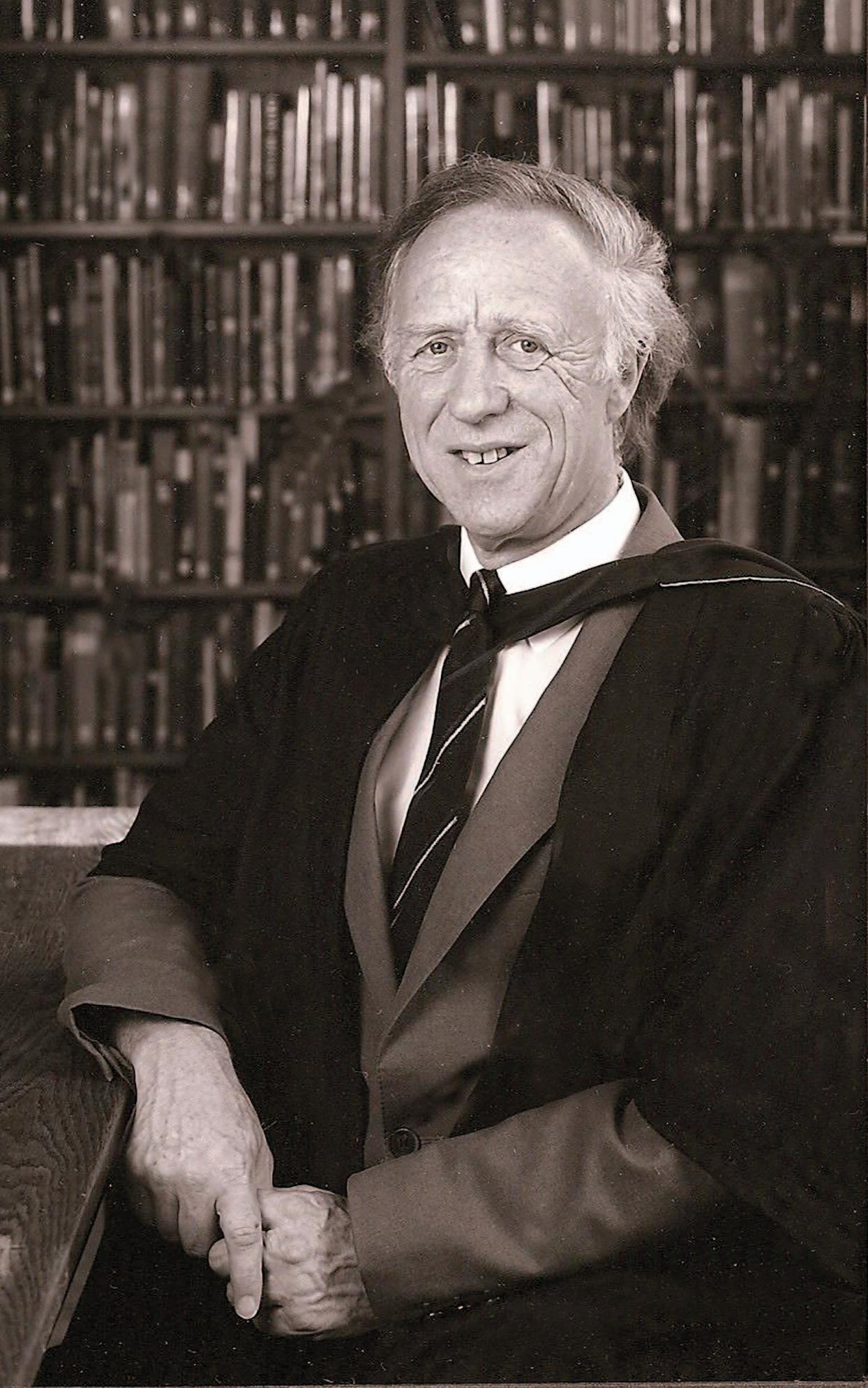
The decade of his leadership was a great era for King’s Rochester in collective academic, dramatic, sporting and musical achievement but it owed more to Roy than to any other individual, loath as he was and would be to take any such credit. He moved finally to Canterbury Cathedral in 1986 as Director of Visits, particularly developing the cathedral’s work with schools and young people. He was also, for some years, both Secretary and Treasurer of the Choir Schools’ Association and believed passionately in the value and discipline of a choir school education, and in the choral tradition of our cathedrals.
Roy Ford’s success as housemaster and headmaster depended hugely on his partnership with his wife Christine, whose strengths and skills complemented and completed his to a remarkable degree. She survives him together with their two sons and their grandchildren.
Viscount Physis technology is a dramatic step forward in the simulation of pipe organ sound. No longer are we limited to just playing back recorded samples.
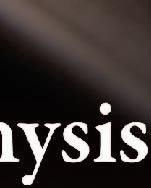
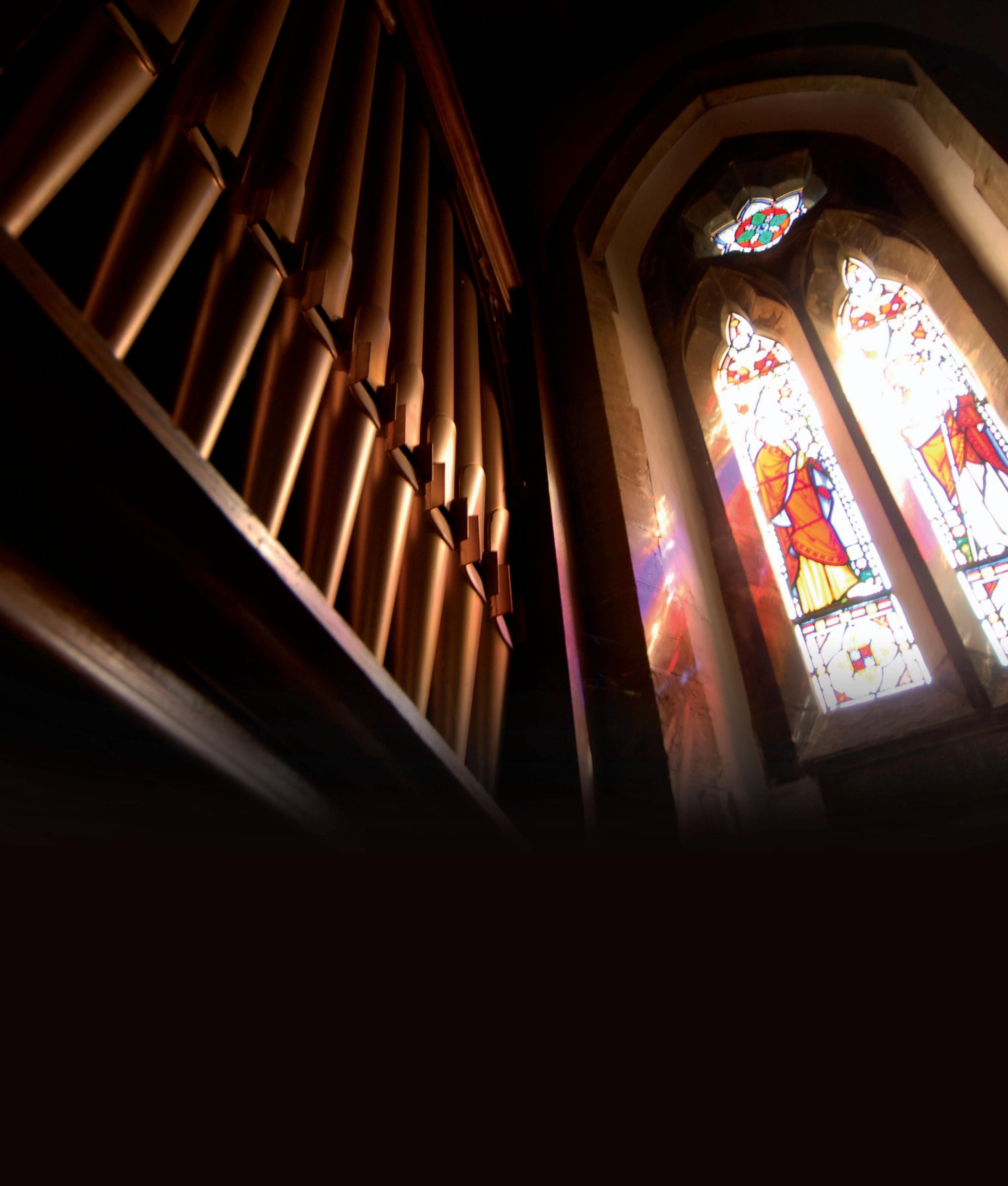
Physis creates a living model of organ pipes. The sound you hear subtly changes depending on the number of notes being played and the number of stops drawn.
With Physis tracker touch you can now realistically control the articulation of the pipe.
Physis is a quantum leap forward for digital organs only now possible by the dramatic increase in computer processing speeds.
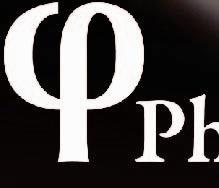
Once you have heard and played a Physis instrument for yourself you will need no further convincing.
Instruments start at just £7850 (inc. VAT) and will truly last you a lifetime.
With Physis, not only is the sound live, but so is the instrument. You will always be able to update to the very latest software edition and so benefit from the improvements that will be made over time.
but so is the




How do you respond to a unique challenge and create a year-long celebration for the Golden Jubilee of a cathedral voted the nation’s favourite twentieth-century building? Is the shadow of the 1962 Consecration Festival a help or a hindrance? Is the task made more difficult because, generally, cathedrals are not used to promoting a multiplicity of large-scale events over a sustained period?
Coventry Cathedral, and what happens there, is always going to be news – at the moment we are in the middle of an ongoing media debate about the use of ‘both’ our cathedrals (the new and the
ruins of the old) for secular events, and whether this represents ‘sacrilege’ of the worst kind. From the start of the planning process there was, therefore, a desire to make the Golden Jubilee’s theme a celebration of the city and the cathedral’s extraordinary local, national, and international work of peace and reconciliation. Since before its consecration the building has been a dynamic centre for worship and mission, and a place of pilgrimage. It is also a focal point for the city, the region, and even for the world.
In Coventry Cathedral, the past 50 years have witnessed the creation of a vibrant
music tradition. We now support four choirs, with children participating from many local schools, and the cathedral is also the home of St Michael’s Singers (a large mixed choir established following the consecration of the new cathedral). We also have a magnificent 4-manual Harrison & Harrison organ (largely the gift of the Royal Canadian College of Organists) which, together with three other organs (the ‘Norwegian’ Organ –a mechanical action instrument, given by the people of Norway in 1967, built by Torkildsen Brothers and designed by Ole Rasmus Krag – together with two chamber organs) forms a suite of instruments for the cathedral’s varying needs.
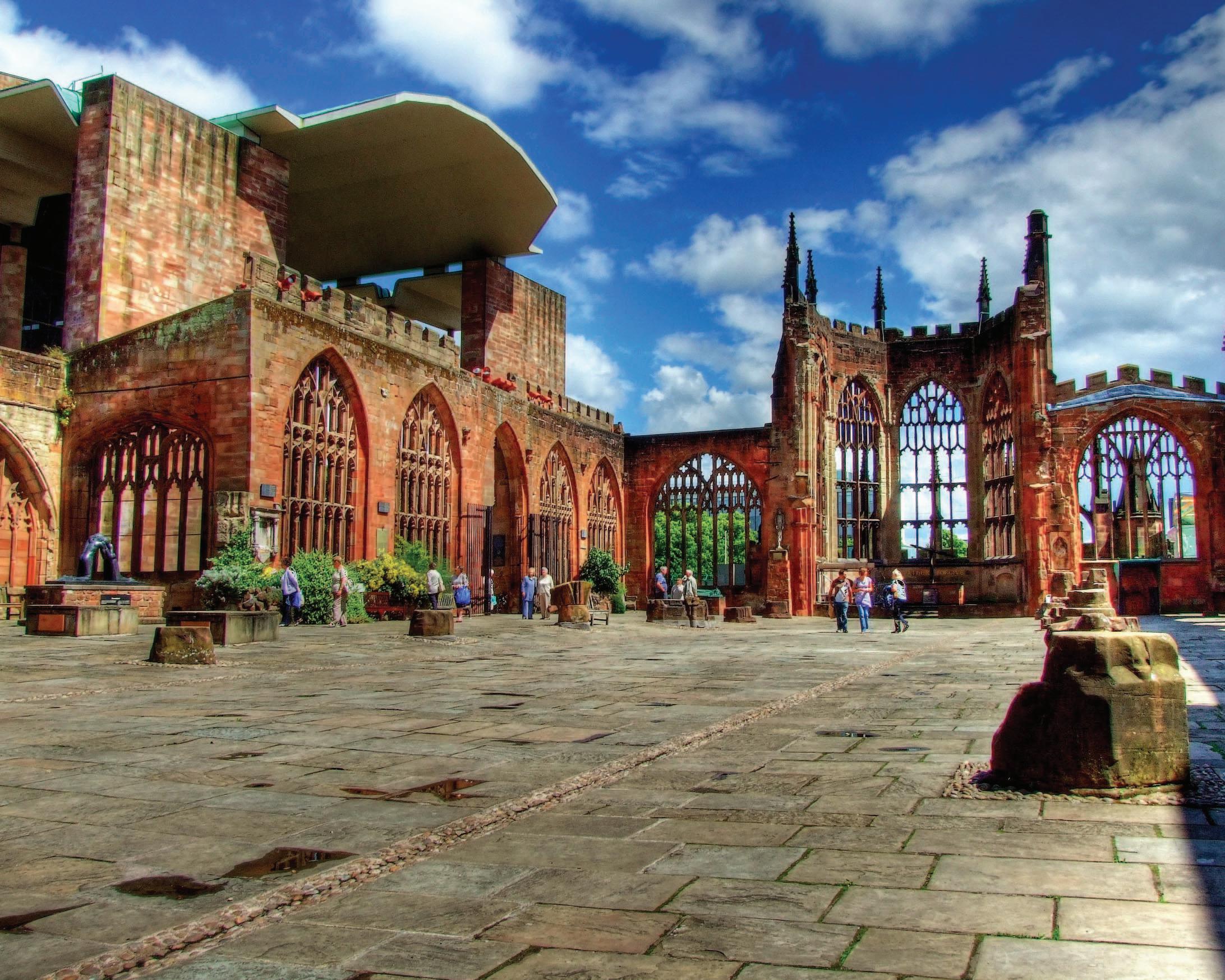
So where have we got to in meeting the ‘Golden’ challenge, with some six months to go? How have the shadows of the past influenced our planning? The 1962 Festival, with 108 events over a three-week period spread across the diocese, was helped by the cathedral having a unique ‘novelty’ value with which many organisations wanted to be associated. Much has changed since then, of course, but not our sense of purpose. We are determined to continue the legacy that the Consecration Festival created.
To see how three of our major 2012 events reflect the past, we should look at the concept of commissioning new music, and especially at two works that were intended to complement the consecration of the cathedral following the devastation of war. Perhaps the most iconic of these remains Benjamin Britten’s War Requiem, premiered in the cathedral on 30 May 1962. Fifty years to the day, the City of Birmingham Symphony Orchestra (who played in the first performance) returns to the cathedral with its own chorus and youth choruses to recreate that event. As at the premiere, the soloists have been chosen to represent the work’s international dimension – the Latvian soprano Kristine Opolais, Mark Padmore (tenor) and Thomas Quasthoff (baritone) from Germany. The performance is to be conducted by the CBSO’s Music Director, Andris Nelsons (another Latvian). A second performance, three days later (in an echo of the 1962 Festival), is being negotiated to satisfy the demand from disappointed patrons unable to get tickets for the actual 50th anniversary event. The concert will be recorded for BBC4 television, supported by a documentary on the same channel and will be an Archive on 3 project for BBC Radio 3.
There is, as with many other great works of art, a fascinating story about how War Requiem came to be written for Coventry and the difficulties involved in getting it to performance. It was then and still is a controversial piece of music – angry, unsettling and thoughtprovoking, contrasting the ugliness of war with the beauty inherent in mankind, yet offering no easy comfort or simple answers. And getting the work performed at all turned out to be a nightmare with the builders making continuous noise during rehearsals, permission for a tiered platform being
refused by the cathedral authorities in a continuing clerical battle worthy of Anthony Trollope, the entire chorus threatening a walkout, the ‘ghosting in’ of The Ambrosian Singers to strengthen the amateur chorus, the lastminute crisis leading to a change of soprano soloist due to a deliberate sabotage attempt by the Soviet authorities (this was, after all the Cold War era), the use of the Melos Ensemble rather than a chamber group from the CBSO, and Britten’s worry about conducting the combined forces at the premiere leading to Meredith Davies stepping in at the 11th hour. All the aspects surrounding the birth of a great work are to be explored in a book to be published in time for the 50th anniversary performance in May 2012 ( The Idea was Good – from Festival Director, Michael Foster).
And there was a major casualty of Britten’s panic about the premiere of War Requiem. Sir Arthur Bliss, who in 1962 was Master of the Queen’s Music, had been commissioned to write the other large-scale work for the Festival, and this was originally to be performed in the cathedral on the night of the consecration. The Beatitudes, for soloists, chorus and orchestra, was conceived with the space of the cathedral very much in mind and incorporated a major solo part for the cathedral organ. Because of the fuss over preparations for War Requiem the concert was rescheduled in the cramped surroundings of the former Coventry Theatre, using an imported Hammond Organ. Many in the chorus couldn’t even see the composer, who was conducting. Bliss remained hopeful, to the end of his life, for the ‘wrong to be righted’. To this day The Beatitudes has never been heard in the building for which it was written but during the Golden Jubilee celebrations the work at last comes home in spectacular style, performed by the BBC Philharmonic and the Sheffield Philharmonic Chorus with Elizabeth Watts (soprano) and Allan Clayton (tenor), conducted by Paul Daniel, a former Coventry Cathedral chorister. BBC Radio 3 will record the event for future broadcast and a radio documentary about Sir Arthur Bliss and The Beatitudes is being planned.
Along with the delayed cathedral premiere of The Beatitudes we have included Arnold Schoenberg’s dramatic A Survivor from Warsaw (featuring the baritone soloist Omar
Ebrahim – another former Coventry Cathedral chorister). Beethoven’s Fifth, which is probably the composer’s (or even the world’s) most famous symphony, completes the programme.
Because the 1962 Festival featured newly commissioned music (and also the world premiere of Sir Michael Tippett’s opera King Priam) we asked James MacMillan to write a new work for our Golden Jubilee celebrations. This commission, supported by the London Organising Committee of the Olympic Games and Arts Council England, has become a major part of the 2012 Cultural Olympiad. James MacMillan is writing a Gloria to be premiered by the CBSO, Ian Bostridge (tenor), St Michael’s Singers and a large choir of local schoolchildren all conducted by the composer. In the same programme Paul Leddington Wright, who acts as Musical Adviser to the cathedral’s Dean and Chapter, conducts Benjamin Britten’s St Nicholas, which provides a further opportunity for the children’s choir to sing with a professional symphony orchestra in magnificent surroundings. Britten’s Serenade for Tenor, Horn and Strings adds variety together with another Coventry Cathedral commission (from 1980), War in Heaven, by Neil Cox.
During the weekend of the Patronal Festival there is to be a Gala Concert with Lesley Garrett (soprano) and Stephen Gadd (bass) – another former Coventry Cathedral chorister – together with the English Symphony Orchestra and all four cathedral choirs (including St Michael’s Singers) conducted by Paul Leddington Wright.
These four events form the core of our musical celebrations in the Golden Jubilee year, and details of these and all others can be found on the cathedral’s website which is regularly updated. The cathedral’s aspiration in 2012 is for local, national, and international visitors to engage with a world-class
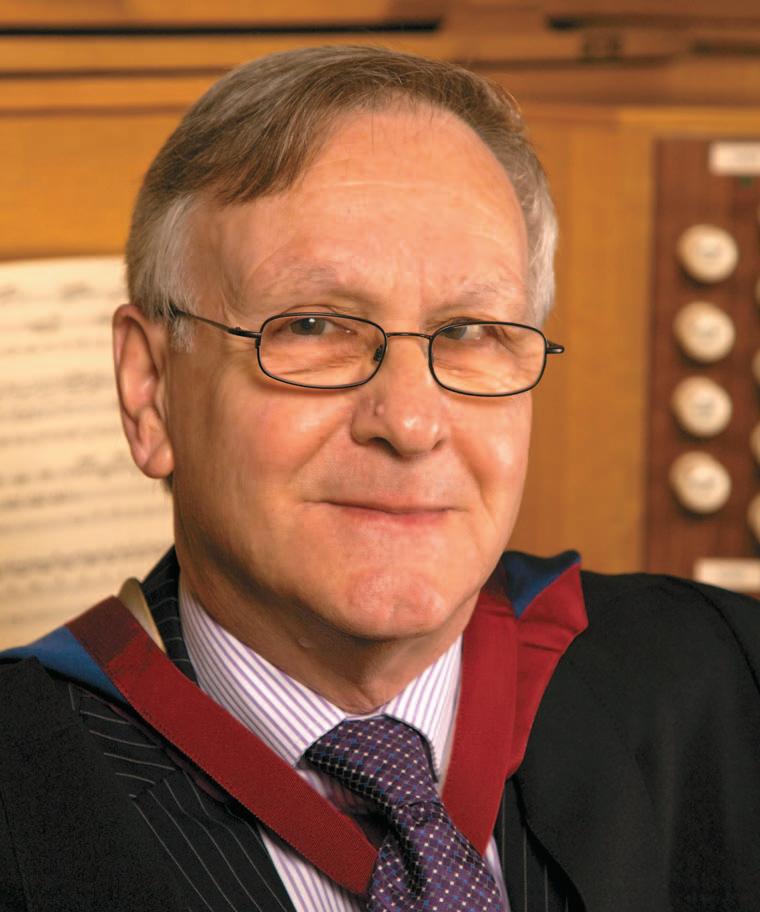
music programme attracting new audiences and communities to experience our vibrant musical tradition, perhaps for the first time.
But our ‘Golden’ plans include much more than the performing arts. Described by its architect, Sir Basil Spence, as a ‘casket of jewels’, Coventry Cathedral is proud to be custodian of some world-famous mid-twentieth century artwork. We are also promoting an exhibition on all twentieth century cathedrals, created for Guildford Cathedral (which is currently celebrating its own Golden Jubilee). There are special liturgical events (including the Golden Jubilee Service, in the presence of Her Majesty the Queen, exactly 50 years to the day of the original consecration) and a wide variety of lectures from celebrity guest speakers, plus visits from the BBC Antiques Roadshow, BBC Question Time and BBC Songs of Praise. It looks like our year is going to be very full indeed!

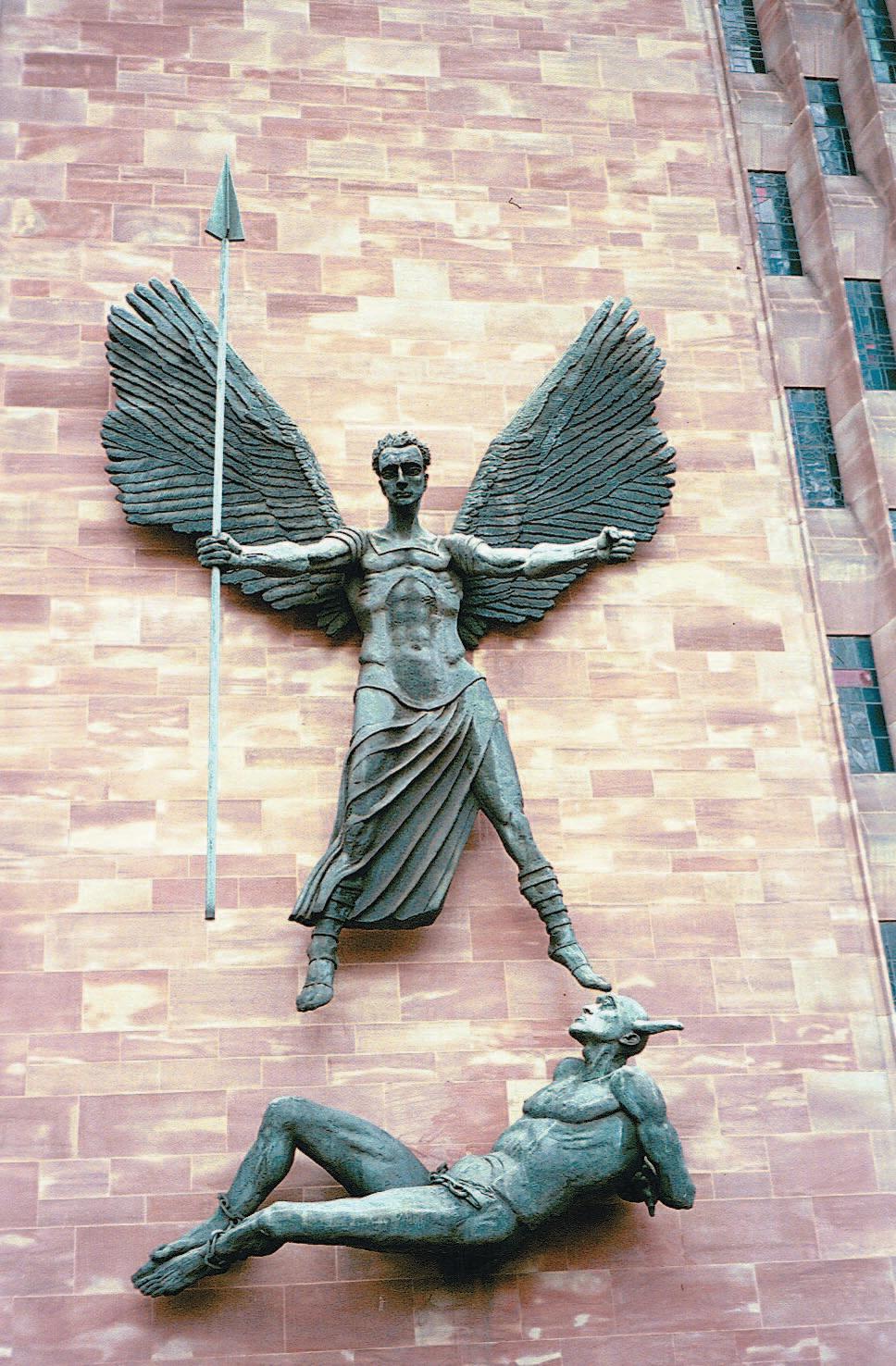

Is there a right or a wrong way to plan such a variety of events for a whole year
of celebration and still hope to make them all fresh and appealing? Some may argue that the programme is too highbrow, others that it is not wideranging enough. To some extent the legacy of the 1962 Festival has shaped the necessity to include, as two of the big events in 2012, works that will always be associated with Coventry Cathedral and its message as an Icon of Hope. Time will no doubt tell. We are still seeking funding to make all the celebrations a certainty, although there has never been any doubt that we will get there. And perhaps our experience may be of value to other cathedrals when they contemplate promoting large-scale festivals or celebrations. Certainly we have been offered sound advice from the organisers of the Three Choirs Festival, and would be happy to pass on our, perhaps unique, experience as a model of how (or how not) to approach such an undertaking. The journey has been an interesting one so far – and I’m sure it will get more interesting yet.
Michael Foster is Festival Director for Coventry Cathedral’s Golden Jubilee celebrations. His earliest musical training
was as a violinist, but he later went on to study the piano and the organ and has a degree in music. Most of his professional life has been spent working in the criminal and civil courts, obtaining a law degree and, later, a higher degree from Cardiff University after his research into Elgar’s “symphonic” approach to oratorio. Much of his musical activity in more recent years has been with the City of Birmingham Symphony Orchestra Chorus but he also had a long association with the Three Choirs Festival both administratively and in an editorial capacity for the annual programme book. His book on Elgar’s Apostles Trilogy, entitled ‘Plotting Gigantic Worx’, was published in 2003. He is currently researching for a book on the story of Britten’s ‘War Requiem’ to be published next year.
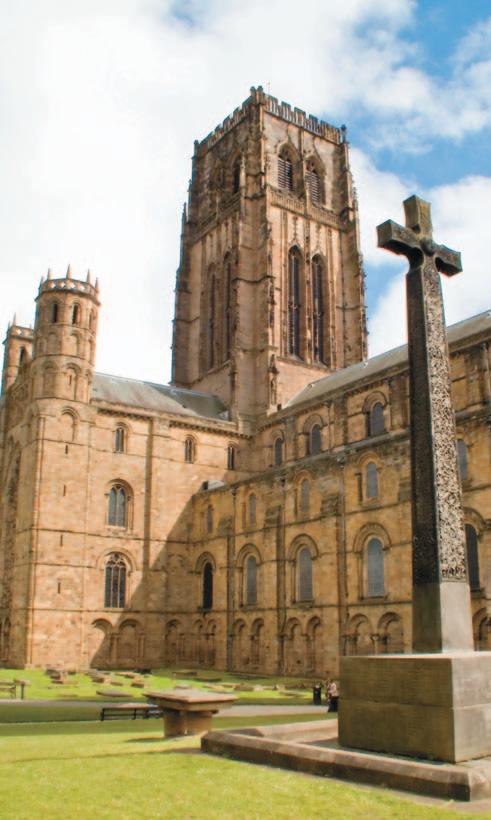
A donation of £20,000 was made to Durham Cathedral on Sunday, 2 October 2011. The cheque was presented to the Dean, the Very Reverend Michael Sadgrove, by Peter Smith, the National Gatherings Manager for the Friends of Cathedral Music (FCM). Placing the donation in the Music Endowment Fund will enable choristers to benefit from means-tested bursaries.
The cathedral’s Master of the Choristers and Organist, Mr James Lancelot said: “We are deeply grateful to the Friends of Cathedral Music for this generous donation. Our aim is to try to make the chorister education available to all boys and girls who have the potential to benefit from it most, regardless of financial circumstances. Speaking as one who received a wonderful education free of charge as a chorister of St Paul’s Cathedral, I am passionately committed to this cause. The FCM’s donation to our Endowment Fund brings this goal nearer, and it is a marvellous boost for us here in Durham.”
Durham Cathedral has been described as “one of the great architectural experiences of Europe”. It is renowned as a masterpiece of Romanesque (or Norman) architecture. It was begun in 1093 and largely completed within 40 years. It is the only cathedral in England to retain almost all of its Norman craftsmanship, and one of few to preserve the unity and integrity of its original design. The cathedral was built as a place of worship, specifically to house the shrine of the North’s best-loved saint,
Cuthbert, in whose honour pilgrims came to Durham from all over England. It was also the home of a Benedictine monastic community.
The cathedral is built on a peninsula of land created by a loop in the River Wear and the west end towers over a precipitous gorge. The nave, quire and transepts are all Norman, at the west end is the twelfthcentury late Norman style Galilee Chapel and at the east end the 13th century Chapel of the Nine Altars is in the Gothic style. The western towers date from the 12th and 13th centuries. The great central tower, with perpendicular Gothic detailing, is the most recent addition, dating from the 15th century.

“Music is the very soul of a great church”, as Hector Berlioz said. At Durham Cathedral, music is at the heart of our daily worship. The cathedral choir sings eight services per week. It has twenty girl and twenty boy choristers and twelve men, continuing a centuries-old English tradition – indeed the choir can trace its roots back through many centuries. Concerts, recordings and broadcasts have broadened its reputation far afield, but its raison d’être remains the daily singing of choral services at in the cathedral.
Durham Cathedral Consort of Singers, founded in 1997, is a mixedvoice choir of twenty-four volunteers. It sings less frequently than the cathedral choir; it too has recorded and broadcast, but again its focus is the enhancement of the regular cathedral worship.
The organ was built by Henry Willis in 1877, and rebuilt by Harrison & Harrison Ltd of Durham in 1905, 1935 and 1970. Its completeness, voicing and surroundings make it one of the finest organs in Britain. It has six divisions, four manuals and pedal, 98 speaking stops – and 5,746 pipes. Peter Smith says, “The opportunity to support the cathedral choir and to strengthen the musical talent which already exists at Durham Cathedral is something FCM regards as worthy of support and meets our objectives in safeguarding the priceless heritage of cathedral music in Britain.
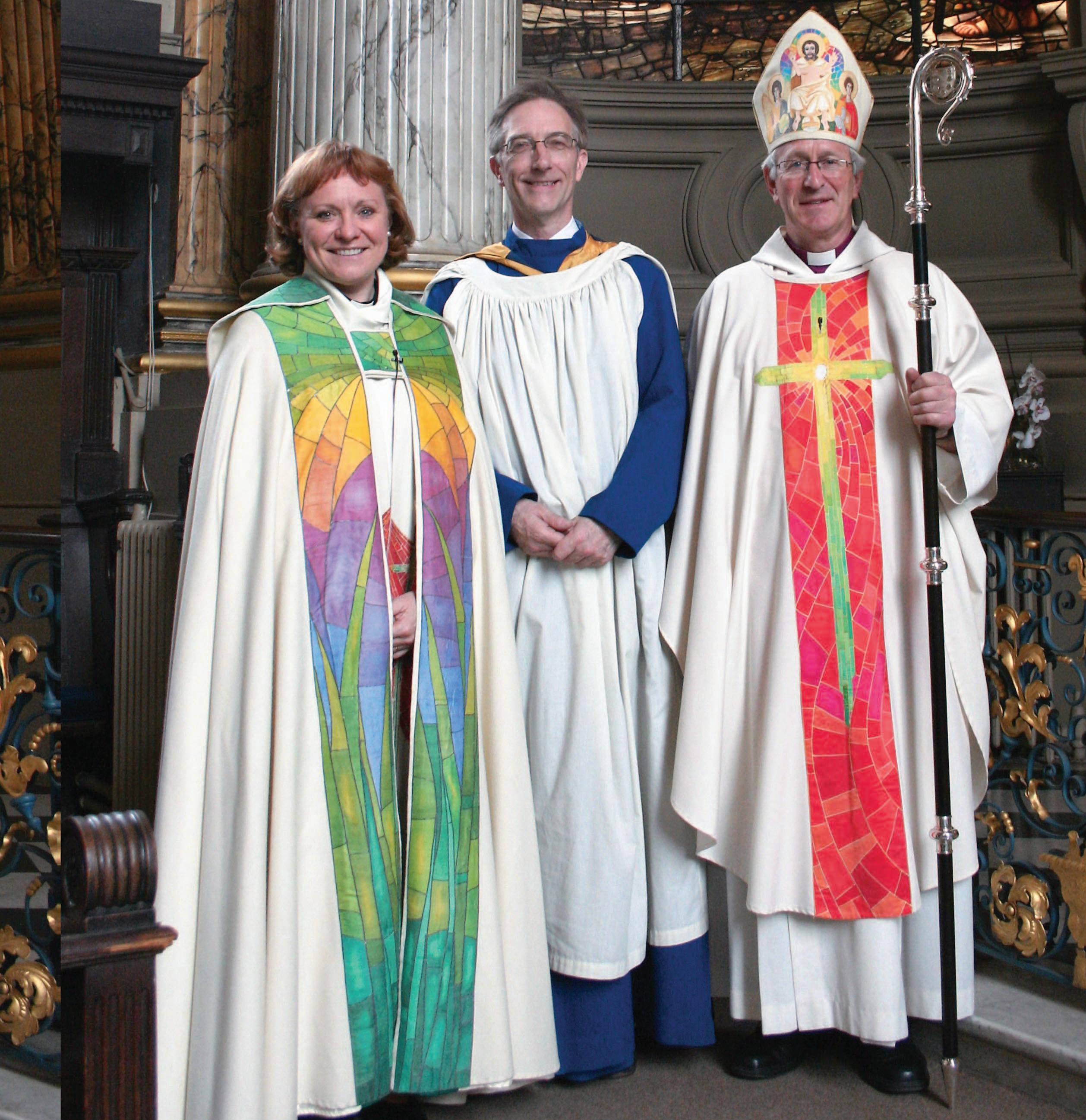
Marcus Huxley, who has been Director of Music at Birmingham Cathedral since 1986, celebrated his 25th anniversary there with a performance of Handel’s Messiah at the cathedral on 5 March this year. It was an appropriate way in which to mark this outstanding milestone in Birmingham’s musical history and we are certain Handel would have approved. ‘Celebration’ is the right word as the Very Revd Catherine Ogle, Dean of Birmingham, said on the night to the packed audience. “Marcus Huxley’s work among us represents an outstanding and unparalleled contribution, not just to the music and to the life of the cathedral in this city, but also to the generation of singers and musicians who have trained and made music under him.”
Before coming to Birmingham, Marcus was Assistant Organist at Ripon Cathedral, a small city with one large cathedral. He found it a big contrast moving to Birmingham, a large city with two small cathedrals. Born in Chelmsford, he read modern languages at Oxford University which enabled him to spend a year in Paris as part of his studies, at the same time having organ lessons with Marie-Claire Alain. He was the youngest finalist in the 1971 St Albans International Organ competition and on his return to Oxford he was elected Organ Scholar of Worcester College where he directed the Chapel Choir and obtained a degree in Music. In 1974 he went to Ripon where he also taught in the Choir School, founded the York Early Music Choir and was conductor of both the Ilkley and Otley Choral Societies.
Birmingham Cathedral is a beautiful oasis in a superbly revamped Church Yard (still known as such, reflecting the days when it was a parish church) at the heart of a busy and thriving city. It has the feel of a light and airy City of London church and enjoys what Marcus describes as a good allpurpose acoustic.
I asked him what he feels are the main differences in the cathedral now, opposed to when he first came. “The clergy have obviously changed over the years, as has their attitude, though for the most part they have been positive all through my time here.” He mentioned two exceptional Deans in particular, Peter Berry who was Dean for much of Marcus’s time and Gordon Mursell, whom he classed as a man of great understanding, musically attuned and good for morale. Gordon went on to be Bishop of Stafford.
“With the two main universities, Birmingham and Aston, we now have more students available to lend support to our choirs and special musical events, and we have also established

an excellent relationship with the Birmingham Conservatoire. Birmingham has never had the benefit of drawing on boys from a choir school, so keeping up to 20 choristers in the choir has always been a challenge – inevitably they are drawn from a wide geographical spread remembering the size of the city. Currently we have 16 boys, which is acceptable bearing in mind that this is a small building, but visiting schools and recruiting boys is a never-ending task and over my time here I will have been to up to 50 different schools.
“The Girls’ Choir is made up of 16 girls of secondary school age and up to three choral scholars who are normally university or Conservatoire students. There is also a junior section for girls aged 8 to 11 who attend just once or twice a week. The girls also come from several different schools but tend to be older than the boys (10 to 18) and they are led by the three choral scholars. These three join their male opposite numbers to form Schola Philippi, a small choir able to tackle the more enterprising repertoire in services, recitals and broadcasts. The boy choristers sing different Evensong services from the girls during the week and one service each on a Sunday.
“The real problem today is commitment, not only of the children but also the parents, who often have to transport their charges considerable distances across the city and surrounding areas to the cathedral. When I started here, almost every boy was at an independent school and such schools have always been strongly represented. There have been times when we have had more state school children but it seems to be reverting now to the independent sector. Given the cosmopolitan nature of the city, it has been both natural
and welcome that our boys and girls come from very varied ethnic origins and having a wide variety of both social and ethnic backgrounds among the choristers has been one of the special joys of the job.”
“Being a small cathedral we can get by with a complement of ten for the back row, but currently we only have seven, comprised of three altos, two tenors and two basses, three being lay clerks, three choral scholars and our organ scholar. Being a cathedral lay clerk can be a thankless task, easily ignored and just expected to turn up, though luckily I have never had a problem with them and most have a first-class attitude which influences the others for good.”

The repertoire, both for services and recitals, inevitably reflects to some extent Marcus’s personal taste. He has a great love of early renaissance music, particularly that of Josquin des Prez, Taverner, and music from The Eton Choirbook, not to mention Byrd and Tallis. At the other end of the scale the cathedral choir has in recent years regularly commissioned new works from such composers as Andrew Downes, Andrew Carter (Come, Holy Ghost) and John Sanders (The Firmament), while Alan Ridout dedicated his sixth set of Sacred Songs to the cathedral’s choristers. They have also recently had an anthem by Bryan Kelly and a carol by Richard Lloyd dedicated to them.
In 2009, Marcus took a sabbatical, in part to do some composing. “I had enough ideas to fill five years,” he said, “but one thing that came out of it was a comprehensive survey of my choral and organ works.” These have recently been issued as a new CD, A Song of the Light, which has been reviewed as very approachable, skilfully-crafted and much of it within the






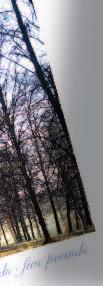




capabilities of parish church choirs. He also visited New York, where he met John Scott at St Thomas Church and had the privilege of observing him working at close quarters. “John was really helpful. I can’t thank him enough, and he mapped out a wonderful programme for me.” Marcus also went to Malaysia to do some examining for the Associated Board of the Royal Schools of Music.
Marcus is married to Sally, a Yorkshire lass brought up in Leeds, whom he met when he was conductor of both the Ilkley and Otley Choral Societies. She teaches Food Technology at King Edward’s High School for Girls in Birmingham and they have two sons. Marcus and Sally particularly enjoy taking part in the Cathedral Organists’ Association meetings and visits and especially enjoyed last year’s trip to Paris, a city they both love.
Marcus describes his job as a whole way of life which family life has to fit around. “Birmingham, being an industrial city, demands we have to work round the edges of each working day. Money used not to be a problem for the music of the cathedral but in recent years it has been ‘flat-lined’, not rising in line with inflation even, and that makes it hard.”
Being a Director of Music in a city cathedral like Birmingham is a relentless grind as well as bringing joy and well-being to those who help create the music which so enhances worship. Marcus does all this on a daily basis and has achieved so much during his quarter of a century, all with great modesty, old-fashioned courtesy and yet maintaining a positive attitude and, of course, the highest standards. Respected by all alike, he has enhanced the musical life of a very musical city, with a delicate touch.
In September this year the Viscount Regent Classic Three Manual organ was put through its paces by Professor Ian Tracey, Organist Titulaire of Liverpool Anglican Cathedral. Darren Hogg was there:-
“I have always considered myself to be a ‘purist’ and would once never have accepted that an electronic digital instrument could ever replace the pipe organ. I still love to hear and play pipe organs, particularly those in good condition, but I continue to be impressed and even astounded by the digital instruments that are being developed. The Viscount Physis sound is incredibly clear, realistic, musical and a pleasure to listen to, both to the trained and the untrained ear. Even though I was sitting at the back of a church with a fabulous acoustic, I have to admit that nothing gave away the fact that this was a digital and not a pipe organ. I say this with profound apologies to my purist friends and colleagues.
“Professor Tracey performed a wide variety of organ music (from Baroque to twentieth century, English, German, French and American) that covered every aspect of this instrument’s tonal capability. The bright, sharp mixtures shone along with their more chorus-based colleagues, the strings (particularly French in style, I thought) blended beautifully and were convincingly ‘unelectronic’. The reeds were majestic, articulate and snappy, and the flutes and diapasons had both a lyricism and sonority that were just truly musical and pleasing to listen to. There were also some delicious mutation solos, most noticeably in the Tune in E by former Birmingham City organist, Sir George Thalben-Ball.
“Every piece performed showed the organ at its very best but for me it was Max Reger’s Benedictus that communicated this instrument’s true virtuosity and realism. Anyone considering purchasing a digital organ, whether for home practice, church, crematorium or cathedral use, should first listen to this state-of-the-art sound.”
Darren Hogg (www.darrenhogg.co.uk)
Organist, Halesowen and Frankley Parish Churches, West Midlands.
Margaret Rizza’s setting has been approved by the Music Panel of the Catholic Bishops’ Conference in England and Wales.

In the Foreword, Margaret Rizza says the setting has been inspired by St Benedict, who writes with tremendous simplicity and openness. She continues, “It is important that it can be sung easily by congregations as well as by choirs who can lift up their voices in praise, worship, thanksgiving, reconciliation, joy and love – a community held together by praying to music.”
The authorised setting is written with keyboard accompaniment, and also includes optional SATB, instrumental and cantor parts. The music for the congregation may be photocopied for local church use. “This will be a significant contribution to Roman Catholic worship when the new translation is introduced later this year,” says Tim Ruffer, the RSCM’s Head of Publishing. “Margaret has a style with broad appeal; it will be easily picked up by congregations, and I am confident that choral singers will appreciate choral writing by a true expert in the field.” See review on p58.
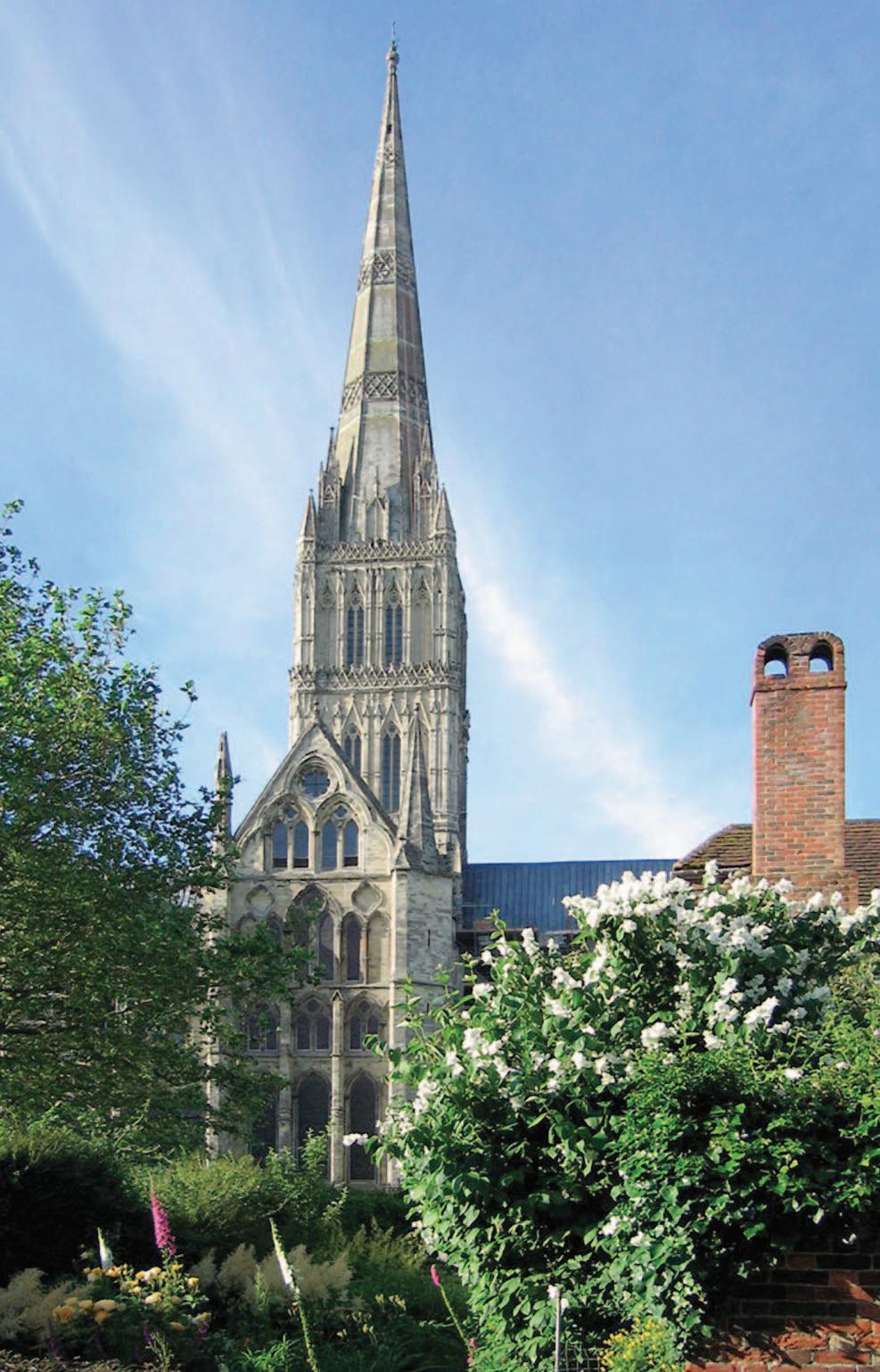
A donation of £20,000 was made to Salisbury Cathedral just before Evensong on Sunday, 25 September 2011. Two cheques, each for £10,000, were presented to the Dean, the Very Reverend June Osborne, by Roger Bishton, Secretary of the Friends of Cathedral Music (FCM). The cathedral’s Director of Music David Halls, said, “The generous support of the Friends of Cathedral Music allows me to continue to build on and develop the long and distinguished choral tradition here. This tradition relies on a constant stream of musical children being attracted to the choir and also the loyalty and dedication of the lay vicars and organists. We are most grateful for the FCM grant.”
Salisbury Cathedral was built before the city which now surrounds it. It was a replacement for the Norman cathedral at Old Sarum (which was dismantled) and was designed solely as a cathedral, with no monastic facilities, though it does have a couple of beautiful monastic architectural features – cloisters (the largest in England, they say) and a large and outstandingly beautiful chapter house. The foundation stones were laid in April 1220, and the entire building, including the tower and spire, was completed one hundred years later. It had an Italian-style freestanding campanile/bell tower as tall as the main cathedral buildings but this was demolished during extensive renovations in the late 18th century.
The cathedral is home to the best-preserved original Magna Carta (1215) which can be viewed in the chapter house.
Roger Bishton says, “The opportunity to support both boys’ and girls’ choirs and to strengthen the musical talent which already exists at Salisbury Cathedral is something FCM regards as worthy of support and meets our objectives in safeguarding the priceless heritage of cathedral music in Britain. All the subscription income from our members (close on 4,000) is now handed out in grants and in this year alone we are giving £125,000 to eight cathedrals. Since our foundation in 1956 we have been able to pass on a total of over £2million.”
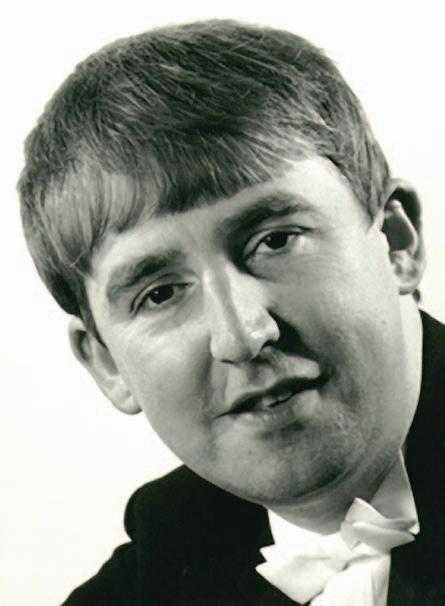
Alastair Sampson
With Eton’s historic chapel, and its famous Choirbook (dating from c1500) guarded securely next door in College Library, one might be tempted to assume that the post of Precentor at Eton College, held these past twenty-six years by Ralph Allwood, also carries an unbroken history stretching back to Tudor times.
In fact, the role of Precentor goes back a mere hundred and fifty years to the time when boys in the school took action off their own bat and founded Eton College Musical Society.
Amongst their leaders was a young man called Charles Hubert Hastings Parry. To begin with, the boys received little if any encouragement from the school’s authorities, but once it became obvious that the Society was going to survive, the authorities came to the view in 1875 that if the boys must include music amongst their activities, then it had better be directed professionally. One of London’s leading performing musicians, with a background in choral and orchestral training, was persuaded to take it on.
The inspired choice was Sir Joseph Barnby (later principal of the Guildhall School of Music). With his outsize charisma he succeeded in reaching out to the school as a whole, energetically promoting concerts for the benefit of the boys and putting at least as much effort into their musical education as he did into the music of College Chapel. Under his successor, Charles Harford Lloyd, Eton’s formal Music Schools were built, and the choir school was reopened in 1909. This latter closed only in 1968, far later than others of a similar type, and the resources thus released were channelled into the funding of music scholarships within the main body of the school. Initially there was a struggle to produce music as before without the services of a professional top line, but under Ralph Allwood’s predecessor, Graham Smallbone, who was an instrumentalist not an organist, the number of taught weekly music lessons tripled, and as early as 1974, now with a body of some seventy scholars and exhibitioners to draw on, Graham was able to develop a fine orchestra as well as produce music in chapel performed at last by the boys themselves who worshipped there, with increasingly less help from members of staff.
On leaving Eton, Graham had clear views about the future: whatever his musical strengths, the next Precentor should concentrate his efforts around where the heart of Eton really lies, in College Chapel.

I believe the choice of Ralph Allwood to succeed Smallbone was influenced by this view. Like his predecessor, Ralph had experience of directing

the music in two public schools, Pangbourne and Uppingham, where he had founded the summer choral courses (these came with him to Eton, and will continue to be run by Ralph). But his obvious authority and enthusiasm in front of a choir is what made him stand out and, by then – as now – the choir facing him in College Chapel consisted very largely of ex-choristers, drawn mainly from the choir schools which serve our great cathedrals and larger Oxbridge colleges. This of course presented him with great potential for all kinds of choral music.

The success he has had with this choir is evident for all to see and hear. By visiting the schools that nurture these boys, conducting their choirs and orchestras, adjudicating their competitions and encouraging them to apply for Eton’s music awards, the quality of College Chapel Choir has continued to rise under his stewardship. Ralph has made more than ten CDs with the choir and has taken it all over the world, including South Africa, America and the Far East, mainly during the Easter holidays since his choral courses have grown by now to occupy virtually the whole of the summer break.
In the early days, it took some time for the boys to adjust to Ralph Allwood’s carefree informality during free time and to his very demanding standards in school time, after the more traditional schoolmastering style of his predecessor. At precisely the moment a rehearsal was scheduled to begin, a mere snap of the fingers indicated that the session was now in progress and that full concentration was required. Singing exercises always preceded the rehearsal itself, and a list of the pieces to be rehearsed was read out, so that all music could be located in advance, to avoid wasting time once serious work began. Woe betide the latecomer, or worse still the boy who forgot to come at all. Those who made a habit of this soon discovered that their services were no longer required. It was surprising how soon after the beginning of each new academic year this message got through. Moreover, all choir members were expected to take singing lessons in order to give more focus to the sound of the choir as a whole.
Similarly, it took some time for the full-time music staff to get the measure of Ralph. Here his method was quite different. Early staff meetings had been rather awkward, as each participant had played his cards too close to his chest. So Ralph announced that we would take a whole day out – a ‘Quiet Day’ – just to examine our methods and aims as staff. He invited the late Derek Bourgeois, an eminent music educationalist known for his compositions and arrangements for school orchestras, to chair the day, and had booked a room in the west wing of the ancestral home of the Astor family – Cliveden, now a celebrated hotel overlooking the Thames Valley above Marlow, with spectacular gardens, a famous dining room and an equally celebrated chef. The morning session was indeed helpful, but once Cliveden’s mellow gong had sounded, summoning us into luncheon, there was very little hope of any more serious work being done that day. We had a wonderful time, barely noticing the afternoon session, and attempted to sober up by sauntering around the grounds before afternoon tea. Whatever else we had learned that day, we all came away with the clear impression that
our new Director of Music certainly had style.
A few years later, in 1993, we discovered that he also had guts. By now firmly in the saddle, Ralph decided to challenge both boys and staff by mounting a staged first performance of a new opera by one of Eton’s earliest music scholars, Francis Grier. A prodigy himself, Francis has seldom been known for writing music easy to perform, since he himself has never seemed to find anything, however daunting, difficult. The work, entitled St Francis, required a large cast of boys and girls and an equally large orchestra. College Chapel was given over to this project for most of the Lent Half, at the end of which five staged performances were planned, all but one being conducted by Ralph. Meanwhile, Ralph dug himself further in by agreeing to two more performances as part of the Newbury Spring Festival, to be staged in the Abbey at Dorchester on Thames, with tickets on sale to the general public.
I do not recall ever setting eyes on the full score, having worked from a difficult-to-read photocopy of an earlier manuscript piano reduction containing the composer’s first thoughts obviously written in some considerable haste. I was not alone in having this problem, and realising this, Ralph sat the composer down at the piano, the tape recorder on, and we all listened transfixed as Francis played fluently through all three acts, explaining the plot as he went, in between singing all the parts. Ralph issued everyone with cassette copies of this session, which proved invaluable when what had been written on the paper was impossible to decode!
Unsurprisingly, there were times during that term when I felt that Ralph had really gone a step too far, and I believe that there were times when he thought so too. For my part, this was by a long way the most ambitious production I can ever recall being involved in during nearly forty years on the music staff at Eton, and if, after nearly twenty years, St Francis is still waiting a second production (or revival), it is not hard to see why. Yet, at the end of it all, we felt that our efforts had been amply rewarded, inasmuch as the eventual standard of performance became sufficiently high to allow the opera to speak for itself.
In bricks and mortar, Ralph’s legacy to Eton is, of course, the new Music Schools building connected to the old one by a charming enclosed bridge. The new building was cunningly designed to minimise noise pollution between neighbouring rooms, and its largest space, the Parry Hall, at last provided the Symphony Orchestra with enough room to accommodate all its players.
Ralph never allowed Eton to bog him down. Indeed, Eton benefited time and again from his many and varied connections in the larger world of music outside the school. The choral courses continue to bring that outside world to Eton, as does his adjudicating of an Eisteddfod, training a Welsh Youth Choir or cutting another CD with his own Rodolfus Choir, formed by graduates from the choral courses.
Ralph is unlikely to find himself with time on his hands in the future, for that is not his way. Indeed, he will doubtless relish not having to spend so many of his valuable hours in the administration of a huge music department, working on its curriculum, interviewing new music teachers, sorting out disputes between established ones, calling to heel lazy boys, etc – the list is endless. It will no doubt be a very long time before the concept of ‘retirement’ even crosses his mind.
Alastair Sampson (AHS) was appointed to play the organ in Eton College Chapel by Precentor Malcolmson, just before the closure of the old Choir School. He was thus inherited by Precentors Graham Smallbone and Ralph Allwood, with whom he worked for 20 years. Many of the new Music Scholars and Exhibitioners, taught by AHS, have gone on to win organ scholarships at Oxbridge, amongst them his successor, David Goode, who took over AHS’s post when he retired in 2005.
The answer lies not far from the Scotland’s capital, on a small but perfectly formed island in the Firth of Forth, as I shall explain in a minute. But first, a brief history lesson. The story goes that in 567 St Columba1 visited ‘Innis Choluim’ (or Columba’s Island) now more popularly known as Inchcolm Island. Back then – as now – a seagull flying the five miles from Edinburgh would take less than 15 minutes to reach the island. But to holy men in search of a religious experience, Inchcolm would have been a whole other-worldly world away, separated by tide and time from the madding crowd and the distractions of secular life. And it’s this isolation that helps to explain the island’s popularity (if that’s the right word) as a place of worship by Christian hermits for hundreds of years. When King Alexander I of Scotland was storm-bound there for three days, in gratitude to the hermits’ hospitality he promised to establish a monastery. Although he died before he could fulfil his promise, his younger brother David I did so by founding a priory at Inchcolm for monks of the Augustinian order.
A century later – by which time its canons or ecclesiastical laws were already well established – the priory was elevated to the status of an abbey, but this status was to be short lived. By the fourteenth century, Inchcolm’s peace was disturbed by the wars of Scottish independence. The island was attacked by English ships on numerous occasions during the later middle ages and, perforce, its monks abandoned the abbey from time to time. Eventually, some four hundred years after its inception, the abbey’s existence as a religious institution ended with the onset of Protestant Reformation.
Today Inchcolm Abbey is the best-preserved of all Scotland’s medieval monastic structures: a testimony to the promise of kings and the isolation of tides. This island of Colm consists simply of a couple of hillocks joined by a short strip of strand.

Like all the other Forth Inches, it’s cluttered with rusted and ruined fortifications from the two World Wars. And – also like the other Inches – it’s a haven for noisy seabirds of all shapes and sizes: fulmars, eiders, kittiwakes, herring gulls and lesser black backed. As you disembark from the ‘Maid of the Forth’ ferry your senses are assailed by the wailing of birds, the taste of salt spray and the scent of seaweed. Your eyes are drawn towards the Abbey’s tower, still surviving in all its glory after nine hundred years and as you approach over mown lawns, entering its covered cloisters and climbing up its spiral staircases, your hands instinctively reach out to caress its ancient hallowed stones.
Passing through the dormitory and refectory and climbing up the final ladder to the top of the tower, visitors are rewarded by a magnificent panorama. In the distance stretch the coastlines of Edinburgh and Fife. Here and there, islands and boats punctuate the Firth. Standing as tall as the tower’s viewpoint is the spire that stretches heavenward atop the stone-vaulted octagonal roof of the chapter house. And this was our mission objective. (No – not the spire: the chapter house). So why was this the place of pilgrimage for our small band of songster stalwarts? Just who were we anyway, and why had we sailed forth to sing?
Led by Les Shankland and practising weekly, the Chapter House Singers2 is a choir of some 35 amateurs based at St Mary’s Episcopal Cathedral in Edinburgh. We perform two concerts a year and we sing morning service and evensong about six times a year when the main cathedral choir is on holiday. Once the idea of singing at Inchcolm germinated, it took around two years to bear fruit. Thus it was that on 31 July 2011 a small chapter3 of the Chapter House singers gathered in the chapter house of Scotland’s oldest abbey to sing the
oldest recorded music in Scotland.
Musicologists believe that the Inchcolm Antiphoner (or service book with music) was compiled around 1340 by monks living in the Abbey, and that its plainsong chants would have been sung on the feast day of St Columba (9 June). But this Celtic plainchant may well have originated some six hundred years earlier. What makes this music unique is that the Inchcolm Antiphoner is the earliest surviving Scottish music manuscript. Although its chants dedicated to St Columba may derive from other monastic foundations with Columban associations (such as Oronsay, Priory or Iona), the most likely source of the manuscript’s compilation (if not composition) is considered to be Inchcolm itself. That the Inchcolm Antiphoner escaped destruction in the sixteenth century by being used as book-binding material is a minor miracle, but sadly only a few pages remain today. Much of the music in these surviving pages derives from the standard Gregorian repertoire, adapted to relate to St Columba, although the Magnificat Antiphon and a few other pieces are unique.
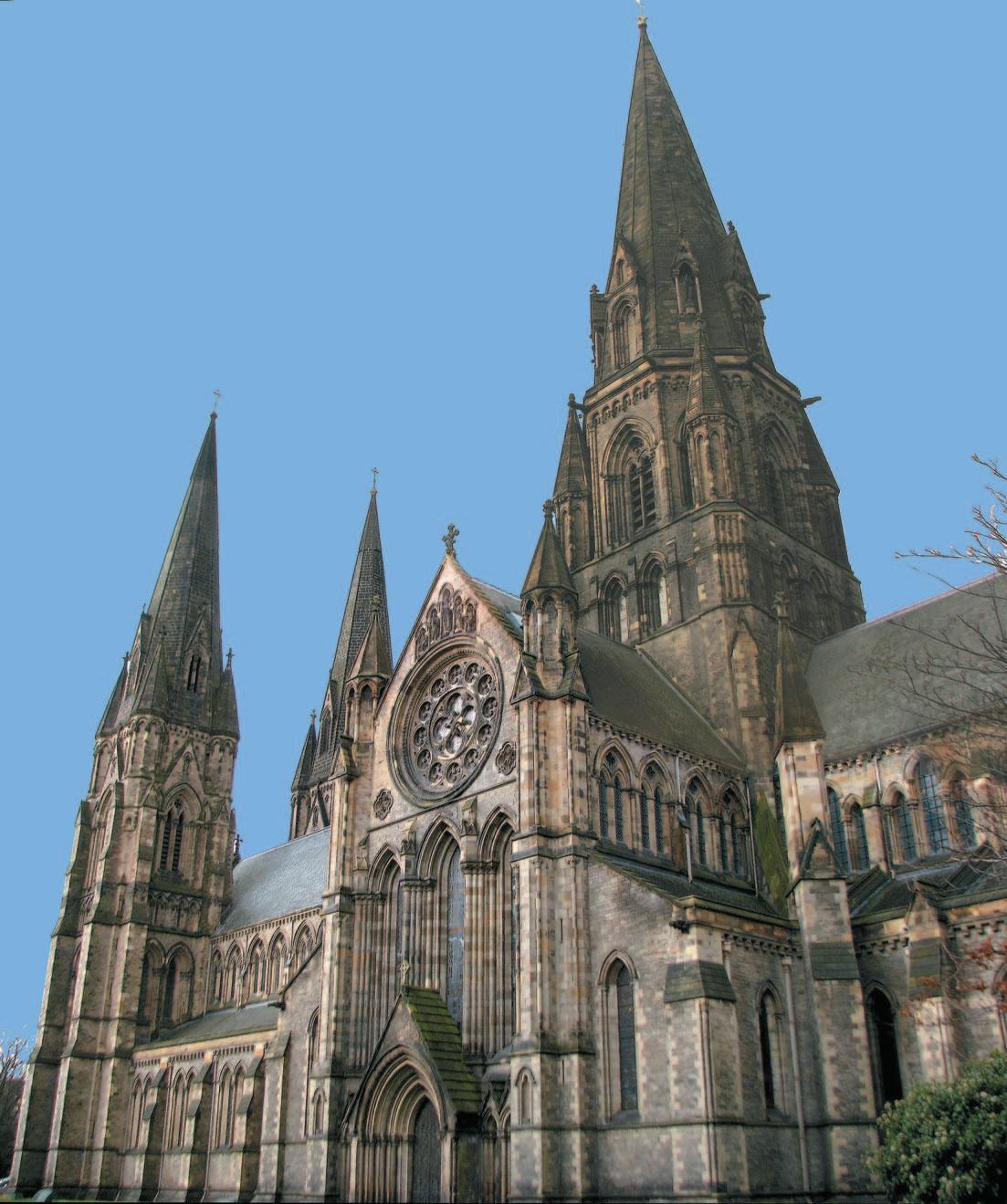
Some experts believe that these fragments represent a lost tradition of Celtic chant, passed down over the centuries from one generation of monks to another. These surviving fragments tell us something of the timeless importance of sacred music. The plainsong chants draw us into a cloistered world of prayer, contemplation and devotion, and it was into this tradition that we singers stepped back on that summer Sunday afternoon.
As at St Mary’s Cathedral, Inchcolm’s chapter house is octagonal in shape, with a stone vaulted roof. Unlike St Mary’s though, the acoustic here is extraordinary – two-second reverbs from the walls and ceiling that flatter voices, blending them polyphonically into a sum much greater than the individual parts, literally echoing back Inchcolm’s centuriesold tradition of sacred singing. Aware of not having rehearsed properly (OK then, not having rehearsed at all) we decided –with some trepidation – to do a ‘dry run’ outside the abbey building, away from the earwigging ears of day trippers. But our reservations quickly evaporated as we embarked upon ‘Os mutorum’ ...Mouth of the dumb, light of the blind, foot of the lame, stretch out a hand to the fallen; strengthen the senseless and restore the mad. O Columba, hope of Scots, by the intervention of your kindness, make us companions of the blessed angels. Alleluia.
Somehow the mewing of the gulls and the spirits of the stones gave our voices inspiration and the end results conspired to take us by surprise. This plainsong malarkey wasn’t too difficult after all – and we sounded good! We doubted ever becoming companions of the blessed angels, but perhaps Columba was being kind and doing his bit to intervene. Pleased with our success, we adjourned to the quieter environment of the Abbey’s chapter house. We shuffled ourselves into a nervous circle, opened the scores of “O Columba, insignis signifer” and started to sing... O Columba, distinguished standard-bearer, cleanse our minds lest the deceiving destroyer injure your servants with danger from the sea, that it may please those around you to sing. To you before others it is fitting that voices of joy be closest. Lend an ear!
Now maybe St Columba lent an ear and maybe he didn’t, but the overall effect of our ensemble I can only describe as being revelatory – a kind of collective epiphany that words alone cannot convey. To say that we were emotionally ambushed by the experience would not be an overstatement. To be transported by the experience of producing something unexpected was a wonderful privilege. Yes, we were only
amateur voices – recreational singers at best – but we gave it our all that day, and Inchcolm more than repaid us. The memory of that day will remain – I dare say – forever.
By way of a postscript I came across a blog written by one Andy Strangeway4, a.k.a. Island Man. He deserves the last word. In 2003, he embarked upon a four-year quest to become the first person to land and sleep on all of Scotland’s 163 islands of 40 hectares and above. He wrote:
‘As soon as I arrived on Inchcolm I was aware of its energy, the very essence of the island. This, I feel, is extremely rare for an island which is so regularly frequented by visitors and is generally something I only experience on those more difficultto-access islands.
‘I am an expert in nothing but my own experience. Yet beyond this great adventure, there is something far greater, something that I cannot see. I can only feel it and I do not know of what I talk. My time on the islands has brought out an awareness deep within me. I have no firm belief in a religion or God, but I still seek. I am aware that all these islands have a presence and the more isolated the island is, the stronger this presence becomes. One day, I hope that I will find my belief and discover God. Until then, the nearest that I can come to this is to be alone on my islands and to feel the awe that surrounds me.
‘Of the 163 islands I have now slept on, Inchcolm is definitely in my top ten. My search continues...’
James Ogilvie’s long association with St Mary’s Cathedral started as a server in the 1970s. Today, although a more enthusiastic bass than an accomplished one, he basks in the reflected glory of his son Charles (head chorister at Hexham Abbey and choral scholar at Gonville & Caius College Cambridge) and daughter Imogen (head chorister at Hexham Abbey Girls’ choir): both are members of the Lady Frances Singers, a Cambridge consort.
Footnotes
1 (c. 521-597)
2 www.chapterhousesingers.com
3 Katie Brooks, Mo Clarke, Lester Knibb, Suzie Lendrum, Iain Loudon, James Ogilvie and Anne Wilson
4 www.island-man.co.uk/biography.html

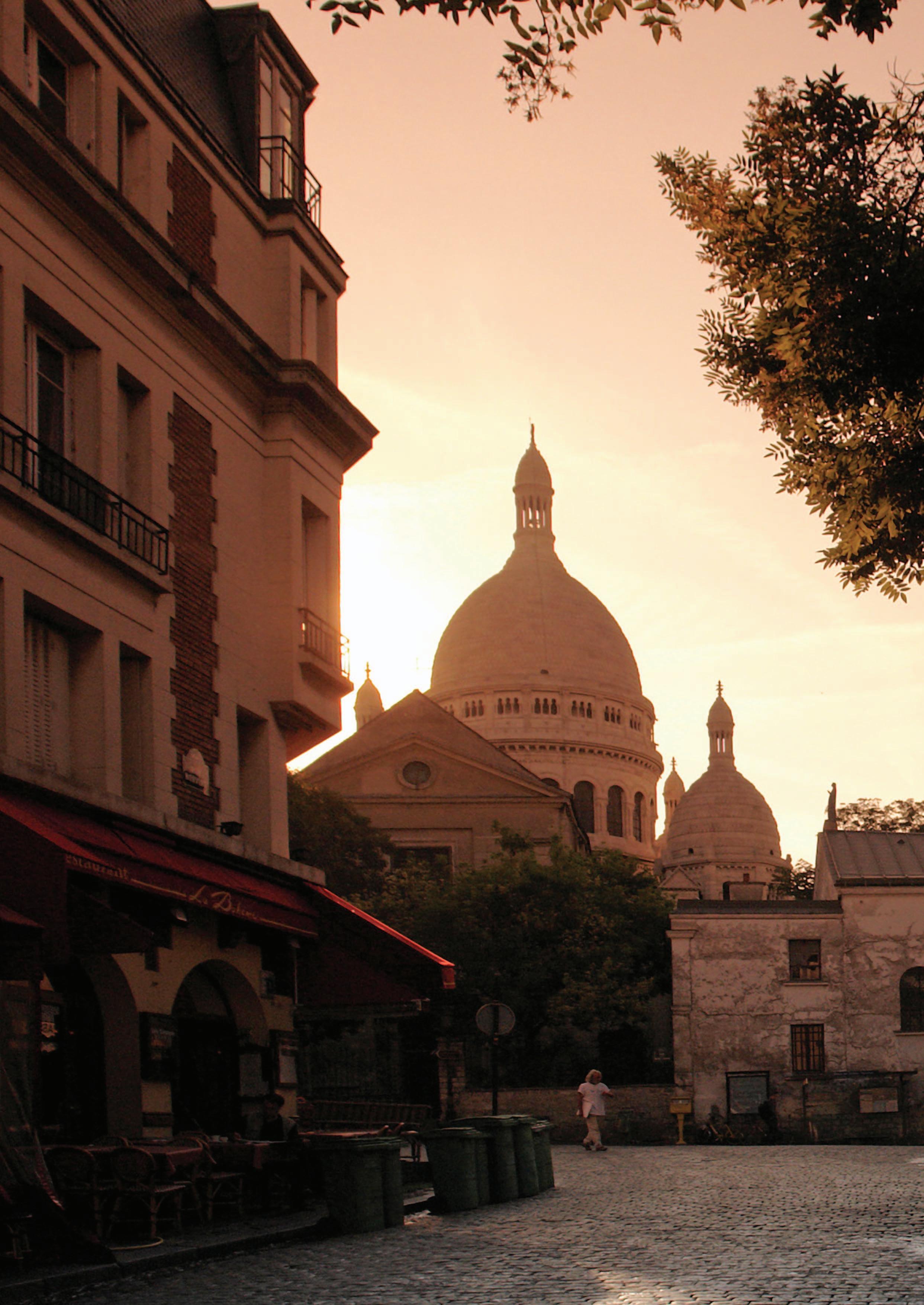
My Monday morning routine normally consists of a long lie-in and coffee, as my working week at Wells Cathedral runs Tuesday to Sunday. On a Monday in mid-March this year, however, I found myself waking up in a hotel room in Montparnasse in Paris. Travelling on Sunday evening had allowed me some time to look at a few sights – scaling the Tour Montparnasse and being herded with the crowds through Notre Dame Cathedral took me to lunchtime, when others had arrived for the Spring conference of the Association of Assistant Cathedral Organists (ACO).
The ACO began life about thirty years ago as a parallel organisation to the Cathedral Organists Association (COA). It meets for conferences twice a year: in the autumn for a day; and for three days in the spring. The conferences tend to focus on matters of professional development such as conducting (choral and orchestral), training young singers and, of course, organ playing.

Every three years or so, the association arranges a conference abroad and the masterclasses concentrate on repertoire appropriate to the instruments of that place. There is no better way to understand music than to play and hear it on the instruments that the composers were playing when they wrote it and at the organ the particular areas are registration, touch and pacing. The last foreign meeting had been in Haarlem in The Netherlands in 2008.
The first session of the conference took us to the church of St Antoine des Quinze-Vingts, which houses a late Cavaillé-Coll instrument originally built for a private residence in 1894 and subsequently moved to and adapted for the church by Merklin in 1909. We were hosted by Eric Lebrun, who has recorded the complete works of Jehan Alain there. Following a talk about Alain and his music, members had the opportunity to play the instrument, with insightful instruction. Alain’s works often
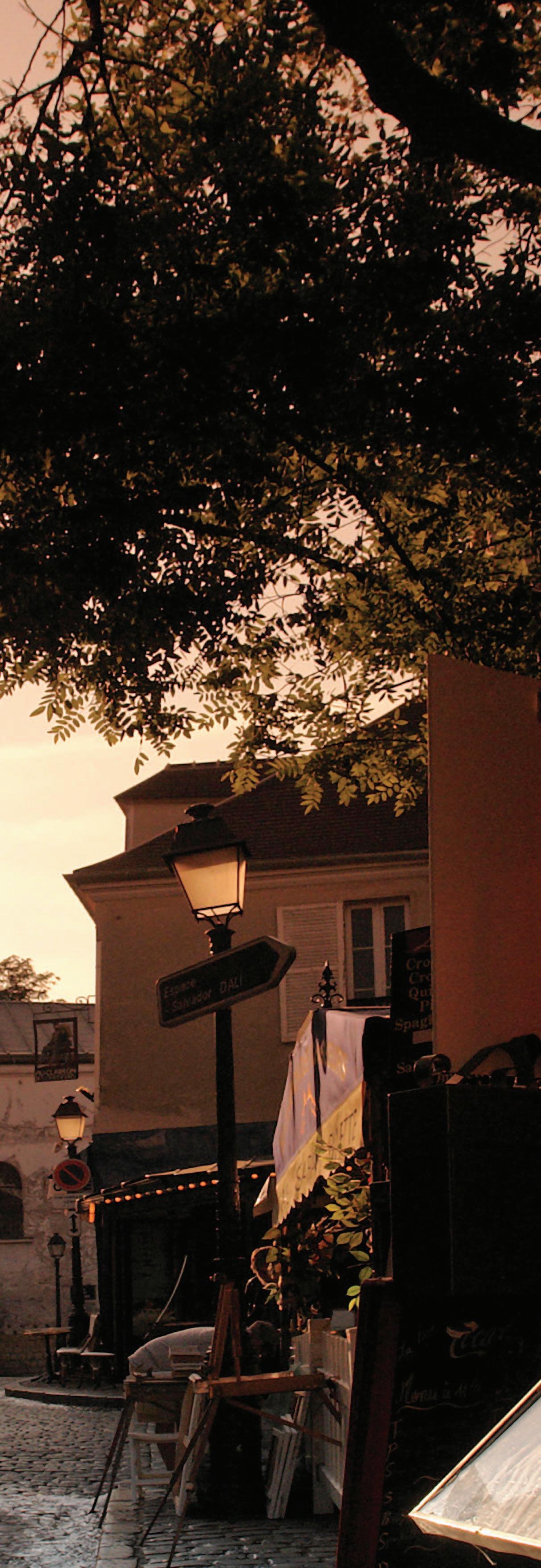
Jonathan Vaughn gives an account of the ACO conference held in Paris in March this year.Paris, Place du Tertre Photo © Hassan Bensliman/Fotolia
have seemingly idiomatic registration indications, largely intended for his family’s large but unfinished house organ, but on the organ at St Antoine, with two enclosed divisions and much romantic colour, these fall into place easily and make perfect sense. M. Lebrun closed the class with a performance of Litanies inspired by his teacher Gaston Litaize.
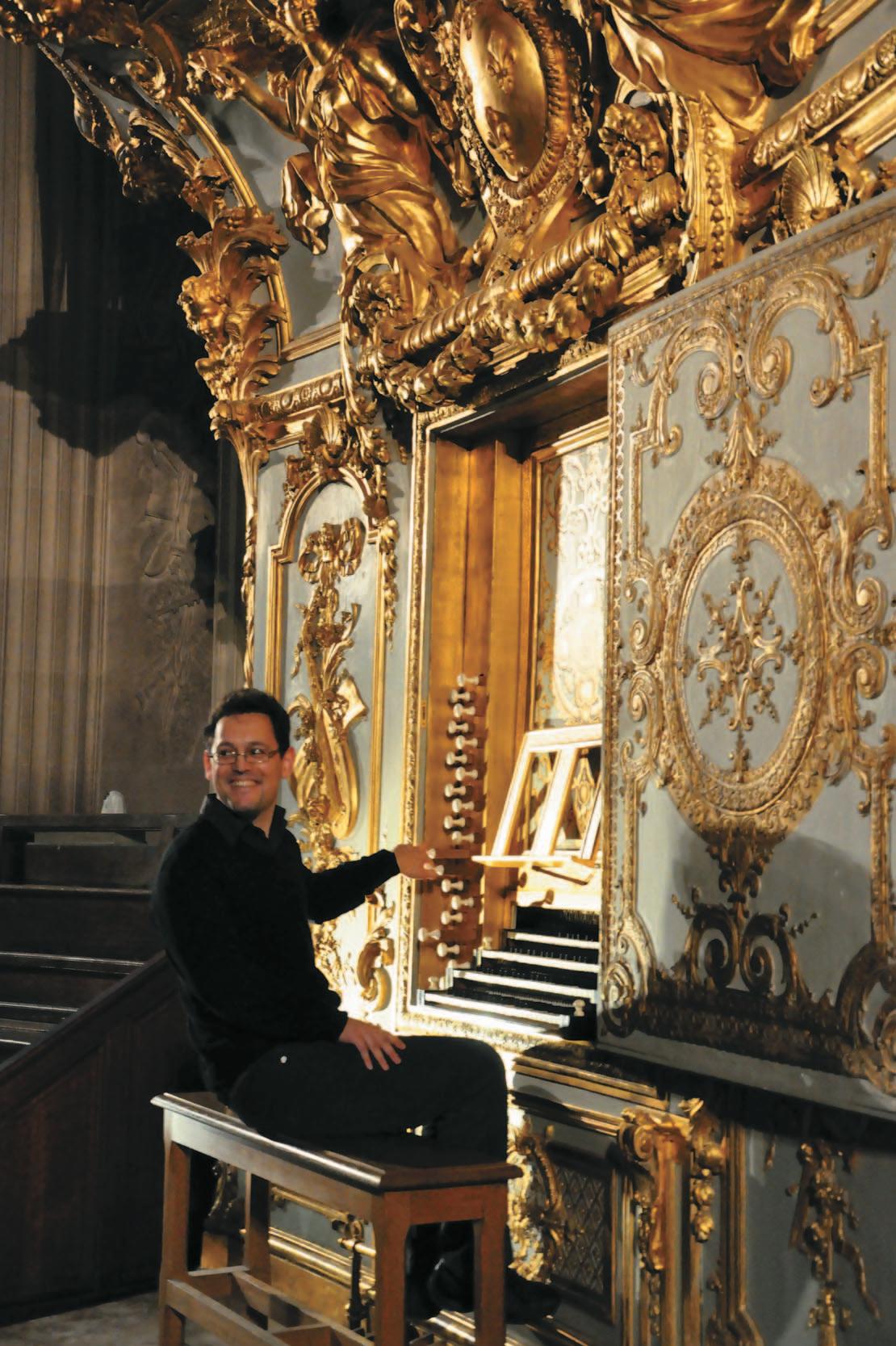
Our evening class took us across the city to St Sulpice, something of a Mecca for organists, with its famous Clicquot/Cavaillé-Coll instrument and history of world-class organists, notably Charles-Marie Widor and Marcel Dupré, who between them occupied the organ loft for over 100 years. Members played music by these composers, as well as Franck, with inspiring instruction from the current titulaire, Daniel Roth, which included the advice that those of us who play electric action organs should try to do lots of practice on the piano to retain good finger strength. Surprisingly, M. Roth describes the instrument as eclectic rather than Romantic –Cavaillé-Coll wanted to retain as much of the Clicquot pipework as possible so its plethora of mutations enables classical repertoire to be played authentically and its clear choruses and solo registers are excellent for Bach, amongst others. Other interesting features of the organ include an unusual stop control system, a ratchet swell pedal and a 16’ Principal Harmonique on the Grand-Orgue, in the façade and made by drilling holes in Clicquot’s 32’ Montre. The flat pedalboard, described by M. Roth as lovely, challenged some delegates to start with. The evening finished with a demonstration of the whole instrument by M. Roth while we had the opportunity to wander around the church. Despite the session carrying on well after the planned time, there was a sense that it could have continued long after the local restaurants would have closed.
Tuesday morning’s session was more of a pilgrimage as we visited the apartment on Place de Panthéon once occupied by Maurice and Marie-Madeleine Duruflé, and now lived in by
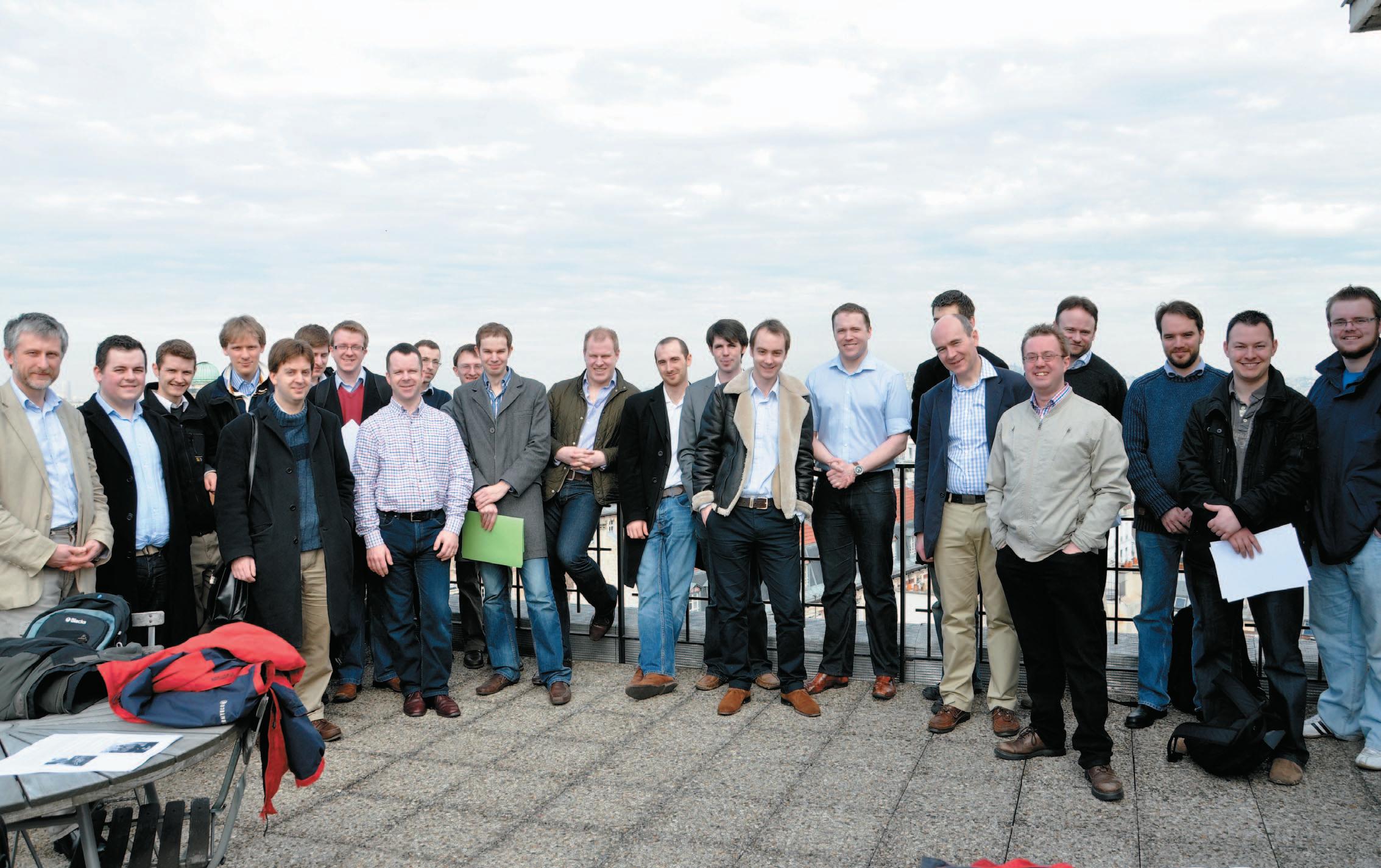
Frédéric Blanc, who generously welcomed us to his home. The apartment, with its substantial terrace, has spectacular views of Paris, and a three-manual organ. The instrument is also eclectic in design, and has electric action, as Duruflé felt this to be more practical. I was very impressed by the use of the small available space, particularly given the three swell boxes. M. Blanc demonstrated the instrument’s extraordinary versatility fully. We forgave the note on the trumpet which seemed to have a life of its own, and his description of a famous Parisian organ as a ‘giant harmonium’.
After lunch we headed out to Houdan to play the unaltered eighteenth century Clicquot instrument in its beautiful if somewhat dilapidated church. After being informed that only five people were allowed in the loft at once, some brave delegates gingerly climbed the stairs to have a go. I was not alone in having never played a French Classical organ before, despite having first learnt some of that repertoire in my teens and knowing in theory its registration and notational performance practices. It is probably true that over any other, a good understanding of the French Classical school is only really possible with first-hand experience of authentic instruments as the effect of the registrations is far removed from the effect on most British instruments. In particular this is true of its cornets and mutations, which are far heavier and fuller than might be expected.
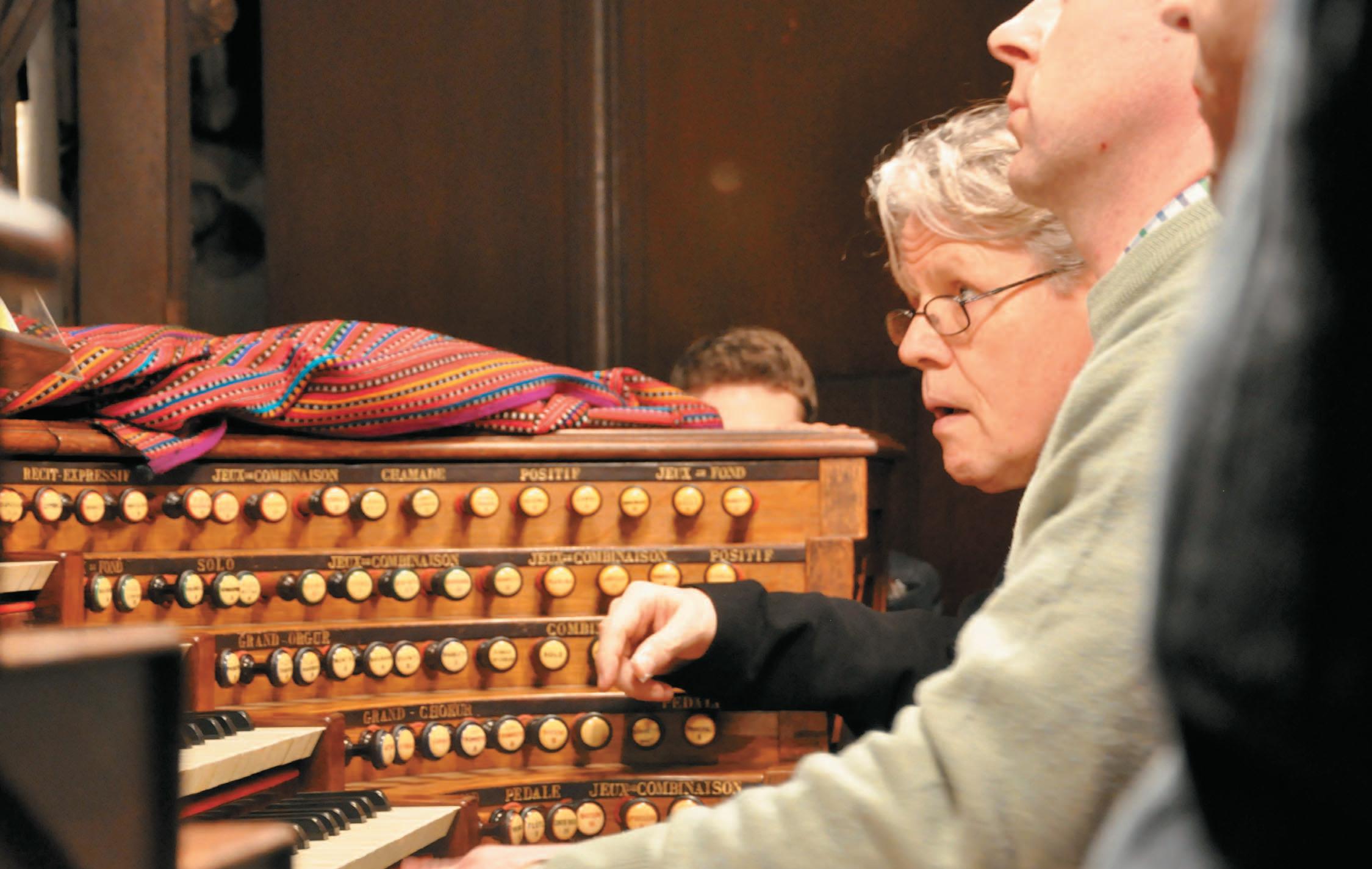
From Houdan we took a brief train ride to Versailles to play two instruments. The first was in the Cathedral of St Louis which houses an instrument originally built by Clicquot in 1761 and restored and rebuilt several times in the nineteenth century including by Cavaillé-Coll in 1863. The instrument is therefore most appropriate for playing early romantic repertoire and members set about playing music by Franck, Boëly and contemporaries. Its 48 stops are unevenly distributed, with small Récit and Pedal divisions of eight stops each but a Grand-Orgue of seventeen. Displaying a liberal approach to health and safety,
we were invited to view the interior of the instrument. Despite being covered in dust and enduring temporary damage to ear drums, we emerged unscathed.
The second instrument we visited in Versailles was in the Royal Chapel at the Palace. The conference arrived before its host, Jean-Baptiste Robin, which gave us the privileged chance to look around and photograph a magnificent space which tourists are normally only allowed to glance at through the door. Most magnificent of all is the organ covered in gold leaf at the east end of the gallery above the altar. This unusual layout was designed so that the instrument and choir stalls would face the King in his gallery at the west end of the chapel. The original Clicquot instrument of 1710 did not survive the French Revolution; the four-manual instrument is an excellent modern replica by Boisseau et Cattiaux from 1995 and is similar but larger than the organ at Houdan. M. Robin closed the session by improvising an excellent suite in French Classical style, which demonstrated all the colours of the instrument. The masterclass was followed by the muchneeded conference dinner.
The following morning, accompanied by the traditional heavy heads, we had a class in improvisation at the church of St Jean-Baptiste de la Salle from the extremely elegant SophieVéronique Cauchefer-Choplin, who is Daniel Roth’s co-titulaire at St Sulpice. In the organ classes at the Paris Conservatoire, the routine used to be – and may well still be – that two days a week were spent studying improvisation and one day a week interpretation. After expressing surprise at the lack of any women, Mme Cauchefer-Choplin introduced us to three principal types of improvisation in the French tradition: chorale based, modal, and twelve tone. The principles are simple, but take years of study to perfect. In my day-to-day work I improvise a great deal and was able to implement some of these principles straight away.
In this article I have given a brief taster of the activities
which the ACO delegates took part in at its most recent conference, and all that we got out of it. I don’t, however, see these activities as the main advantage of our organisation. As assistant cathedral organists, we spend most of our time working alone or closely with our organists and organ scholars; ACO conferences provide the opportunity to spend some time with those in the same boat as ourselves. For example, at the conference dinner in Versailles I enjoyed both exchanging witty banter and discussing future career direction with friends in similar positions to myself. This is where the association’s real strengths lie.
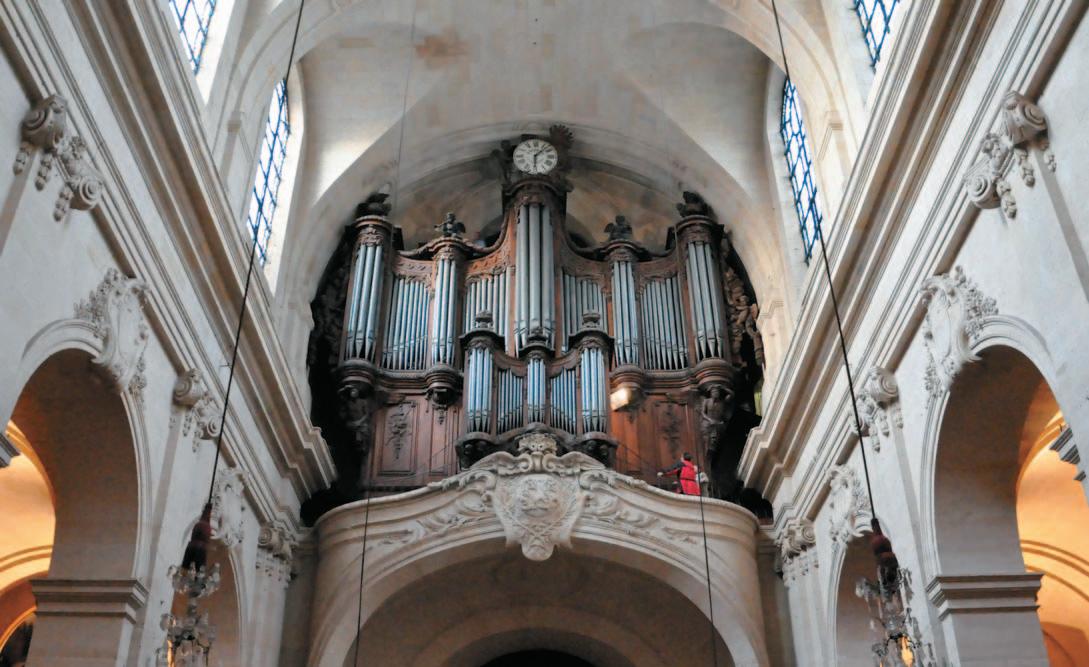

I should like to take this opportunity to thank, in particular, Simon Bell, Daniel Cook, Marcus Wibberley and Keith Wright for all their hard work in arranging the Paris conference, but also more generally for their work in the Association over the years.
Jonathan Vaughn is Assistant Organist at Wells Cathedral. He comes from a musical family and both his parents are organists. He was Organ Scholar at St John’s College Cambridge from 2000-2004 and studied the organ with Simon Williams and Dame Gillian Weir. Prior to moving to Wells he was Assistant Director of Music at St Edmundsbury Cathedral.
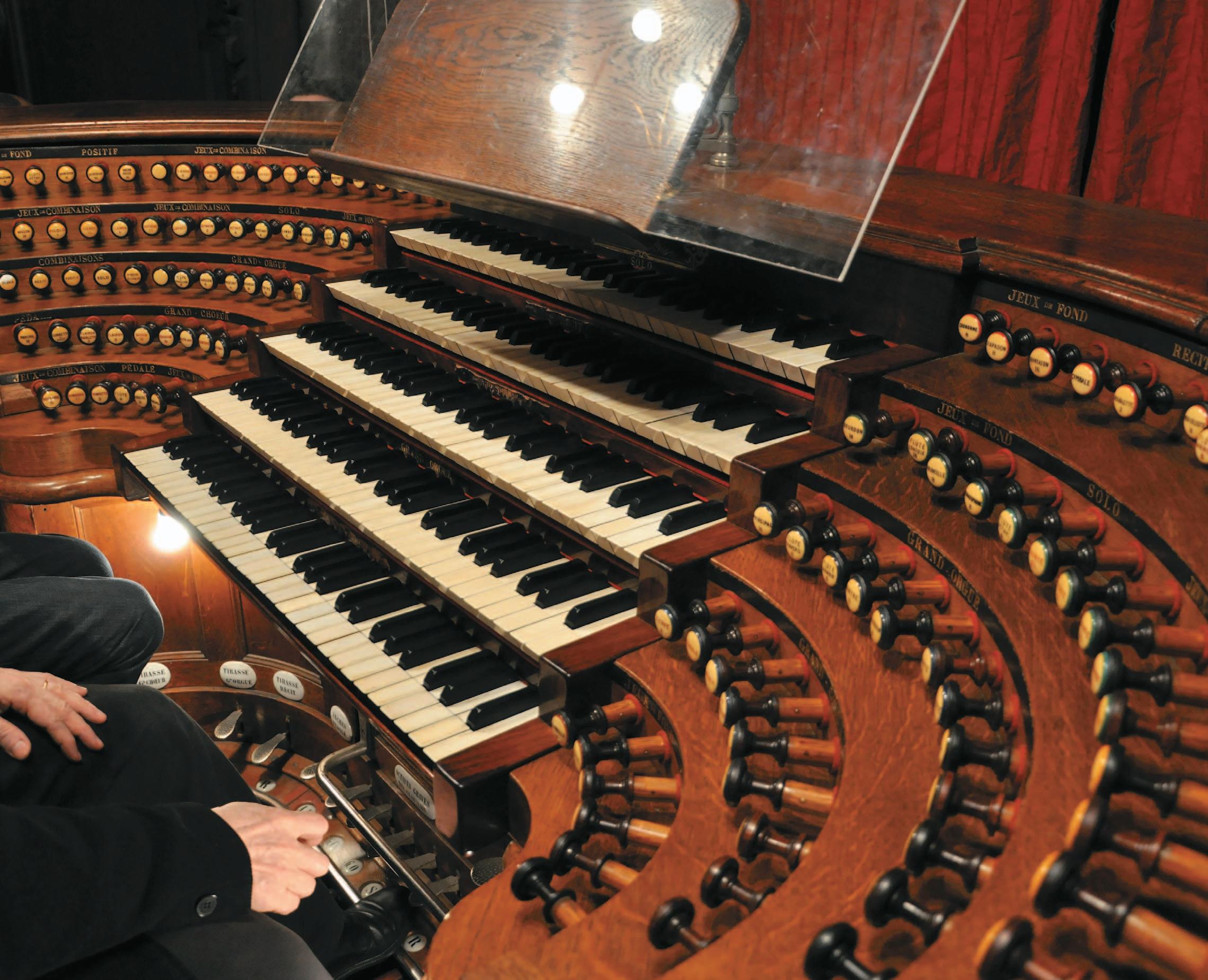

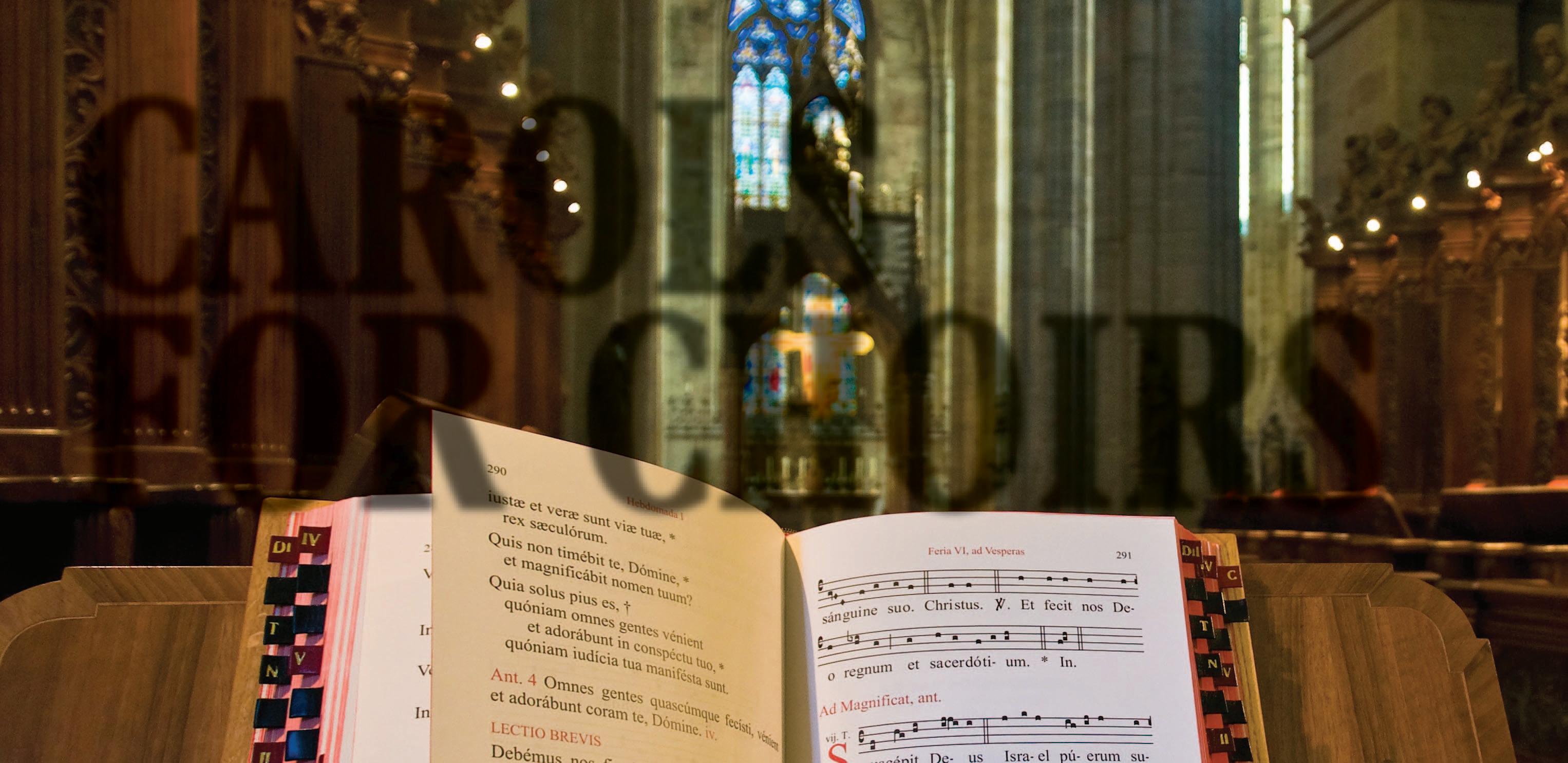

The books in the Carols for Choirs series (all published by Oxford University Press) have for fifty years provided choirs around the world with a unique resource for Christmas concerts and services. The Carols for Choirs brand has become ubiquitous to choral groups around the world, whether they are singing in church, round the Christmas tree, in the community centre, town hall, or door to door. But how did these books come about?
In 1928 Oxford University Press published its very first collection of carols, The Oxford Book of Carols. Edited by Ralph Vaughan Williams, Percy Dearmer and Martin Shaw, this was a landmark publication in that it gathered together for the first time the music and words of many traditional British Christmas and Easter carols which, having always been passed on orally, were by the 1920s in real danger of disappearing for all time. The Oxford Book of Carols was hugely popular, and remains in print to this day.
Much later, in the 1950s, OUP was beginning to consider a revision to OBC, in particular to update it with the inclusion of the by-now enormously popular Christmas hymns (for example O Come, all ye Faithful, Hark the Herald etc), which of course were included in almost every hymn book published (including OUP’s own English Hymnal and Songs of Praise). In 1960 Christopher Morris, the music editor for Oxford University Press (he later became Head of Music), decided that the Oxford Book of Carols was outdated and that a new, modern, practical, and inexpensive carol book was required. Morris approached David Willcocks (then Director of Music at King’s College Cambridge) who felt that what was needed was a book which contained everything necessary for annual carol concerts by choral societies, as well as Christmas services for church and other choirs.
Preparation began, with Willcocks working alongside Reginald Jacques (conductor of the Bach Choir of London) as joint editors. The selection of what became the now familiar contents list of the first Carols for Choirs was essentially complete by the summer of 1960. Two crucial changes were made as work progressed: the original working title, Carols for Concerts, was altered to Carols for Choirs; and an Order of Service was included for the benefit of church choirs which modelled their services on the Festival of Nine Lessons and Carols at King’s – by then enormously popular through the BBC’s annual live radio relays. The content embraced the standard Christmas hymns, several with powerful descants and last-verse arrangements by Willcocks, alongside four newlycommissioned works including William Walton’s contribution, What Cheer? The editors decided to orchestrate several of the items, and the orchestral parts were made available to hire: this alone contributed significantly to the eventual success of Carols for Choirs
Carols for Choirs was published on 24 August 1961. Thirty thousand copies were printed in the first run, and these had sold through completely by November. The paperback edition, with its distinctive green cover carrying a stylized singing angel, was to become universally known amongst choirs as ‘the green book’, and since that August publication day Carols for Choirs has sold 426,000 copies.
‘The green book’ was duly followed by what became Carols for Choirs 2, ‘the orange book’, in 1970. Reginald Jacques died in 1969, and Willcocks suggested his young Cambridge colleague, the composer and conductor John Rutter, to join him as editor on the new volume. Like CFC1, the new book was embraced eagerly by the public. Two original carols by Rutter were included, as well as many arrangements by him: together,
these have since become Christmas classics in their own right.
Carols for Choirs 3 (blue), again under Willcocks and Rutter, was first discussed in 1975, and published in 1978, billed this time as simply ‘fifty carols’ (of which many were suitable for unaccompanied singing). Included for the first time in a Carols for Choirs book was Gustav Holst’s setting of Christina Rossetti’s poem In the bleak mid-winter (first published by OUP as a hymn in the English Hymnal in 1906). Carols for Choirs 3 ended with a list of suggested Christmas poetry readings.
The first three books had been for mixed voices, and David Willcocks and John Rutter began working on a slightly different collection as the next volume in the series. This became Carols for Choirs 4 (1980), a collection of fifty carols for sopranos and altos. Much of the new book’s content was drawn from the three earlier volumes, including adaptations and inclusions of Willcocks’s by-now famous descants and lastverse versions of the well-known Christmas hymns. The book filled a substantial gap in the material available for upper voices at the time, and since publication CFC4 has sold close on 100,000 copies.
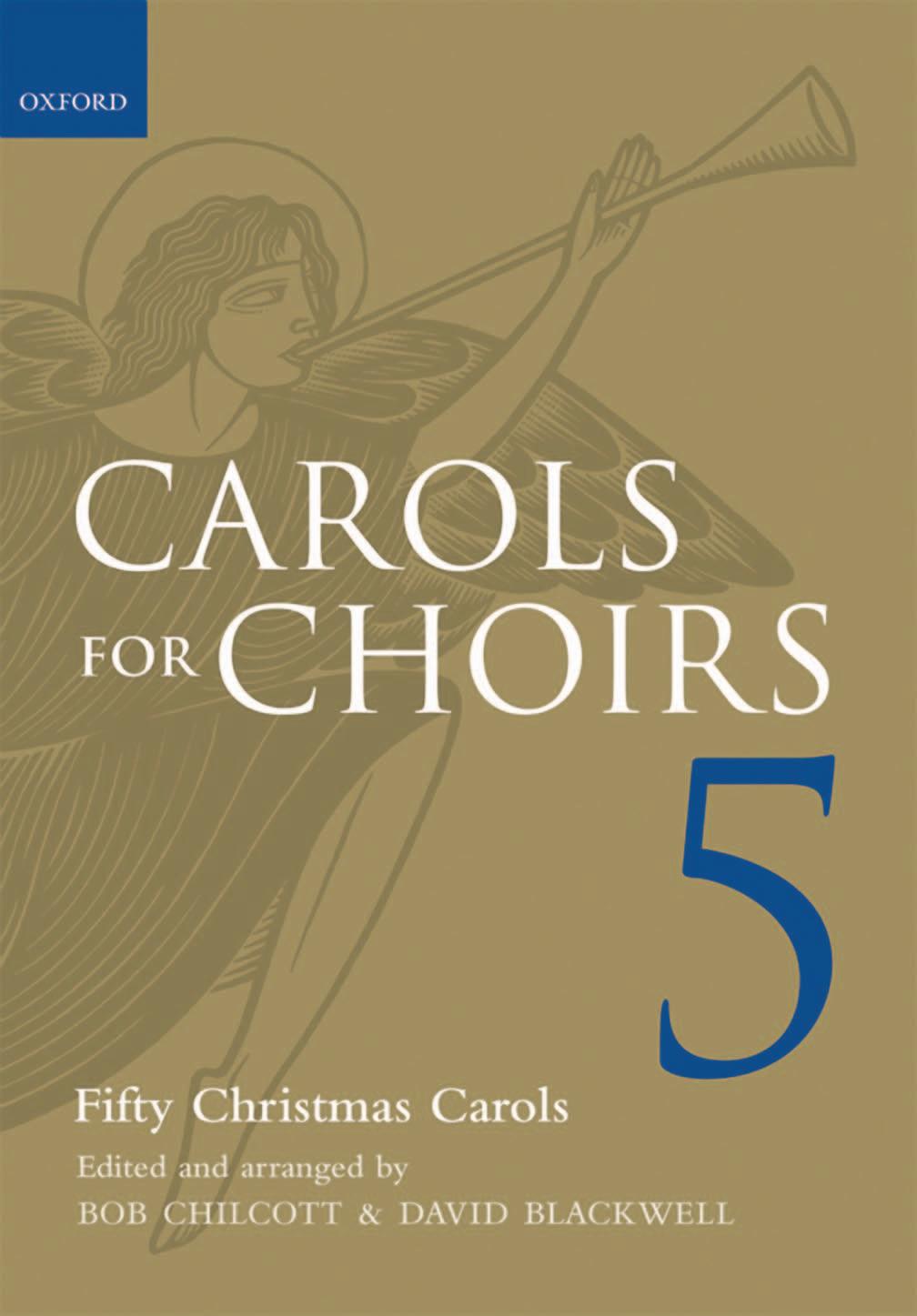
By 1985, with four Carols for Choirs books available, and with the ‘for Choirs’ brand itself successfully extended to other genres (Anthems for Choirs 1 (1973), Hymns for Choirs (1976) Folksongs for Choirs I and II (1983), and others) it might have seemed that the carol series had come to an end. But, in the words of a new generic preface written for the carol books in 1995, ‘a final, larger volume beckoned’. What became 100 Carols for Choirs was again edited by Willcocks and Rutter, put together with remarkable speed, and published in time for Christmas in 1987.
This new book was expansive in the sense that not only was Christmas well covered, but items specifically for use at Advent, Epiphany, and Easter were there now too. It was an absolutely comprehensive resource, and Willcocks and Rutter celebrated by having their photograph taken together on publication day, on the roof of the University Church, Cambridge.
And now, fifty years on from the publication of the original
green book, comes a proudly celebratory Carols for Choirs 5 Fittingly the cover colour is gold, and the angel (who has loyally sung, then trumpeted his way through all the books in various costumes and positions), is still there. Bob Chilcott is again editor, now jointly with David Blackwell (Blackwell is himself Head of Music Publishing at OUP). Carols for Choirs 5 returns to the aesthetics and shape of the earlier volumes, continuing the tradition of its predecessors by providing a complete resource for choirs from Advent through to Epiphany with an appealing international sweep.
The decision was made early on that CFC5 should be a brand-new collection for the twenty-first century, but that it should contain a similar range of carols as the original green book: congregational carols, new arrangements of well-loved tunes or texts, and newly-composed works – maintaining Sir David Willcocks’s original premise. The two editors therefore approached a number of composers for submissions, the result being a contents list of 40 brand-new carols by living composers and ten from the recent OUP backlist.
Carols for Choirs 5 contains a number of familiar names to OUP, including Sir David Willcocks, John Rutter and Bob Chilcott, along with some newer names (Matthew Owens, Paul Leddington Wright, Will Todd) and renowned composers from abroad (Jussi Chydenius, Jaakko Mäntyjärvi and Mack Wilberg). The result is a strong selection of new carols for today’s choirs, which will hopefully become as much part of Christmas as ‘the green book’ has over the last fifty years.
In looking back over these years, it can be seen that the reputation of this immensely popular Carols for Choirs series and the strength of its brand has been built on the many useful and practical features of the books, the imaginative and comprehensive content, the orchestrations, and a willingness to explore new paths. The books are reliable, robust, handsomely produced and well loved (few other publishers have books in their catalogues which are referenced by customers against the cover colours alone). Oxford University Press is confident that Carols for Choirs is set to remain the world’s leading carol book brand for many more years to come.
Simon Wright Oxford University Press
“The impact of ‘Carols for Choirs’ cannot be exaggerated. The first green book appeared when I was at school, and we used it without question both at school and at church. It was the carol book – in fact, the only carol book. So much of it was good that the green cover came to mean that everything in it would automatically be good. So when the next one came out with carols and arrangements by this new young fellow called John Rutter it was snapped up. At school I have to buy replacements annually (I don’t have to do that with any other music), as it is borrowed from the choir library by groups of boys who want to perform carols – perhaps at their house or at an old people’s home –and have left their rehearsals till the last minute. They don’t consider any other collection.”
Ralph Allwood“I remember the publication of the first ‘Carols for Choirs’ volume from my time as a chorister at Worcester Cathedral when we enjoyed singing many of David Willcocks’s new arrangements. Little did I know then that I would become so closely involved with the tradition of carols with which he is so inextricably bound up. I am proud now to have such strong professional associations and friendships both with David, and with John Rutter.”
Stephen CleoburyFirst in my diary was the hugely diverse and eclectic City of London Festival (26 June –12 August). This spreads itself widely around the Square Mile: street pianos on Guildhall and Paternoster Squares, free for anyone to play, lectures in Gresham’s College, recitals in livery halls and churches but sadly, not one organ recital. In the early years of this festival, as many as seven churches hosted organ recitals, all well-attended.
There were two concerts in St Paul’s Cathedral, the first given by the LSO. Their leader, Gordan Nikolitch, played Bach’s Partita No. 2 in D minor, its movements interspersed with Bach chorales sung by Tenebrae under its founder Nigel Short. It was optimistic to hope that a solo violin would be clearly audible in the cavernous acoustics to 2,500 listeners. To help, the soloist wandered down the aisles but this didn’t really work, despite the powerful, virtuoso playing. The choir processed in from the west end, where their first chorale was sung with great power and sonority; later, for the Fauré Requiem, their tone was warmly lyrical, in the lighter style of early performances.
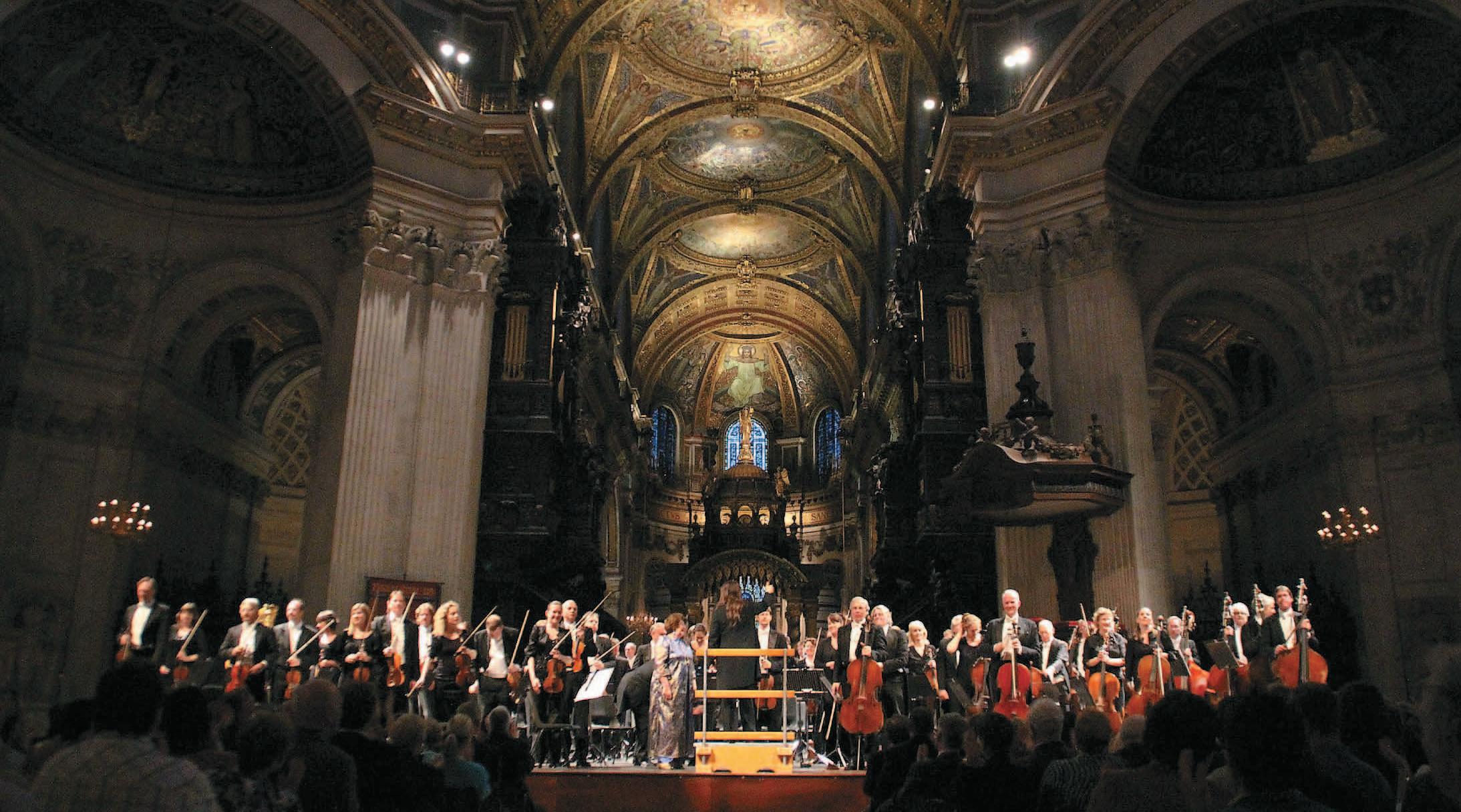
The other St Paul’s concert was just right for its acoustics, with Dame Gillian Weir at the Grand Organ. First were some Messiaen solos, and last a glowing Saint-Saëns Organ Symphony with the CBSO under glamorous Australian Simone Young. In between was a spirited performance of Poulenc’s Gloria, brilliantly sung by the London Symphony Chorus.
The Southern Cathedrals Festival at Winchester (14-16 July) enjoyed the mellow setting of the Close, fringed with its medieval and some later buildings, including the famous Pilgrims’ School, where all boy singers for both Cathedral and College are educated. The SCF rotates between Salisbury, Chichester and Winchester, mustering all three choirs annually for a three-day sacred choral feast (in 2011 devised by Andy Lumsden, the host cathedral’s Director of Music). On Day 1 Choral Evensong with the combined choirs of boys and men was recorded by BBC R3 – Stanford in A and the Howells Te Deum (Coll Reg) were sung to a very high standard; at the end Simon Bell thrilled us with the last section of Liszt’s Ad nos on the superb organ, the nucleus of which was built by Willis for the 1851 Great Exhibition. James O’Donnell gave the Festival Organ Recital in the evening, a substantial, impeccably played programme. On Day 2 we had the Festival Eucharist to Langlais (combined choirs of boys and men). All the music was French, and very fine too. In the evening there was Come Down, O Love Divine, a words and music concert by the girls of Salisbury and Winchester and the men from all three cathedrals. I really enjoyed this sequence; starting with settings by Tallis and Palestrina and ending with Sebastian Forbes and John Rutter, it was superbly sung and had a timeless quality. On Saturday the Festival Evensong was sung by the girls and men, with all English settings. The final concert, given to a packed nave by the boys and men, was especially memorable, with a
highly contrasted choice of Walton, Gowers, Holborne, Gabrieli, Gigout, Moore (2011 SCF commission), Pärt and Rutter: a satisfying Lumsden musical mix to round off, the direction being shared with fellow DoMs, Sarah Baldock and David Halls. A fitting finale to a fine festival!
The Three Choirs Festival at Worcester (6-13 August) Worcester Cathedral, the main venue for the 2011 Festival, is set very high on the eastern bank of the River Severn, its huge west window providing the famous backdrop to the county cricket ground. An innovation in 2011 was the use of the chapter house as an elegant tea-room, with piano playing by a talented King’s Scholar to help everyone relax. To appreciate the atmosphere of the world’s oldest music festival you really need to stay for the whole week, from the Festival Opening Service on Saturday to the final concert eight days later. For the first time this was A Night at the Opera and the less reverberant acoustic here proved very sympathetic to operatic singing. The Festival Chorus showed itself very comfortable with the Easter Hymn and the Anvil Chorus; their evening dress notwithstanding, they also did very well as Hebrew Slaves and in the Polovtsian Dances (Borodin). Sir Thomas Allen was narrator and singer, his stylish baritone well matched by the voices of Helen-Jane Howells and Kitty Whately. As an unusual finale to the Festival I found this break with tradition refreshing – we went away in ebullient mood. One of the customary lastnight works, Elgar’s Dream of Gerontius, this time opened the Festival under the baton of the director Adrian Lucas. The reading was powerful but I was not happy about John Graham-Hall’s very operatic style as Gerontius, with an edgy vibrato. Sarah Connolly and Alan Opie were superb.
There was a memorial concert for 9/11 on the Sunday, directed by Adrian Partington. The threnody began with Barber’s Adagio, then via John Adams’s 2002 tribute On the Transmigration of Souls and Mahler’s Adagietto to the main devotional offering of Mozart’s Requiem, with a sensitively matched quartet of soloists. The choristers of the three cathedrals sang superbly with the Festival chorus, and the whole lifted us up to the spiritual heights.
The Festival offered such a wealth of musical genres – plus lectures, receptions and excursions – that it is impossible to do them all justice (there were 64 ticketed events in total). The

residency of the Philharmonia Orchestra for eight days made possible a nightly musical feast, including Mahler’s Symphony No.3 (cond Suzanna Mälkki) and Beethoven’s Mass in C with the Three Choirs Festival Youth Choir (cond Adrian Partington), both outstanding concerts.
A really special night was the chance to hear Elgar’s rarely performed dramatic cantata Caractacus, set in the Malvern Hills and the Severn Valley. Five fine soloists plus chorus and orchestra were under the inspiring direction of Sir Andrew Davis, whose grasp of the Elgar idiom is second to none.
There were two major organ events: David Briggs talking about and playing his own transcription of Elgar’s Symphony No.2 – a transcription too far, in my view; a tour de force by Briggs, certainly, but with so many notes that at times I could not recognise the work. Later in the week, a recital of Liszt organ works given by Paolo Oreni. This was a display of astonishing virtuosity and organ fireworks that left us all gasping; the flying hands and feet visible on the CCTV were too fast to analyse and clearly driven by a unique talent. It displayed the new Tickell organ as never before.
Fine concerts were also given by The Sixteen, the Academy of Ancient Music and, outstandingly directed by Christoph Mueller, the brilliant National Youth Orchestra of Scotland, undaunted by the very taxing Symphony No.3 by James MacMillan. The last sacred choral concert gave us Brahms’s German Requiem, sung in German by the Festival Chorus, directed by Geraint Bowen; a very satisfying rendering which achieved moments of great serenity.
Alongside the concerts are the opus dei – two great services on the first weekend and seven Choral Evensongs, one of which was broadcast live on BBC Radio 3. Whether sung by the individual or the combined choirs, the polished singing of the carefully chosen settings affirmed the devotional purpose of the building and provided time out for prayer and reflection. The near daily celebration of Choral Evensong is one of the traditions of the Three Choirs and draws in a capacity congregation each day.
It is nice to report that Adrian Lucas’s last-ever Festival at Worcester achieved record audience numbers, thanks to careful planning by Worcester Chairman Sir Michael Perry GBE, Administrator Debbie Liggins, (who is also Three Choirs Development Manager), TCF General Manager Dr Paul Hedley and of course Artistic Director Adrian Lucas.

Canon Precentor, Lichfield
I am not sure why Martin Ashley might refer to ‘the introduction of girls at Lichfield’ in his book How High Should Boys Sing? (CM May 11, p61). There has been no such introduction. Of course, young men and maidens from a variety of schools, including our own, come here to sing on occasional ‘said’ days, but the boys continue to sing services on five days every week (with almost always the full allocation of evening psalms), and there has been no decision to expand the Choral Foundation to include girl choristers. Even when that happy day finally dawns (as dawn it must), there will be no takeover, as future Music Lists will make clear.
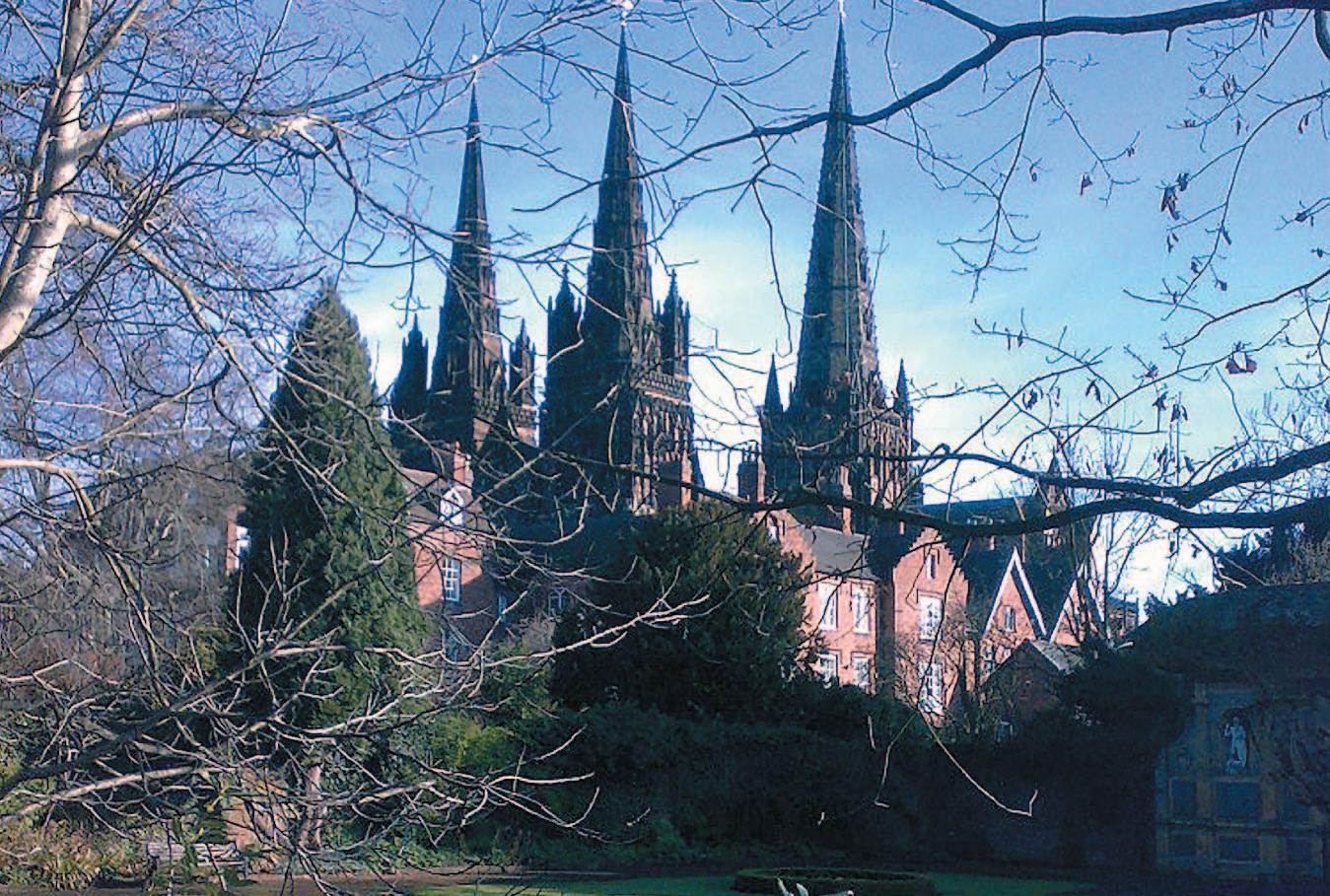
All general points and comments welcomed. Please send letters by 5 February 2012 to:
The Editor, 8 Colinette Road, London SW15 6QQ sooty.asquith@btinternet.com
Letters may be shortened for publication.
What a delight it was to read the two articles concerning Lay Clerks and Altos and to see the use of the term women altos. I believe that on every occasion I have gone to sing with a choir I am referred to as –‘ah! a male alto’. I have often been tempted to correct this and say it is only necessary to say alto and to refer to others singing in this range as contraltos or –as the authors have so succinctly put it –women altos. Thank you for this refreshing classification. I have no problems in singing with the ladies, but it would be nice to turn up to sing and be greeted with –‘ah, an alto –to sing with our ladies’.
Thank you for a wonderful magazine.
I write to compliment James Bowman on his interesting article Male Altos versus Female Altos (CM May 11). However, I feel duty bound, as the Edinburgh Diocesan Representative of FCM, to point out that St Mary’s Cathedral Choir was actually the first choir with a daily choral tradition to employ a female alto –as long ago as 2006.
Eric PaskOrganist Emeritus, St Nicholas’s, Harpenden Organ consultant, St Albans
I was pleased to see the letter from James Smith (CM May 11) about Gwen Marr’s ‘very fine line drawing’; and so was Gwen herself. Perhaps I might explain how this drawing came about.
When during Christopher Dearnley’s chairmanship I was the Friends’ publicity officer, I needed a small logo for an FCM leaflet or brochure (neither of us can now remember exactly what it was). As I frequently used to adorn concert and recital programmes with an organ block, I asked Gwen, a local artist, if she would kindly draw an imposing-looking organ case for the FCM job; and she agreed. I hadn’t any particular instrument in mind, just a representation of a ‘cathedral organ’ in its setting. Gwen chose from one of her books an illustration of Lincoln Cathedral organ’s west front, which offers an effective outline and worked well. Only when I got her drawing did I decide that for an FCM publication we should if possible include the choir, so Gwen kindly sketched in robed singers below the organ. And that is the picture which has now attracted Mr Smith’s admiration. (I should add, however, that the depiction of the choir as shown in your last issue may have been formalised a bit by another hand during the intervening
years.) The drawing was a one-off, never intended for anything so grand as the official Friends of Cathedral Music logo which, as you mentioned, it was to become. I have often asked myself how many of those Friends who down the years recognised the Lincoln organ case have wondered whether the choir had migrated to the nave, or why the organ was the wrong way round!
Every Christmas it is accepted, through tradition, that the Choir of King’s College Cambridge, is privileged to be heard on radio and television. They were also performing on BBC2 on Easter Sunday evening. I am surprised that Masters of Music from our great cathedrals throughout the UK do not protest against this, especially when their choirs are capable of producing such splendid and glorious music.
In fairness to the BBC, it also scheduled Westminster Abbey choir on Maundy Thursday, St Albans Cathedral on Good Friday, Easter morning worship from Liverpool Metropolitan Cathedral, Sunday Worship from St George’s Windsor, and Easter Day Eucharist from Salisbury Cathedral. ‘Easter Glory’ on Radio 2 was broadcast from Bath Abbey (girls’ and boys’ voices), and Choral Vespers for Easter Day (Radio 3) came from Liverpool Met. (Ed.)

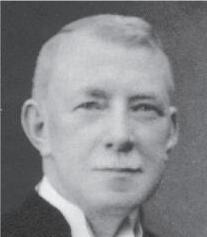
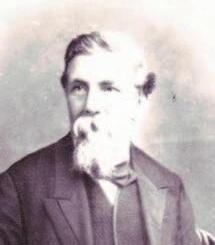
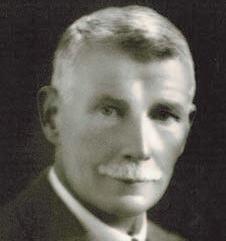

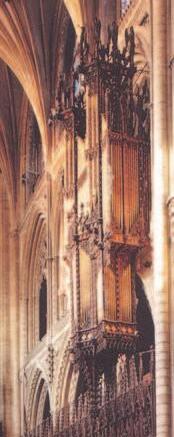

42 pages

ISBN 978 0 95504704 6
Nicolas Gombert, Renaissance composer, makes a sort of confession; a young composer in Mozart’s Vienna has an odd relationship with a female copyist; Eurydice in Hades considers Orpheus; Mrs Henry Purcell wonders what she has taken on. Elsewhere, Shakespeare gives Ben Jonson a geography lesson, and we discover for the first time how the Dean and Chapter of Westminster, in 1741, came up with a garbled misquotation for Shakespeare’s Poets’ Corner memorial.
To order, send a cheque for £5.50 (which includes P&P), made out to Humphrey Clucas, at: The Lewin Press, 19 Norman Road, Sutton, Surrey SM1 2TB
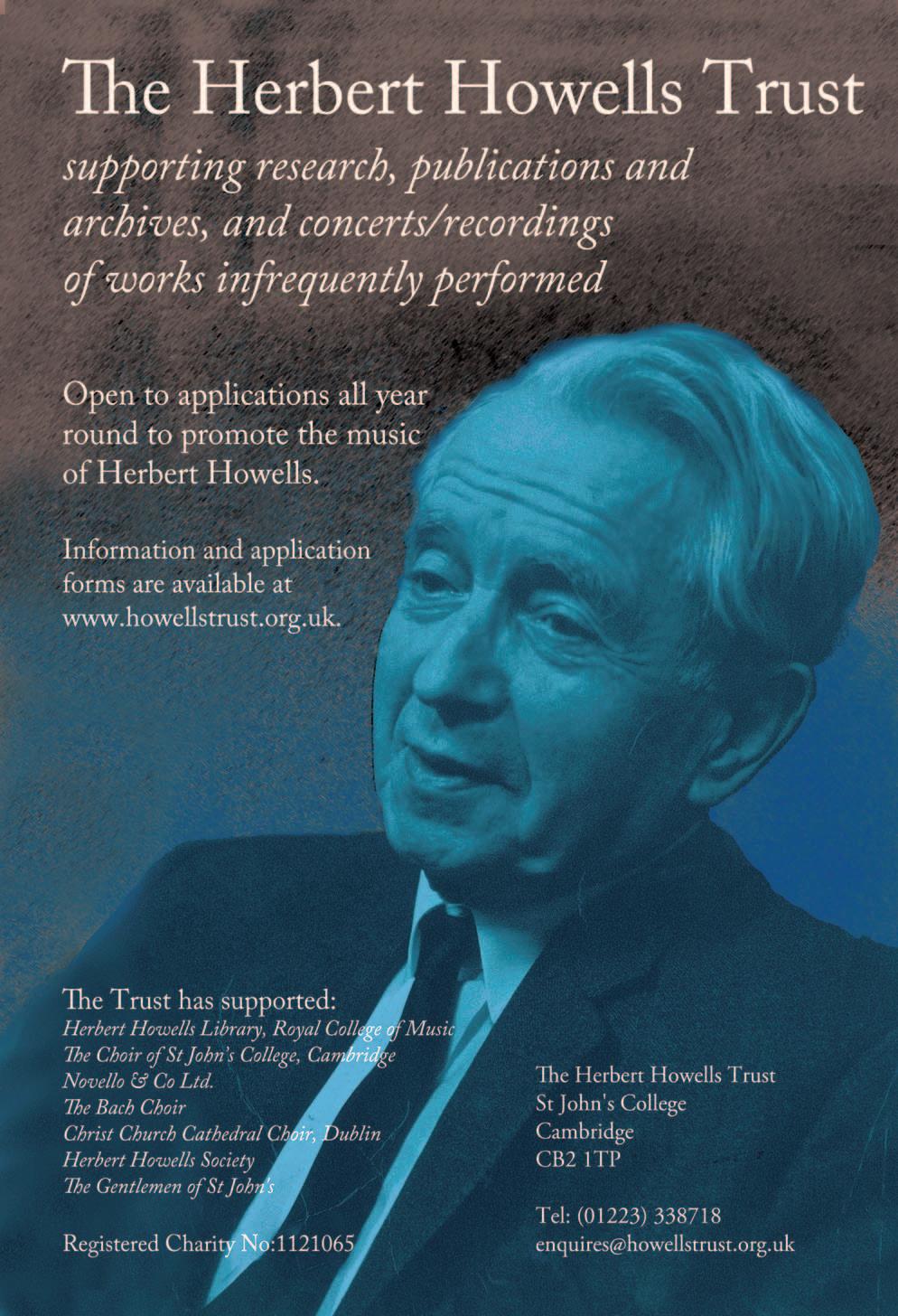
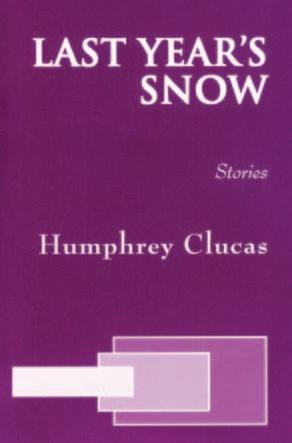
Available from bookshops or via Humphrey Clucas at The Lewin Press 19 Noman Road Sutton Surrey SM1 2TB enclosing a cheque for £5.50 which includes p&p
I enjoy Clucas’s stories and in particular his poetry so I was delighted to find one poem in this collection: Villanelle is a lovely piece about the drift of last year’s snow. In this, the third collection from his pen, Clucas writes in the guise of Nicolas Gombert, also as the wife of Henry Purcell and as Gabriel Fauré looking back on his songs and loves. There is also a story about a female copyist who descends on a young composer in Mozart’s Vienna along with her son. Sent by Providence she arrives on his doorstep one August morning. In this strange tale the young composer has an odd relationship with the copyist and without wanting to give anything away as to the fate of the three protagonists, there is a hint of murder, prostitution and the question of who wrote the Benedictus section of his Mass? All intriguing stuff and cleverly told. In Shakespeare Again Clucas tells a lovely tale about the elderly Dean and Chapter at Westminster Abbey in 1741 debating which Shakespeare quotation should go on a memorial in Poet’s Corner. These short stories are enjoyable and I look forward to the next set. Clucas’s output is certainly impressive.
Andrew PalmerMargaret Rizza
ISMN: M-57018-187-2


RSCM Publications
RSCM Stock List Order Number: C0836
Price: £3.50 (£2.62 affiliate price)
Margaret Rizza’s new Mass of St Benedict (RSCM Publications, 2011) is a choral/congregational English-language Mass setting, one of the first of its type that sets the new words of the English Catholic Missal that came into widespread use at the beginning of September of this year.

Rizza sets not only the ordinary movements of the Mass (Kyrie, Gloria, Sanctus, Agnus Dei) but also useful items such as the Gospel Acclamation, Memorial Acclamations and the Doxology and Great Amen for use in a modern parish setting.
Musically, the setting is in the minor mode of D, but is far from turgid and drab. The Kyrie is suitably penitential, and the Gloria rousing and with plenty of rhythmic drive. The Sanctus is in the joyful relative major of F, and the Agnus in the warmer key of D major; thus each movement has its distinct character and is a concise setting of the text. A moderately straightforward SATB choral part is provided with the underlying organ part, suitable for parishes with choirs, and there is a congregational part for those churches without (or for use in conjunction with the choir for those parishes which do). The congregation, with the choir, gives the response to the choir’s call in the Kyrie, and therefore has its own distinct purpose.
At the back of the score there are single-line congregational parts for ease of use, and there are two melodic parts for use by other instruments, the upper part for a non-transposing instrument (e.g. in C, for a violin) or in Bb (e.g. a trumpet at that pitch), and there is also a part for a Cello, or other bass-clef instrument.
This Mass will prove to be an invaluable liturgical primer to the new
words of the revised Missal, and will allow churches to join together in a more meaningful liturgy in what has not been a universally-welcomed move in terms of the new translation. Hopefully many more settings of this quality and variety will soon be flooding the church music market.
Edward TamblingChoral and Organ Music
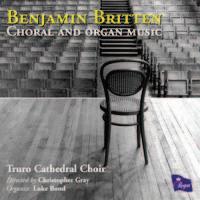
Te Deum in C; Jubilate Deo in E flat; Corpus Christi Carol; The Sycamore Tree; A Hymn to the Virgin; Hymn to St Cecilia; Prelude & Fugue on a theme of Vittoria; Missa Brevis; Antiphon; Rejoice in the Lamb; Advance Democracy.
Truro Cathedral Choir
Organist: Luke Bond
Director: Christopher Gray
REGENT REGCD 349 TT 74:33
The thirty-five years following Britten’s death have afforded musical commentators the customary period to assess his historical importance. Britten himself wondered whether he would come to represent ‘a wave or a ripple’ in the music of his time. It is heartening that the post-Britten generation is rediscovering and reinterpreting his music. On this fine recording some old favourites (Hymn to the Virgin, Hymn to St Cecilia, Missa Brevis, Rejoice in the Lamb) come up as fresh as paint and some less familiar items, such as The Sycamore Tree and Advance Democracy, are given an airing. Christopher Gray directs with a sense of style. The all-male choir is in excellent voice and all the soloists are drawn from its ranks. Luke Bond provides colourful accompaniments on the organ – surely the finest cathedral Willis of all.
How fortunate is Truro Cathedral in having such a talented team of musicians to enhance its worship.
Alan Spedding
Tota pulchra es, Maria; Aequale I; Zwei Totenlieder I; Ave Maria, Afferentur regi; Christus factus est; Ecce sacerdos; Virga Jesse; Locus iste; Pange lingua; Jam lucis orto sidere dignare; Aequale II; Libera me; Zwei Totenlieder II; Vexilla Regis; Os justi; Inveni David.
Choir of St Mary’s Cathedral, Edinburgh
RSAMD Brass
Director: Duncan Ferguson
DELPHIAN DCD 34071 TT 62:10


For many years the musical world seemed determined to misunderstand Bruckner. In his lifetime he was caught in the crossfire between the pro- and anti-Wagnerites and was reviled by critics, notably Hanslick. Subsequently, generations coupled his name with that of Mahler, with whom he had little obvious in common. Socially gauche and insecure, nevertheless he retained, throughout all his problems, a deep and unshakeable religious faith to which these magnificent motets bear witness.
Duncan Ferguson draws superb performances of great intensity from his voices, chorus, brass and organ, revealing the emotional nobility of Bruckner’s expression. Bruckner requires much from the singers in terms of tessitura and dynamics and St Mary’s Cathedral Choir meets the composer’s demands with confidence and commitment. A wonderful disc –very highly recommended.
Alan Spedding
and works by Stephen Cleobury, Philip Ledger, John
Rutterand Jonathan Willcocks.
A Ceremony of Psalms; Five Folksong arrangements; Magnificat & Nunc Dimittis; Sing! (Widor: Toccata from Symphony No 5); The National Anthem Four Carols (arr. Willcocks, Ledger, Cleobury, Rutter); Jonathan Willcocks Where the mind is without fear.
Choir of King’s College, Cambridge
Sopranos of Clare College Choir
Members of the Bach Choir & the Cambridge University Music Society
Royal College of Music Brass & Percussion Ensemble
Baritone: Stephen Varcoe
Organists: Stephen Cleobury; Jane Watts; Peter Stevens; Ben San Lau
Conducted by Sir David Willcocks
PRIORY PRCD 1053 TT 72:40
This celebratory disc is a reminder of some of the ways in which Sir David Willcocks had been at the centre of British music during his long life. Through his appointments at King’s College, Cambridge, the Royal College of Music and with the Bach Choir, he has been a major inspiration in raising choral standards and encouraging generations of musicians.
To those who know him only as an arranger of carols, the two major works here, Ceremony of Psalms (1989) and the Latin Magnificat and Nunc Dimittis will reveal a deeper side. The folksong arrangements are of a sophisticated quality which, however accomplished, rather belie their earthy origins. The CD is rounded off by an arrangement of the Widor Toccata, complete with words, made in answer to a plea from the Bach Choir, and a grand version of the National Anthem (‘knavish tricks’ et al) performed at the royal wedding in 1981. An affectionate tribute to a great musician.
Alan Spedding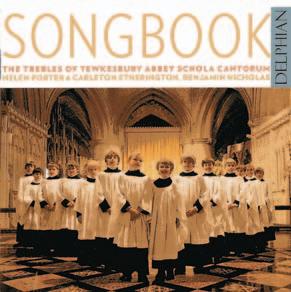
The Trebles of Tewkesbury Abbey
Schola Cantorum
Piano: Helen Porter
Organ: Carleton Etherington
Director: Benjamin Nicholas
DELPHIAN DCD 34097 TT 66:42






The Schola Cantorum choristers of Tewkesbury Abbey sing twenty-four items from their concert repertoire of sacred and secular songs. The policy of their director, Benjamin Nicholas, in building the confidence of his treble line through concert performance has obvious advantages when the boys take their place alongside their ATB colleagues in the Schola. The trebles are all educated at Dean Close Preparatory School and the Schola Cantorum sings weekday Evensong services in Tewkesbury Abbey. The boys make a clear bright sound and there are opportunities for a few soloists, notably Laurence Kilsby (BBC Chorister of the Year 2009), whose distinctive voice sets a pattern for the rest of the choristers. The recording was made in the warm acoustic of Merton College Chapel, Oxford and is designed to be a ‘showcase for the Abbey trebles’ – in which aim it succeeds admirably.
Alan
SpeddingThe Choir of Exeter Cathedral
Director : Andrew Millington
Organist : Paul Morgan
PRIORY PRCD 1045
It will be interesting to see how this project develops. Unlike the previous series from Priory, which selected psalms apparently at random, each choir in the series will have a portion of the psalter in numerical order. John Scott and his choir at St Paul’s recorded the entire psalter for Hyperion, a feat unlikely to be repeated, one would have thought; one can only imagine the effort involved in preparing quantities of morning psalms that are not usually sung nowadays, or of maintaining everyone’s interest in several days’ worth of Psalm 119. The seventeen boys and fourteen men of the Exeter choir acquit themselves well on the whole,
producing expressive singing with a wide dynamic range though not without a number of rough patches; the boys’ tone is attractive, though their enunciation and tuning are not beyond reproach. Organ accompaniments are always tasteful and inventive, with a splendid outbreak of thunder in Psalm 18. I wish, though, that someone had resisted the temptation to include such dubious devices as ‘boys only’ and ‘men only’ verses, the latter including a couple of extraordinary episodes when the first basses are given the tune with the effect of do-it-yourself barber’s shop singing. A considerable bonus is the inclusion of a number of attractive but littleknown chants, several of them by Exeter composers.
Timothy StoreyMissa Aeterna Christi munera; Magnificat primi toni à 8; motets.
The Choir of Westminster Cathedral Director: James O’Donnell
HELIOS CDH55368
(reissue — originally HYPERION CDA66490)
This setting of the mass seems almost part of the Anglican tradition; it was adapted to the English of the 1662 Communion Service by Sir George Martin and was staple fare in St Paul’s and other cathedrals in the days before Latin settings became acceptable. It is easy to understand why it became so popular, for it is melodious and mostly in only four parts; the fine plainsong melody on which it is founded appears in several Anglican hymn-books as the Office Hymn for Apostles and Evangelists. Twenty years ago, and not long appointed to Westminster Cathedral, James O’Donnell directed this superb recording (now reissued on the medium-price Helios label), which in the opinion of this reviewer made it obvious that he had taken over a very good choir and made it even better. Preceded by its plainsong, the mass is followed by the motets Sicut cervus, Super flumina Babylonis and Vidi turbam magnam plus a selection of four from Palestrina’s twenty-nine settings of texts from the Song of Solomon. A fine Magnificat primi toni for double choir rounds off a programme of great richness and variety. If you missed this superb disc first time round, don’t miss it now!
Timothy StoreySalve regina; Assumpta est Maria à 6 (motet);Missa Assumpta est Maria; Song of Songs Nos 9-11; Diffusa est gratia; Assumpta est Maria à 5 (Offertory); Ave Maria.
The Sixteen Director: Harry Christophers CORO COR 16091 TT 64:10
This is the first CD in The Sixteen’s long-term project to record a selection of Palestrina’s 104 (sic) masses with music relevant to the particular mass setting as well as some of his 29 settings of the Song of Songs. The recording was made in the Church of St Alban the Martyr, Holborn in London, which seems to possess the sort of generous acoustic that Palestrina’s music demands. The Sixteen has built a reputation for achieving the highest standards in its performances, and this disc is no exception. The nuances of Palestrina’s works are brought alive in an entirely convincing but natural way. Definitely one for the collection!
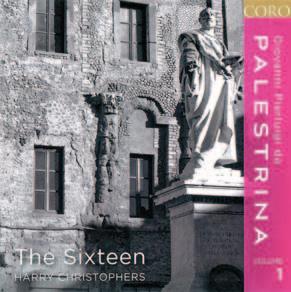
 Tim Rogerson
Tim Rogerson
Missa Trahe me post te; Magnificat primi toni à 8; motets.
The Choir of Westminster Cathedral Director : James O’Donnell HELIOS CDH55376

(originally HYPERION CDA66738)
The quatercentenary of Victoria’s death is a good excuse (if such were needed) for the reissue of this supremely beautiful recording, in which the Westminster choir sings with its wonted passion, energy and commitment. Drawn from the Song of Songs, Trahe me post te (Draw me after you, and let us run to the fragrance of your ointments) is the text of the fifth antiphon at Vespers of the Immaculate Conception; it was set by Victoria for six voices, and followed a few years later by a parody mass for five voices somewhat loosely based on it. Only in the six-voice Agnus Dei does Victoria draw in all the themes from his motet. Also in this programme is a small group of motets including the monumental eight-
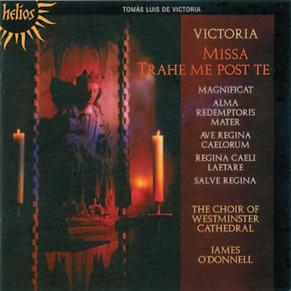
voice Salve Regina; both this and the Magnificat primi toni make much of the contrast between high and low voices, and between polyphony and sonorous chordal statements. This disc may be a voyage of discovery for some readers, but (to pursue a rather forced metaphor) it is well worth catching this particular boat.
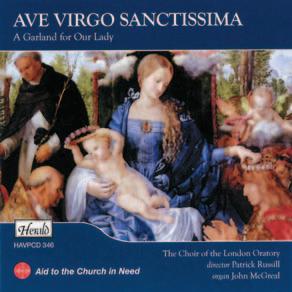 Timothy Storey
Timothy Storey

The Choir of Liverpool Metropolitan Cathedral.
Director : Timothy Noon
Organist : Richard Lea
PRIORY PRCD 1022
This is an anthology of high quality and great interest, with expressive and highly professional singing from the twenty-seven boys and fifteen men of this excellent choir. The grouping of settings of such texts as Salve Regina, Ave maris stella and so on works well and helps to build a varied programme which holds the listener’s attention from start to finish with the assistance of very informative liner notes; composers represented range from Byrd, Guerrero, Monteverdi, Palestrina and Philips to Bruckner, Grieg, Howells, Geraint Lewis, Taverner and Villette, plus the cathedral’s own musicians past and present. The fine Walker organ is put through its paces in a ‘paraphrase’ of Salve Regina by Jean Langlais. All in all, this is one of the most enjoyable anthologies to have come my way recently; I recommend it enthusiastically.
Timothy StoreyThe Choir of the London Oratory
Director : Patrick Russill
Organist : John McGreal
HERALD HAVPCD 346
This is a sound-world apart from Liverpool Metropolitan’s Marian anthology reviewed above, but just as good and equally enjoyable. It is a measure of composers’ apparently inexhaustible devotion to the Blessed Virgin Mary that only two motets, by Guerrero and Howells, appear in both programmes; in general the Oratory’s centre of musical gravity is firmly in the Renaissance and earlier, and the performances are imbued with the musicians’ great love and experience of this era’s incomparable music. The performances are expressive, sometimes robust and dramatic, and those who like ladies to sound like ladies when they sing will be delighted with such a colourful and honest sound; those who like a more anaemic tone-quality had better go elsewhere! Please buy this disc; I hope you will enjoy it, and you will have the bonus of contributing to Aid to the Church in Need, which helps persecuted and oppressed Christians around the world.
Timothy Storey
The Chamber Choir of St Mary’s School, Calne
Director: Edward Whiting
Viola: Philip Dukes
Organist: David Bednall REGENT REGCD327
I recall being very taken with a Te Deum I could not identify in a Sunday morning broadcast from Wells Cathedral some years ago. It was my first encounter with the music of David Bednall, who was then the cathedral’s assistant organist; his works have become deservedly popular for their qualities of invention, melodiousness and sheer practicality. His website tells us that his ‘belief, which has been demonstrated by many composers since the advent of atonality, is that the tonal, or at least the poly-tonal world, is far from exhausted’. Major inspirations are said to include R. Strauss, Puccini, Ravel, Vaughan Williams, Howells and Cochereau, which may explain the passages which remind your reviewer of the somewhat similar styles of Malcolm Archer and Richard Lloyd. This is not to belittle the music recorded on this disc; even if the Requiem cannot quite shake off the ghost of Duruflé, it is satisfying to
the listener without being cloying, even somewhat challenging at times, and the viola obbligato adds warmth and colour. It is exceptionally well performed, as are the three short works which make up the rest of the programme. This is a very fine CD, warmly recommended.
Timothy Storey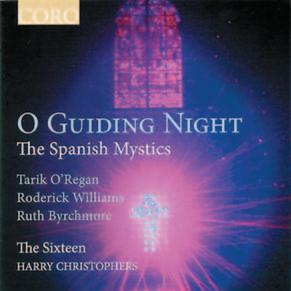
Works by Tarik O’Regan, Roderick Williams, Ruth Byrchmore
The Sixteen Conductor: Harry Christophers
CORO COR16090
This wonderful and challenging programme is centred on St Teresa of Avila’s prayer Nada te turbe and St John of the Cross’s poem En una noche oscura, both of which are set in whole or in part (under various titles) by these three contrasting composers, of whom Roderick Williams is perhaps more familiar as one of the very best of the current generation of baritone soloists. The virtuosity of the performers is quite staggering, and that alone makes this disc well worth buying; but some listeners may find the all too frequent recourse to ostinato figuration somewhat tiresome, O’Regan’s Beloved, all things ceased becoming especially irritating in this respect. I felt also that the sound effects created with great skill and imagination did not always seem to have much to do with the text. This disc will perhaps be most enjoyed by lovers of this particular style of contemporary impressionist composition, but the quality of the performances leads one to recommend it more widely.
Timothy StoreyBest-loved settings of the Magnificat and Nunc Dimittis

The Choir of St Paul’s Cathedral Director: John Scott Organist: Christopher Dearnley HELIOS CDH55402 (originally HYPERIONCDA66305)
This is another very welcome reissue on the mid-price Helios label; it was made in 1988 and is of pre-CD length, just under 61 minutes. The ‘best-loved settings’ presented here are Noble in B minor, Howells Gloucester Service, Murrill in E, Harwood in A flat, Darke in F, Sumsion in G and Dyson in D, and the performances are imbued with great care and affection for music whose familiarity can so easily breed indifference, if not contempt, in performer and listener alike. In particular, it would be hard to imagine a better account of the Gloucester Service. For many of us this and its companion disc My Soul Doth Magnify the Lord (HELIOS CDH55401, reviewed in the previous issue) capture the classic sound of St Paul’s and its great choir and organ; they are happy reminders of the creative partnership of Drs Scott and Dearnley. A ‘must’ for any serious Friend of Cathedral Music.
 Timothy Storey
Timothy Storey
Tomkins: Fancy; A short verse; A substantial verse; Byrd Great Service; Magnificat & Nunc Dimittis; Batten Fourth Evening Service; Hear my prayer; Gibbons Fantasia in four parts;Second Evening Service; A Voluntary; Weelkes Voluntary 1 and 2; Evening Service for Trebles.
Durham Cathedral Choir
Durham Consort of Singers
Director: James Lancelot
Organ: Keith Wright
OXRECS OXCD-106 TT 67:52





Keith Wright’s fascinating and scholarly programme notes which accompany this recording explain that the impetus for it came from the arrival in Durham in 2004 of the ‘Wetheringsett’ Organ, a ‘well-informed but nonetheless speculative re-creation of a typical organ from around

1530’. The organ returned to Durham in 2007, by which time the cathedral’s musicians had spent time considering how such an instrument might have been used in cathedral worship at the time, a process which was enriched by the their own collection of historic manuscripts. So all of the choir items on the recording are included within the various Durham manuscripts of the early 17th century and the accompaniments are taken from the Durham versions. The organ pieces have no particular Durham links, but are chosen to complement the choral items. They also provide an opportunity to hear the Witheringsett organ, which sounds possibly gentler than more modern instruments. The cathedral choir sings all of the choral works except the Byrd Great Service and the Batten anthem, which are performed by the Durham Consort of Singers, the cathedral’s mixed-voice youth choir. The disc represents a fascinating conjectural consideration of how this music might have been performed when it was first written and is worthy of a wide audience.
Tim Rogerson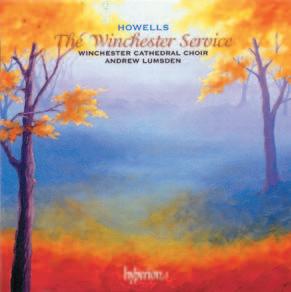
Jubilate Deo; Thee will I love; The Winchester Service; Rhapsody No 4; Come, my soul; Te Deum (St Mary Redcliffe); Coventry Antiphon; A Flourish for a Bidding; Antiphon; The fear of the Lord; Exsultate Deo.

Winchester Cathedral Choir
Director: Andrew Lumsden
Organ: Simon Bell
HYPERION CDA 67853 TT 68:30
The ‘famous’ choral music of Herbert Howells (canticles for King’s and St John’s Colleges, Cambridge, Gloucester and St Paul’s Cathedrals and Westminster Abbey, and the Four Anthems) was all written in the first sixty (or so) years of the composer’s 91-year life. The music recorded here, however, is less well known, is much less often performed and dates from his final 25 years. This is a superb recording, both in terms of the recording quality and standard of performance. The team at Hyperion has managed to strike the balance between capturing Winchester Cathedral’s generous acoustic and sacrificing clarity perfectly, whilst the choir itself is on top form. The balance between the organ and the choir is also extremely good, and the organ solos are superbly played by Simon Bell. The music is also of interest, not least in that almost every piece was written for a specific occasion and is nearly all recognisably by Howells. Those readers who are unmoved by his compositions may be disappointed to read that last clause, but for the rest of us, it is good news. To find out more, I suggest that you buy this most significant and highly recommended new release.
 Tim Rogerson
Tim Rogerson
Tomás Luis de Victoria:
Magnificat octavi toni, Litaniae Beatae Mariae, Missa Alma Redemptoris Mater
The Sixteen
Conductor: Harry Christophers CORO COR16088
Our Blessed Lady is certainly getting her fair share of attention, and this is perhaps the loveliest of the several discs that have come to me for review. The quality of the singing is of the superlative quality one has come to expect from these performers; but one is struck by the amazing variety of the composer’s response to familiar texts and to the plainchant which is the foundation of much of the music in this programme, and by the sheer virtuosity with which he constructs longer edifices such as Mass or Magnificat. Nor must one overlook the skill with which Harry Christophers paces the performances, not merely in selecting apt tempi but also in creating a scheme of dynamics which serves to reinforce and unify the architecture of music. His control of the Gloria from the Mass is a good illustration of what I mean. This is a hugely satisfying CD, strongly recommended, a fitting act of homage to the 400th anniversary of the composer’s death.
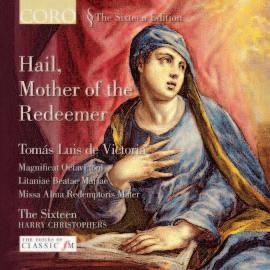
Timothy Storey


BYRD TO BLOW
HAVPCD363. The English Baroque Organ. Robin Walker: Organ. Music includes works by William Byrd, John Bull, Orlando Gibbons, Thomas Tomkins, Henry Purcell and John Blow.



THE ORGAN OF CHICHESTER CATHEDRAL
HAVPCD364. Sarah Baldock: Organ. Music includes works by Henry Purcell, J.S. Bach, Josef Rheinberger and Ralph Vaughan Williams.
RICHARD PANTCHEFF
SUITE FOR ORGAN AND OTHER ORGAN WORKS
HAVPCD365. Marcussen Organ in Tonbridge School.
Iain Farrington: Organ.
ENGLISH FAYRE
HAVPCD366. The Organ of Winchester Cathedral.
Simon Bell: Organ. Music includes works by Healey Willan, Reginald Goss-Custard, Edward Elgar and Philip Moore.
CATHOLIC COLLECTION III

HAVPCD368. Music through the Church’s Year from Douai Abbey. Terence Charlston: Organ. Douai Abbey Singers, directed by Dr John Rowntree. Monks’ Schola, directed by Dom Alban Hood.
CDs and Cassettes supplied to all good record shops and other outlets through the following distributors:
Nazareth Listen; Chilcott Be thou my vision; Irish Blessing; Wood O thou the central orb; Tallis If ye love me; Frikki Walker Prayer for Peace; Lead kindly light; Bell The splendour of the House of God; MacMillan A new song; Batten O sing joyfully; Brown Just as I am; Collin The quiet Heart; Lloyd View me, Lord; Goodall Love divine. Arrangements: We cannot measure; Go down Moses.
St Mary’s Cathedral Choir, Glasgow
Director: Frikki Walker
Organists: Peter Yardley-Jones & Geoffrey Woollatt
OXRECS OXCD-109 TT 47:36
This recording gives a representative selection of the music sung at St Mary’s Cathedral, Glasgow where the mixed choir (boys, girls, ladies and men) sings two services each Sunday. It includes a number of recently composed works as well as some long-established old favourites. Among the recently composed works are no fewer than six pieces either composed or arranged by the Organist and Director of Music at St Mary’s, Frikki Walker, often for television or radio broadcasts, which are part of the regular activity of the choir. The choir sings in a beautifully controlled way with a strong sense of ensemble which belies the fact that it contains almost forty singers. The organ accompaniments are also well-judged, exciting when appropriate but otherwise discreet and supportive. In summary, a very satisfying disc.
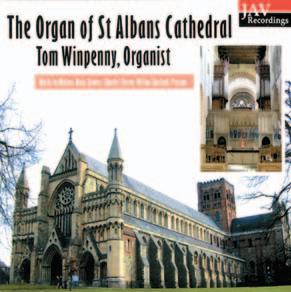

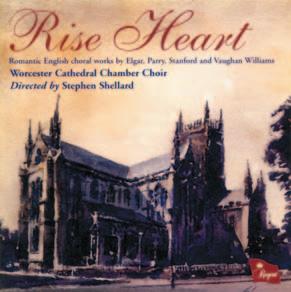 Tim Rogerson
Tim Rogerson
Romantic English choral works by Elgar, Parry, Stanford and Vaughan Williams
Elgar Light out of darkness;Memorial Ode for Queen Alexandra; Three settings of O salutaris hostia;The spirit of the Lord; Vaughan Williams Five Mystical Songs; Parry Choral Prelude on Martyrdom; My soul, there is a country; Chorale Prelude on Croft’s 136th;
Hear my words; Stanford The blue bird.
Worcester Cathedral Chamber Choir
Director: Stephen Shellard
Baritone: Ben Cooper
Organ: George Castle
REGENT RECGD 369 TT 78:27
Worcester Cathedral Chamber Choir was founded in December 1998 by its Musical Director, Stephen Shellard, and comprises some 30 voices. The Choir sings all the cathedral services for a weekend at least once a term and performs concerts in the diocese and beyond. The CD is a pleasurable collection of songs by Elgar, Vaughan Williams, Parry and Stanford. The programme notes state: ‘It is apt to record works by these four composers whose orchestral and vocal works helped shape English music in such a fundamental way. All four had strong links with the Three Choirs Festival and two works on this recording reflect that link in Elgar’s Light out of Darkness and Vaughan Williams’ Five Mystical Songs. The programme notes are informative and all the words of the songs are reproduced. Altogether an enjoyable experience which reminds us of the incredible wealth of music these four composers contributed to the English choral scene. The baritone soloist, Ben Cooper, gives an assured performance as does the organist, George Castle.
Trevor GodfreyPlays the Grove and Milton organs of Tewkesbury Abbey
Guilmant Grand Choeur Triomphal; Hollins
Intermezzo in D flat; Creston Toccata; Karg-Elert Valse
Mignonne; Ritter Sonata III; W T Best Concert Fantasia on a Welsh March; Salomé Cantilène; Peeters Variations on an Original Theme; Saint-Martin Toccata de la Libération.
DELPHIAN DCD34089 TT 76:33
Carleton Etherington gives a dazzling display and fascinating opportunities
to compare and contrast Tewkesbury Abbey’s famous organs in a programme ranging from salon pieces to full-blooded organ music, including familiar and lesser-known repertoire. The Hollins and Salomé pieces feature the gentler sounds of the Grove organ while the Milton’s soft combinations spread sparkle on Karg-Elert’s confection. The Grove’s majestic plenum is given an airing in the Guilmant and also in W T Best’s Concert Fantasia – appropriately, since Best described this instrument as ‘the finest organ of its kind that I have ever played upon’.
Carleton Etherington’s persuasive interpretations make it unnecessary to choose between the two organs – a most enjoyable recital.
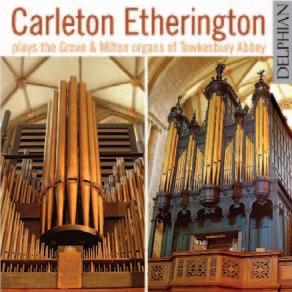 Alan Spedding
Alan Spedding
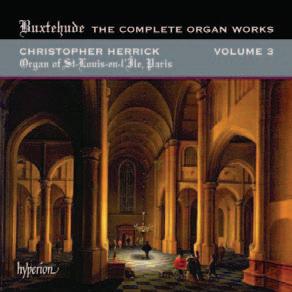
Christopher Herrick
Aubertin Organ of St-Louis-en-l’Ile, Paris, 2005
Praeludia in D minor, G minor, F major, C major, F sharp minor (BUX WV, 140, 163, 145, 136, 146; Canzonas, Chorale Variations and Chorale Preludes.
HYPERION CDA67855 TT 75:31
Throughout his long collaboration with Hyperion, Christopher Herrick has been meticulous in choosing the instrument to match the music. The choice of the Aubertin in St-Louis-en-l’Ile in Paris gives him the ideal instrument for the third CD in his Buxtehude series. The programme is arranged with the praeludia interspersed with chorale preludes, chorale variations and canzonas in a display of the versatility both of the player and the composer. The improvisatory elements of Buxtehude’s style are well realized in the large-scale works while delicacy and introspection are exploited in the quieter canzonas and chorale preludes respectively. The tangy (Young) temperament of the organ adds character and spice up to the last chord of the F sharp minor Praeludium which ends this accomplished recital.
Alan SpeddingTom Winpenny
Walton (arr. Winpenny) March: A History of the English-Speaking Peoples; Bach Prelude & Fugue in D, BWV 532; Gowers Trio Sonata (1995); Handel Concerto Op 4, No 1; Vierne Feux Follets; Willan Introduction, Passacaglia & Fugue; Hurford Two Dialogues; Preston Toccata
JAV RECORDINGS JAV190 TT 77:43






Tom Winpenny’s CD debut was recorded in 2009 soon after the St Albans rebuild by Harrison & Harrison. It gives him the opportunity to show off the organ’s capabilities and his own musical prowess. Here are exuberant and exhilarating performances of Bach, Patrick Gowers and Healey Willan, and real magic in Vierne’s Feux Follets. He pays homage to Peter Hurford who inspired the building of the ground-breaking 1962 Harrison organ together with the St Albans Organ Festival, and to Simon Preston who made his famous Messiaen recordings on the organ in late 1960s. The CD booklet has notes on the pieces and a full account of the organ’s history.
An excellent recording – there will be more to come, without doubt!
Alan Spedding
The Royal Albert Hall Organ
Benedict (transcribed W T Best) Marche des Templiers; W T Best Variations and Finale on “God save the Queen”; Morandi (trans Best) Bell Rondo; Mendelssohn (trans Best) War March of the Priests; Rossini (trans Lemare) William Tell Overture; Flager Variations on an American Air; Ireland The Holy Boy;Capriccio; Pierné Marche des Petits Soldats de Plomb; Tchaikovsky (trans Evans) 1812 Overture.
REGENT REGCD 322 TT 73:23
In recent years Thomas Trotter has issued highly acclaimed discs of the works of Elgar, Schumann and C P E Bach. Here he presents a ‘concert hall’ recital of (mostly) transcriptions, in a brilliant display of virtuosity. Nothing seems beyond his faultless technique from the transcriptions of W T Best to
his own stunning arrangement of Edwin Evans’s version of the 1812 Overture via The William Tell Overture arrangement by Lemare, one of Trotter’s predecessors at St Margaret’s, Westminster. The restored organ sounds fabulous in the spacious RAH acoustic and its colours are displayed with fastidious taste.
As with all Thomas Trotter’s performances, musical considerations are paramount in these interpretations, making them musically satisfying and not mere displays of fireworks. Highly recommended.
Alan SpeddingMargaret Phillips plays the organs of St Nicolaas Kampen and Hervormde Kerk, Noordbroek.
CD 1: St Nicolaas (Bovenkerk), Kampen, Organ by Albertus Anthoni Hinsz, 1743.
Toccata & Fugue in D minor BWV 565; Chorale preludes: Liebster Jesu, wir sind hier BWV 730; Liebster Jesu, wir sind hier BWV 731; Liebster Jesu, wir sind hier BWV 754; O Herre Gott, dein göttlichs Wort BWV 757; Trio Sonata No 2 in C minor BWV 526; Partite diverse sopra Christ, der du bist der helle Tag BWV 766; Concerto in G major (after Ernst) BWV 592; Pedal-Exercitium BWV 598; Prelude & Fugue in G minor BWV 535; Chorale preludes: Ach, was ist doch unser Leben BWV 743; Erbarm’ dich mein, O Herre Gott BWV 721; Toccata & Fugue in D minor BWV 538.
CD 2 Hervormde Kerk, Noordbroek. Organ by A. Schnitger, 1696, A. A. Hinsz, 1768, H. H. Freytag, 1809.
Toccata, Adagio & Fugue in C major BWV 564; Partite diverse sopra Ach, was soll ich Sünder machen BWV 770; Trio Sonata No. 5 in C major BWV 529; Chorale preludes: Aus der Tiefe rufe ich BWV 745; Ach Gott, vom Himmel sieh’ darein BWV 741; Jesus, meine Zuversicht BWV 728; Fugue in G minor BWV 131a; Chorale preludes: Wie schön leuchtet der Morgenstern BWV 763; Nun freut euch, lieben Christen g’mein BWV 755; Nun freut euch, lieben Christen g’mein BWV 734; Herr Gott, dich loben wir BWV 725; Prelude & Fugue in C major BWV 545.




The fifth CD in Margaret Phillips’ exploration of the wonderful organ music of J S Bach continues the standards set in the previous discs. The playing continues to be of the highest order, and this time the music is performed on two historical instruments in the Netherlands. Again the music is presented as a recital programme rather than pieces of the same style all being played together, so here we are presented with two of the Trio Sonatas, two Partitas (variations on a theme), three toccatas, two preludes and fugues, a fugue, no fewer than thirteen chorale preludes and a pedal exercise. The programme notes contain not only a little background information about the pieces but also details of the registration used and information about the organs used. As the owner of no fewer than nine sets of the ‘complete’ organ works of J S Bach, I wonder whether I need any more recordings of this music. The answer, as far as this series of discs is concerned, is ‘Yes’.
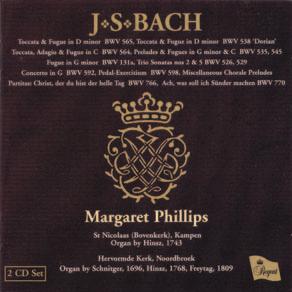

Tim Rogerson.
Margaret Phillips
CD1: Christian Müller Organ in St Bavo, Haarlem, 1738.
CD2: Bernard Aubertin Organ in St Louis-en-l’Ile, Paris, 2004.
Preludes & Fugues in B minor, E minor & G (BWV 544, 548, 550); Fantasia and Fugue in G minor, BWV 542; Toccata in E BWV 566; Trio Sonatas 1 and 6 (BWV 525, 530); Trio in G BWV 586; Concertos in C and D minor (BWV 595, 596); Miscellaneous Chorale Preludes.
For this latest pair of CDs in her acclaimed J S Bach series, Margaret Phillips chooses first the famous Müller organ in Haarlem, possibly the best-known organ in the world (visually at least), followed by the Aubertin organ which caused such a stir as the most significant Parisian instrument of modern times. Each disc includes major works, a trio sonata, a concerto and several chorale-inspired compositions. The playing is, by turns, magisterial, reflective and sparkling. Excellent programme notes are provided by
Margaret Phillips herself together with specifications of both organs and full registration details for each piece. Interesting comparisons may be made between the performances on each organ; those on the Aubertin organ have a certain added piquancy, due no doubt to the temperament in which the organ is tuned. Fine, mature Bach performances –beautifully played and highly recommended.
Alan Spedding
Peter King plays the Klais organ in Bath Abbey
CD1: Prelude and Fugue on BACH; Orpheus; Funérailles; Consolation IV; Legend of St Francis preaching to the birds; Legend of St Francis of Paula walking on the waves.
CD2: Chapelle de Guillaume Tell; Sposalizio; Il Penseroso; Canzonetta del Salvator Rosa; Trauerode; Consolation VI; Variations on Weinen, Klagen
CD3: Excelsior, Ave Maria von Arcadelt; Evocation (Chapelle Sixtine); Fantasia and Fugue on Ad nos, ad salutarem undam; Fantasia; Adagio; Fugue.
REGENT 3CD Set REGCD278 TT 168:03
Each CD of Peter King’s 3-CD set stands as a complete recital of Liszt’s music. Each disc contains a major work, Prelude and Fugue on BACH (CD1); the Weinen, Klagen variations (CD2) and Ad nos, ad salutarem undam (CD3). The rest of the music consists of original organ pieces or, appropriately in the case of Liszt (a famous arranger of his own and other composers’ works), a number of transcriptions by other musicians such as Nicolas Kynaston, Saint-Saëns, Reger, Lemare and Peter King himself.
Peter King has lived with the superb Klais organ of Bath Abbey since its inception in 1997 and his familiarity with it, (and the Abbey’s none-too resonant acoustic), produces fine, musically confident performances. The booklet contains full details of the organ and a most interesting extended essay entitled ‘From Bach to a new world: an exploration of the organ music of Franz Liszt’.
Altogether a fitting and timely commemoration of Liszt in his bi-centenary year.
Alan SpeddingCharles Harrison and David Leigh play the organ of Lincoln Cathedral. Mozart: Fantasia K608; Mendelssohn Fugue in D major; Fugue in C minor; Langlais Double Fantaisie pour deux organistes (from Mosaïque); Deuxième fantaisie pour deux organistes (from Mosaïque ) ; Troisième fantaisie pour deux organistes (from 8 Préludes); Tomkins A Fancy for two players; Carleton A Verse (In Nomine); Johnstone Shack-up and Feud; Leighton Martyrs
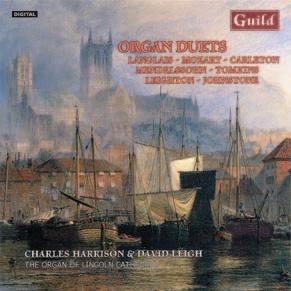
GUILD GMCD 7368 TT 68:01
The music on this disc falls broadly into two categories – works composed for two organists to play on one instrument and works arranged so that two organists can play them on one instrument. The first three works fall into the latter category whilst the remainder of the pieces were all composed as organ duets. The Tomkins and Carleton pieces are played on Lincoln Cathedral’s Retro Choir organ, whilst the other items on the programme feature the cathedral’s famous Father Willis instrument. The Mozart and Mendelssohn pieces work well in these arrangements, which allow a greater range of colours to be used in the performance than would be possible with only one organist. The Langlais pieces are typical of the composer’s style with exciting fast-moving passages alternating with more reflective sections, but never straying far from his dark and brooding dissonant idiom. Andrew Johnstone’s piece takes the form of a chaconne and fugue, the former relatively gentle and peaceful, whilst the latter is more involved. Kenneth Leighton’s Martyrs is a piece based on the Scottish hymn tune of the same name, not well known in England. The piece is in two sections and, as with Leighton’s canticle settings, each starts softly and builds up to a thrilling climax. Charles Harrison and David Leigh are to be applauded for bringing these works to our attention and for giving them such committed performances.
Tim RogersonJan Van Mol plays the Great Organ in the Sint-Pauluskerk, Antwerp Magnificat du 5me ton (3me livre); Magnificat du 6me ton (3me livre); Versets en La mineur (2me livre); Versets en Ré majeur (1er livre); Versets en Fa majeur (1er livre).

LCS HIRES LCSCD 002 TT 66;06
The Sint-Pauluskerk organ is the obvious choice for a programme of this liturgical music. Miné (1795 – 1869), a prolific composer and organist of Chartres Cathedral, was writing during the period of Catholic revival following the upheavals of the French Revolution. The Antwerp organ, built originally by Van Hagen in 1654, with the sumptuous case in which it is still housed, has undergone many vicissitudes. It has now been restored to its 1822-24 condition and is capable of delivering Miné’s registration details precisely.
The CD is primarily of historical interest, showing the state of liturgical organ music of the period, which to be honest was not of the highest quality. The thirty-nine tracks allow the listener to savour the wonderful variety of stop combinations available on this organ so that even if the music does not completely satisfy the soul, the sounds gratify the ear.
Alan Spedding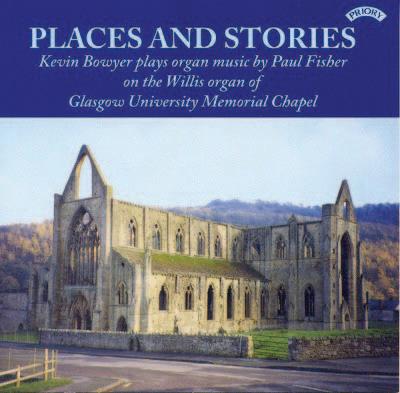
Plays organ music by Paul Fisher
Willis Organ of Glasgow University Memorial Chapel.
Organ: Kevin Bowyer.
Solo clarinet: Dawn Bowen.
Eireann Notes (Seven Short Pieces based on Irish Folk Melodies); Suite: The Fire and the Rose; Name Play (Variations for Organ and Clarinet); These Things Should Not Be (Two Grumpy Pieces); Tintern (Echoes of a Broken Past).
PRIORY PRCD892 TT 78:31
Kevin Bowyer has long been famed not only for his outstanding performances and recordings of mainstream music but also for his exploration of less familiar repertoire, starting with his famous world premiere of the Sorabji Symphony for Organ in 1987. He clearly feels an affinity for the ethos of this highly personal music. With his magnificent technique and ear for musical colour, he brings the composer’s vision sympathetically to life. The Glasgow organ (Willis 1927, rebuilt Harrison, 2005) gives him the means. This is not Kevin Bowyer’s first recording of Fisher’s music and the latter is indeed fortunate in having such a dedicated and accomplished advocate for his music.
Alan Spedding
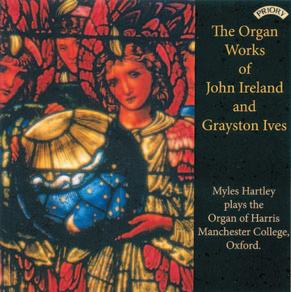
Myles Hartley plays the Organ of Harris Manchester College, Oxford. Ireland: Alla Marcia; Sursum Corda; Elegiac Romance; Miniature Suite for Organ; Capriccio; Meditation on John Keble’s Rogationtide Hymn. Works by Ireland arranged for Organ: Elegy; The Holy Boy; Cavatina; Epic March. Works by Ives: Intrada; Lullaby; Processional PRIORY PRCD 1054 TT 72:12
The organ in Harris Manchester College dates from 1893, when it was built as a two-manual instrument by Gray & Davison, and 1930 when Nicholson rebuilt and enlarged it. After further work in 1972, the organ was restored in 2008 but it remains unashamedly a romantic English instrument with only ten of its forty stops speaking at 4’ pitch or above. This pedigree, of course, makes it an ideal instrument for an exploration of the organ music of John Ireland, whose works included on the disc cover the period from 1902 to 1958. In his performance of the Ireland pieces, Myles Hartley
manages to get the important balance between excessive sentimentality on the one hand and sufficiently engaging emotion on the other exactly right, keeping the music moving whilst allowing the tempi a little extra flexibility where needed. The Intrada and Lullaby by Grayston Ives are also very much in romantic style and so again suit the instrument very well. The very final chord of the Intrada was spoilt for the reviewer by the addition of what sounded to be some sort of harmonic bass effect. The Processional is in a rather more modern style and would benefit from a less refined organ. The three gentle arrangements which follow are delightful, whilst the rousing Epic March provides a satisfying conclusion to this enjoyable disc.
Tim RogersonSarah Baldock
Purcell Double voluntary in D minor; Bach Prelude & Fugue in C; Three Chorale Preludes: Erbarm dich mein, O Herre Gott; Herzlich tut mich verlangen; Liebster Jesu, wir sind hier; Howells Psalm Prelude Set 1 No 3; Vaughan Williams Rosymedre; Whitlock Five Short Pieces.
HERALD HAVPCD 364 TT 74:44





Sarah Baldock has put together a most pleasing and contrasting programme in this CD with a variety of organ music from Purcell to Whitlock which includes Bach, Rheinberger, Vaughan Williams and Howells en route. The major work is Rheinberger’s Sonata in E minor, which like so much of his organ music brings great pleasure and this recording reminds us how under-appreciated his music is. He always has something to ‘say’ which he does in a unique and appealing way as exampled in the gentle and ponderous Intermezzo. By contrast the Scherzoso bursts forth full of energy, leading abruptly to the Passacaglia which is upon you before one realizes the pedals are softly introducing the first of a series of variations. The final work, Five Short Pieces by Percy Whitlock, reminds us how much more this gentle composer could have produced if his fragile life had not been snuffed out at the age of 43. We were deprived of a brilliant and original talent as this short suite demonstrates, ending with Paean –Norman Cocker was not the only composer who could write a tuba tune! Sarah Baldock’s interpretations of the music in her programme remind us what an accomplished organist she is.
Trevor Godfrey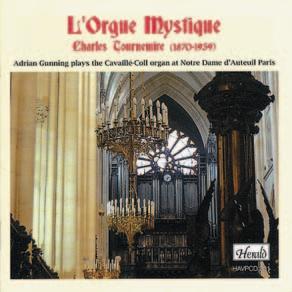
Adrian Gunning plays the CavailléColl organ at Notre Dame d’Auteuil, Paris
Quinquagesima – V: Verrière; Offertoire; Christmas –Offertoire; The Holy Trinity – Triptyque; All Saints –Communion; Pentecost XII – Choral 3; Christmas I – Offertoire; Advent III
Toccata; Assumption of the BVM – Offertoire; Communion; Pentecost XVI – Choral Alleluiatique 1; Pentecost XXII – Communion.
HERALD HAVPCD 361 TT68:08
The aim of Charles Tournemire (1870 – 1939) in writing L’Orgue Mystique was to provide for the Catholic liturgy what Bach had achieved for the Lutheran. Tournemire’s monumental collection consists of 51 Offices for the Sundays of the liturgical year, each set containing five movements. Tournemire was famous for his masterly plainsong improvisations at Mass when he was organist of Ste Clotilde, Paris. Adrian Gunning’s selection demonstrates the variety of expression achieved by a composer inspired by his faith and familiar with his melodic material.
Tournemire’s music was conceived in terms of the Cavaillé-Coll organ and the instrument in Nôtre Dame d’Auteuil has all the requisite colours.
Adrian Gunning’s long familiarity with and devotion to the music results in authoritative performances which allow us, in Tournemire’s words, to ‘lose ourselves in the revelatory contemplation of unfathomable thoughts’.
Alan SpeddingWe provide all types of new instruments
New Organs
Restoration
Rebuilding
Tuning
Maintenance
We can give unbiased advice for all your requirements
Hillside Organ Works
Carrhill Road, Mossley, Lancashire OL5 0SE Tel: 01457 833 009
Fax: 01457 835 439
The biography of Dr John Sanders
OBE, FRAM, FRSCM
Organist & Master of the Choristers at Chester, and then, Gloucester Cathedral
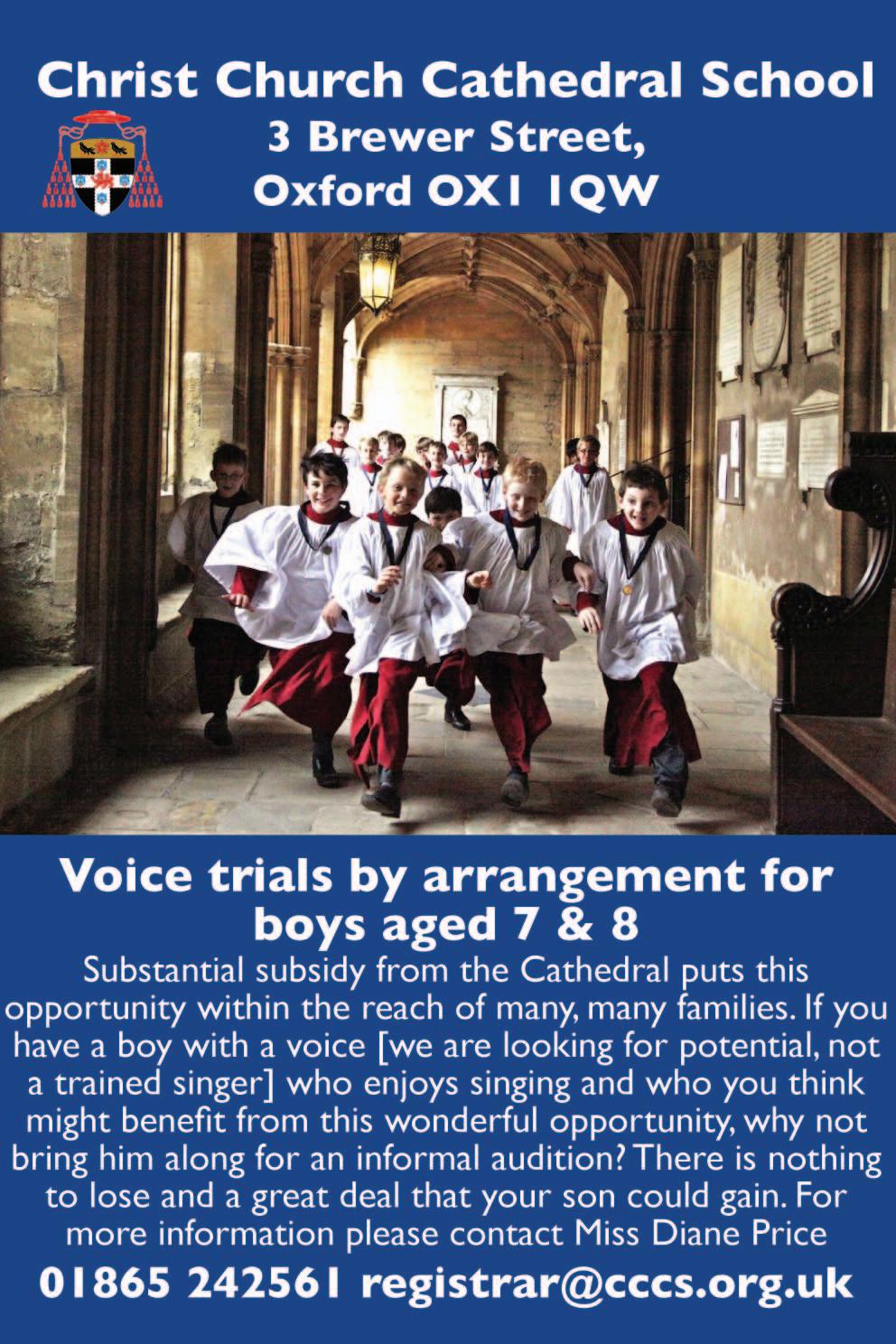
With a foreword by Dr Roy Massey

Now in paperback
15 illustrations –Price £12 p&p FREE
The Revd Alan Charters

Crescent House
Church Street
TALGARTH
Brecon LD3 OBL
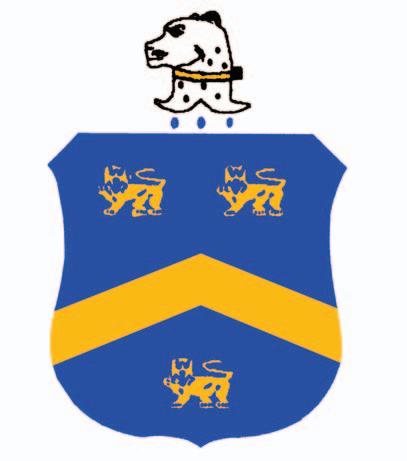
Allegro Music ..................................................................7

Campaign for the Traditional Cathedral Choir ........65
Christ Church Cathedral School ................................65
Dean Close Preparatory School ..................................37
George Sixsmith Organs ..............................................65
Harrison & Harrison ....................................................57
Herald ............................................................................61
The Herbert Howells Trust ..........................................57
Humphrey Clucas..........................................................57
Incorporated Association of Organists ......................66


John Sanders..................................................................65
Makin Organs ................................................................2
Regent Records ............................................................67

Retreat Association ......................................................40
Royal School of Church Music ....................................19

Salisbury Cathedral Voice Trials ..................................67
Viscount Classical Organs............................................33
Westminster Abbey Choir School ................................67
Salisbury Cathedral Choir offers a wonderful opportunity in a spectacular setting

Be a chorister for a day
Saturday 12 November
Open day for prospective choristers in School Years
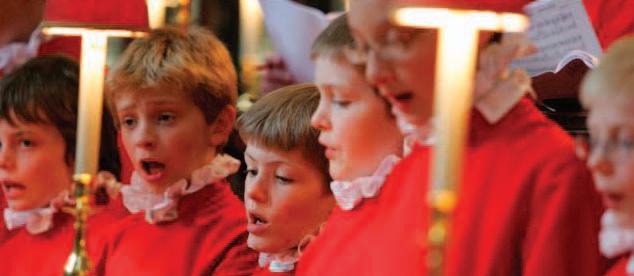

2,3 and 4 and their parents
Voice Trial Workshop
Voice Trials
School Years 3 & 4
Saturday 3 December
Saturday 21 January 2012 (boys)
Saturday 4 February 2012 (girls)
Informal Pre-auditions any time by arrangement
All children are educated at Salisbury Cathedral School Scholarships and Bursaries available
For further information please contact: chorister.recruitment@salcath.co.uk or telephone 07587 826 622
www.salisburycathedral.org.uk
‘Few have done more to champion our choirs and the instruments that accompany them than Regent Records.’ Classic FM Magazine, January 2011

The Choir of York Minster directed by Robert Sharpe David Pipe organ
The first release in a new series from Regent charting a musical journey through the church’s year at England's cathedrals.
This disc travels through a complete liturgical year in York Minster, with performances shared between York’s Boy and Girl Choristers and Songmen. The wide range of styles and periods takes in works by contemporary composers Andrew Carter, Gabriel Jackson, Philip Moore, Howard Skempton and Richard Shephard, and includes no fewer than eight premiere recordings.
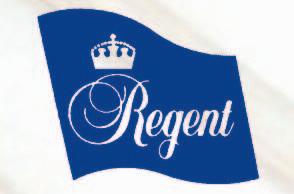
celebrating the supreme artistry of THOMAS TROTTER
Now established as one of the world's foremost organ music labels, the release of Regent’s first DVD promises to be a special event. Get the best seat to watch one of the world's greatest organists perform a wonderfully entertaining and exciting programme designed to appeal to all music lovers!
THE TOWN HALL TRADITION

Virtuoso Organ Showpieces from Town Hall, Birmingham
The debut DVD from one of the world’s greatest organists Features a highly entertaining and varied programme of organ pieces including Thalben-Ball’s Variations on a theme of Paganini played almost entirely on the pedals Includes an interview with Thomas Trotter and a guide to the Town Hall organ
James O’Donnell Organist and Master of the Choristers
Jonathan Milton Headmaster
All boys receive a substantial Choral Scholarship
Why not come for an informal audition?
(Boys aged 7 or 8)
Details from: Westminster Abbey Choir School
Dean’s Yard, London SW1P 3NY



Telephone: 020 7222 6151
Email: headmaster@westminster-abbey.org
www.westminster-abbey.org
RISE HEART ROMANTIC ENGLISH CHORAL WORKS BY ELGAR, PARRY, STANFORD AND VAUGHAN WILLIAMS Worcester Cathedral Chamber Choir directed by Stephen Shelland
Worcester Cathedral’s mixed-voice chamber choir here sets well-loved pieces by Parry, Stanford, and Vaughan Williams alongside some lesser-known works such as Elgar’s Memorial Ode for Queen Alexandra and Parry’s ‘Hear my words, ye people’.

